































What a difference a year makes! Looking back over the past twelve months, the industry recovery although not complete has put us back on a stable platform, and without the writers strike limiting the amount of content this year, it’s safe to assume a full recovery would be near to if not complete during 2024.
That being said, the positivity felt during CinemaCon and indeed with the slate for the second half of 2024 and in to 2025 should be cause for optimism along with a very reasonable set of box office figures for 2024 thus far, especially against the backdrop of limited Hollywood content.
What CinemaCon showed us was the importance of keeping the forward momentum of improving the moviegoing experience. The premium formats (small and large) of all denominations are proving highly successful, as has the
recliner seating revolution and now imaging technology is doing its best to enhance cinema-going. A range of technologies showcased in Las Vegas showed what is possible and how it’ll help us further differentiate from the at-home experience - not that we necessarily need to prove ourselves any further. Some of those new technologies build on a decade (but in reality more than two decades) of evolution of laser projection which we look back on with Academy Award winner “The Laser Guy”, Bill Beck.
There’s also a growing body of evidence that the beloved cinema is increasingly being seen as a cultural hub. In the March edition we looked at Family Entertainment Centres and in this edition we look at the recently opened Backlot in Blackpool (UK) which has become a multi-use destination serving the local community.
We’ve also got a wide range of articles in this edition looking at Open APIs, POS, innovative seating designs,
sustainability and much more – the perfect accompanying tool to support your visit to Barcelona.
As always, the CTC and CTM team will be at CineEurope in force, so make sure you look out for our team sporting their CTC pin badges or you can set up a meeting by emailing cineeurope@ cinema-technology.com. And as always, if you know of any interesting stories for future editions, do get in touch with our Commissioning Editor, Peter Knight, and we’d be delighted to cover them: peter.knight@cinematechnology.com.





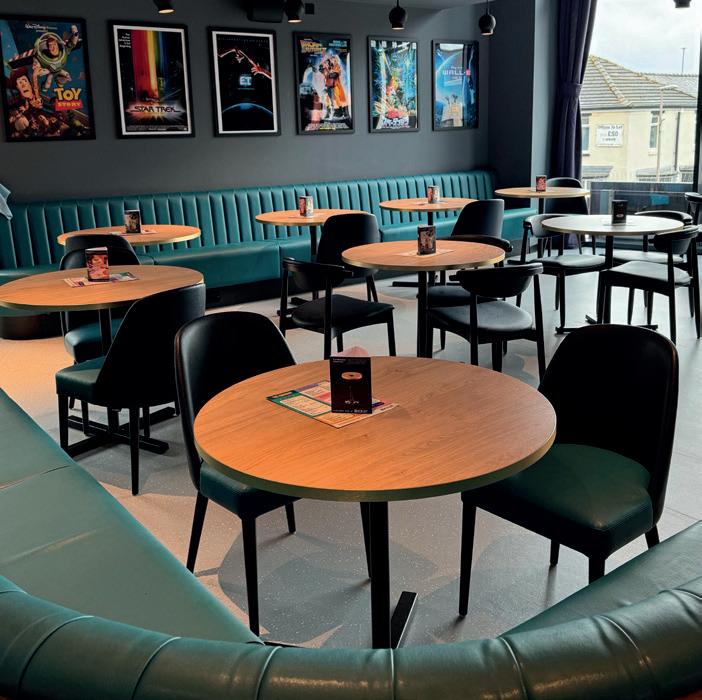
07
Barco announces first locations in the US for HDR by Barco.
16
Omdia's David Hancock looks at the cultural, social and economic values of cinema.
20
Slate diversity is helping stabilise European box office, explain Lucy Jones from Comscore.
23
How laser got to cinema. We take a look back at the long road with "The Laser Guy", Bill Beck.
28
A look at the new imaging technologies showcased at CinemaCon 2024 and why they simply cannot be ignored.
32
Transforming Blackpool's entertainment landscape with a technical marvel - The Backlot.
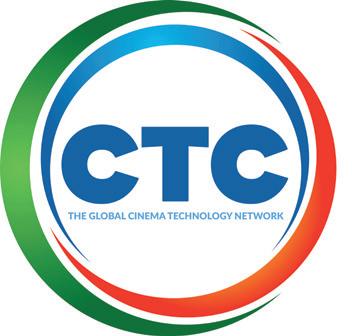
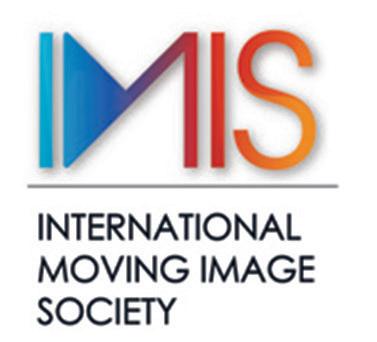

CTC PRESIDENT: RICHARD MITCHELL richard.mitchell@cinema-technology.com
ART DIRECTOR: DEAN CHILLMAID dean.chillmaid@cinema-technology.com
COMMISSIONING EDITOR: PETER KNIGHT peter.knight@cinema-technology.com
ADVERTISING: ADVERTISING TEAM magazine.advertising@cinema-technology.com
36
Easy to explain, harder to visualise, what is Metamerism and why it matters to the entire cinema community.
38
Open APIs, the pathway to optimising operations and enabling innovation.
42 The true cost savings from sustainable projects. A look at Savoy Cinemas.
46 Markus Overath presents a guide to seating manufacturers.
50
A look at Scotland's very own rapidly growing INDY Cinema.
52
With CineEurope around the corner, we take a look at what to expect from Europe's largest trade convention once again in Barcelona.
62
Former Lionsgate executive and now President of PaperAirPlane Media Mike Polydoros talks to us about the industry and his upcoming visit to CineEurope.
Cinema Technology is mailed to IMIS Members. For subscription details and to read the magazine online, visit www.cinematechnology.com or email peter. knight@cinema-technology.com
Cinema Technology Community (CTC) 124 City Road, London EC1V 2NX info@cinema-technology.com

fercoseating.com

marketing@fercoseating.com
fercoseating.my
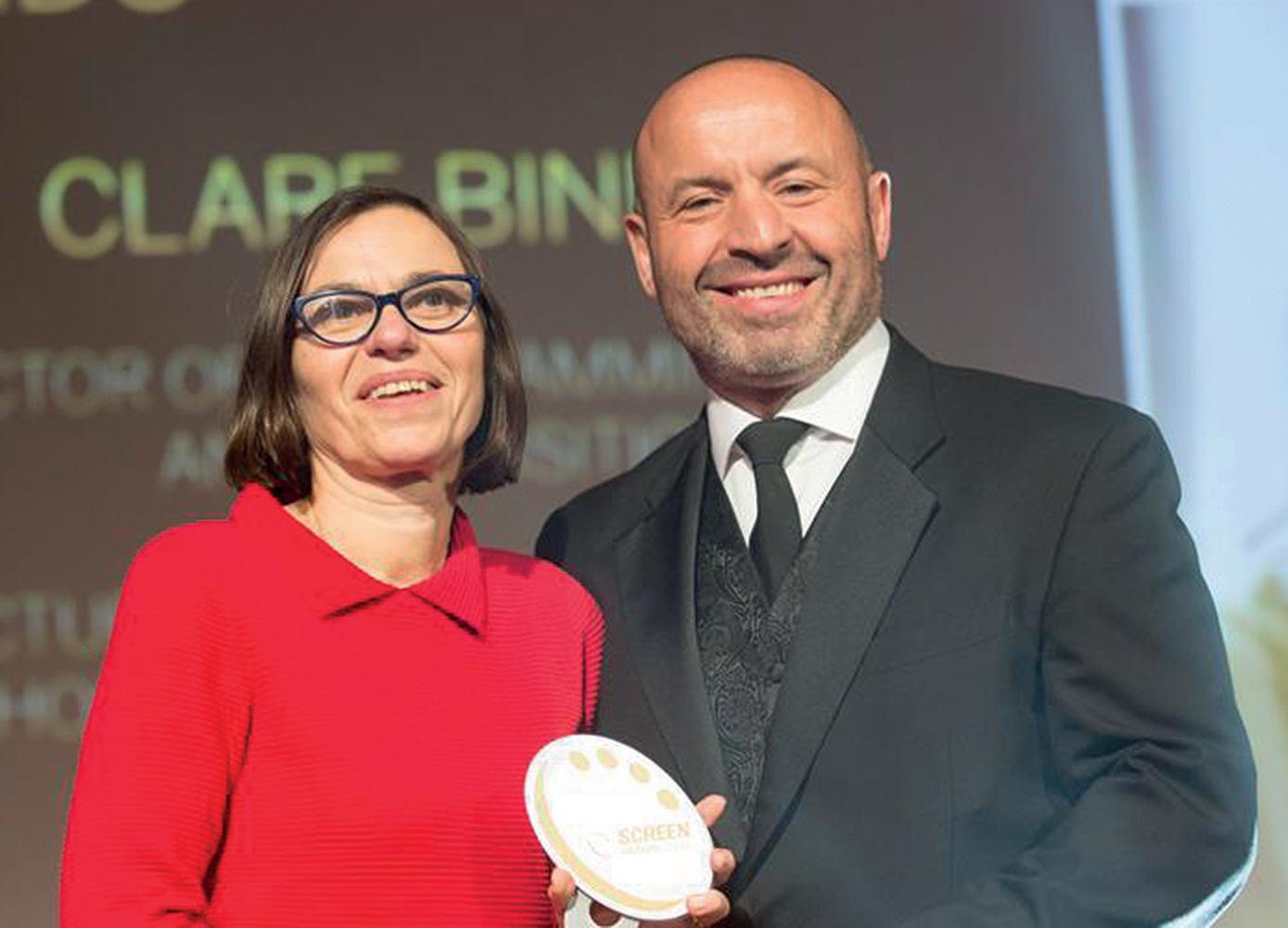
CLARE BINNS, Managing Director of both Picturehouse Cinemas and its prizewinning distribution arm Picturehouse Entertainment, has been named as the 2024 recipient of the UNIC Achievement Award, given each year in recognition of outstanding dedication and service to European cinema exhibition. The Award will be presented as part of the CineEurope Awards Ceremony on Thursday 20th June at the Centre de Convencions Internacional de Barcelona (CCIB) in Barcelona, Spain.
Clare Binns has for over 40 years dedicated her career to the cinema industry, with a particular passion forand commitment to - bringing world cinema to local audiences.
From her start in the 1980s as a cinema usher, to projectionist, cinema manager and now Managing Director,
Clare has constantly sought opportunities to enhance the cultural and social value of cinema and in recent years has successfully overseen the expansion of Picturehouse Cinemas, the company now operating 28 welcoming and innovative neighbourhood cinemas in the UK, somewhere you’re always likely to find Clare enjoying a film.
Her unparalleled dedication has been celebrated on numerous occasions: in 2009 she received the WFTV Contribution to the Medium Award, in 2010 she was ranked 70th in the Guardian Film Power 100 list and in 2015, as well as winning the Screen Awards Exhibition Achievement Award, Variety named her as one of the 25 individuals driving the London entertainment scene. Her continuous involvement in both the London Film Festival Industry Liaison
Committee and the BAFTA Learning and Events Committee is further proof of her deep commitment to the industry.
Welcoming the announcement of the Award, Phil Clapp, President of UNIC said:
“We are absolutely delighted to honour Clare at CineEurope 2024. The Award recognises her incredible passion for the Big Screen, her outstanding career and her key role in developing not just the UK cinema sector, but an influence that goes far beyond the boundaries of her home nation. Clare’s contribution to cinema programming and audience development have been widely recognised, and her leadership continues to shape the industry.
On behalf of the UNIC Board and colleagues from across the industry, I would like to congratulate Clare for this wonderful achievement.”
BARCO, the leader in laser-powered cinema solutions, announced at CinemaCon a plan to bring HDR by Barco to select high-profile theaters at AMC Theatres, B&B Theatres, and Regal Cinemas in the US. As part of the program, moviegoers in Los Angeles, New York, Dallas, and other major markets will be among the first to experience first-run titles mastered for HDR. The installs are part of a commercial pilot program which will bring the company’s groundbreaking laser HDR lightsteering technology to moviegoers in time for the 2024 holiday season. HDR by Barco is the company’s premium projection offering, delivering moviegoers an HDR cinema presentation that is unlike anything else. Based on the company’s patented lightsteering technology, Barco’s HDR works by strategically redistributing light on screen for images over 6x brighter than traditional cinemas. Barco officially launched the new product line during the first day of CinemaCon in Las Vegas.
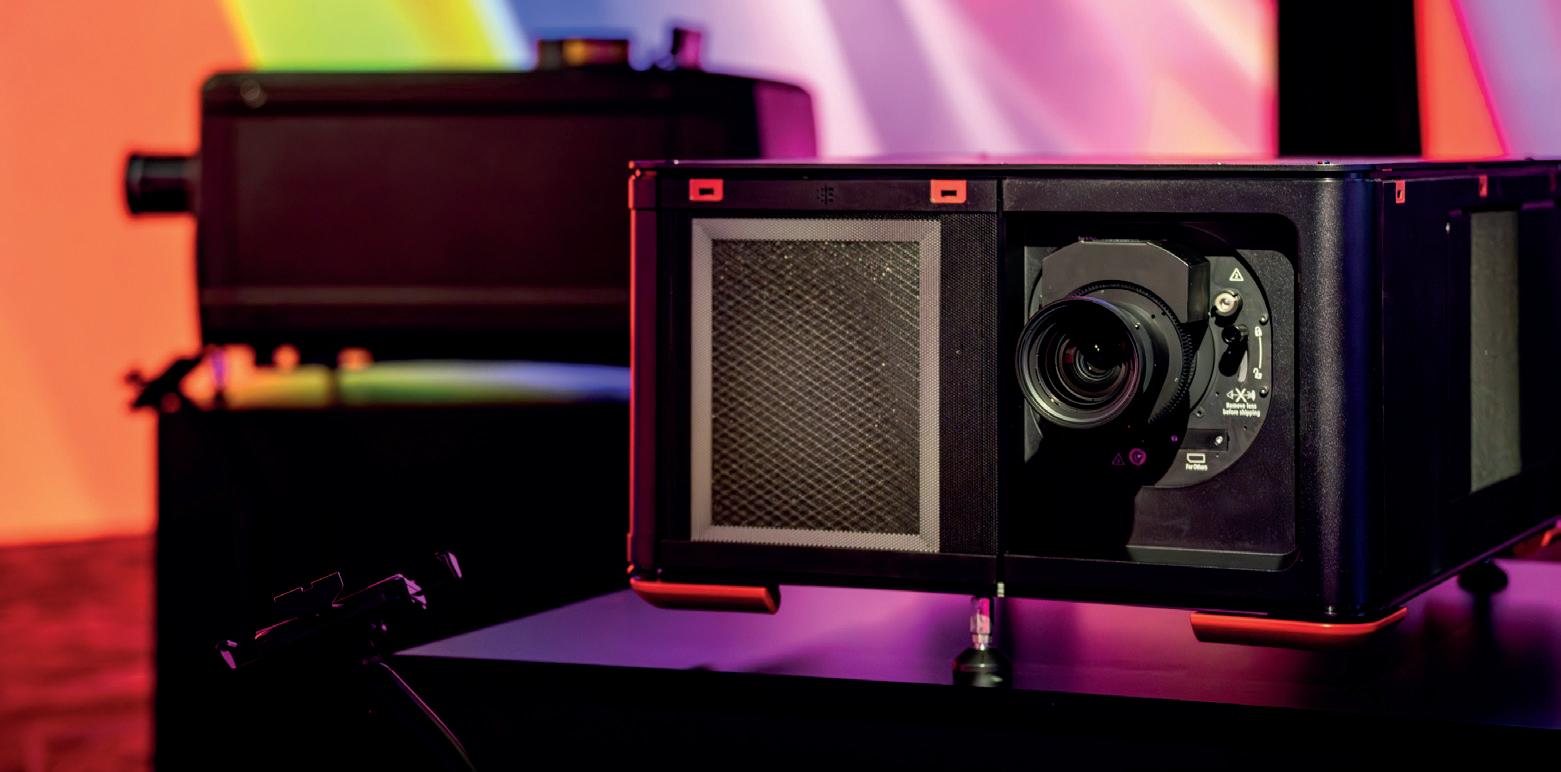
More than just a projector, HDR by Barco is an ecosystem for HDR theatrical entertainment that includes projectors for exhibitors as well as complimentary technology and software toolkits for post-production professionals and filmmakers. Together, the HDR by Barco system enables filmmakers to create and exhibitors to deliver movies the way filmmakers intended for an unparalleled moviegoing experience for audiences.
The HDR by Barco pilot program will open in cinemas on September 1, 2024 and runs through the end of the year, with rollout of HDR by Barco permanent sites expected in 2025. The company is currently working with the leading post-production houses for theatrical content to outfit them with HDR by Barco and prepare a slate of remastered HDR titles.
BARCO, the leader in laser-powered cinema solutions, launched HDR by Barco, its HDR solution suite for the cinema industry, at CinemaCon in Las Vegas. The highly anticipated projection ecosystem will be the first to make the company’s groundbreaking HDR lightsteering technology commercially available to cinemas.
HDR by Barco offers a premium cinema solution leveraging Barco’s patented lightsteering projection technology to deliver HDR presentation through the strategic deployment of light on screen. Barco’s HDR offering is designed to enable a seamless content pipeline from post-production to theater screens, ensuring that audiences see movies the way filmmakers intended. The thoughtfully designed product suite includes
projectors for exhibitors as well as complimentary technology and software toolkits for studios and post-production professionals.
Lightsteering, the laser projection technology at the core of the HDR by Barco eco-system, delivers a visual experience that is unlike any other HDR system on the market today. The revolutionary Barco HDR Lightsteering projector steers light to specific focal points within each frame, resulting in brighter highlights and deeper darks for rich, brilliant, high-contrast images.
”With lightsteering, we set out to create an HDR technology that would drastically improve the presentation of movies and storytelling onscreen,” said Gerwin Damberg, EVP of Barco Cinema. “We’re excited to bring
HDR lightsteering to the market now in Barco’s high dynamic range ecosystem. HDR by Barco is a premium solution for movie exhibitors that gives filmmakers a wider creative canvas and enables a new level of storytelling.”
After years of innovation, testing, and collaboration with the creative and exhibition community, Barco’s vision for HDR has grown into a full ecosystem of solutions to enable a seamless workflow from content creation to onscreen presentation.

HARKNESS Screens, one of the world’s premium cinema technology companies, unveiled its brand new fifth generation 2D/3D screen technology, Hugo SR at CinemaCon 2024.
The result of more than five years of research and development alongside projector manufacturers, educational institutes, global exhibition and the Hollywood community, Hugo SR has been designed to support and leverage the benefits of all types of laser projection including RGB. “Over the past few years we have seen the laser projection install base grow significantly across the globe. Whilst laser projection has so many tangible benefits, our customers, wider exhibitors and partners have turned to us to provide a dedicated screen solution that can enable them to leverage the benefits of this new technology to its fullest including, higher contrast, HDR (high dynamic range) and WCG (wide colour gamut). Hugo SR, is the first engineered screen designed specifically
with laser projectors in mind. With in-built characteristics that reduce visible speckle and improve contrast, Hugo SR provides exhibitors with a means to fully utilise laser projection technology creating even more compelling and captivating movie presentations,” explains Laurent Espitalier, CTO at Harkness Screens.
Laser speckle, most visible with RGB projectors (but also present, although less visible with other projection technologies) has been a concern for exhibitors looking to leverage laser projection. Hugo SR has been engineered to significantly reduce visible speckle by up to 30% compared to traditional high gain silver and white screen surfaces. The unique properties of Hugo SR allow exhibitors to deploy higher gain surfaces alongside RGB projectors without the requirement for expensive transducers whilst creating a level of assurance that laser speckle will not interfere with the viewing experience for the majority of moviegoers in the auditorium.
The unique surface coating properties of Hugo SR
help to improve contrast by up to 15% compared to traditional silver and white screens creating more vivid colours with blacker blacks and whiter whites. Although a polarised 3D screen, the underlying technologies create a truly whiter surface which looks more similar to Harkness’ industry leading white gain (Perlux HiWhite) screens on axis. This optically whiter surface helps to diffuse visible hot-spotting and create the appearance of a more uniform finish from centre to edge.
“We’re excited to begin the roll-out of Hugo SR technology around the world,” explains Mark Ashcroft, CEO at Harkness Screens. “Hugo SR creates a new technology platform for Harkness and a new industry standard for laser screens. At Harkness, we continue to invest in research and development teams and are already working with our suppliers and partners developing further 2D and 3D screen technologies that already show signs of being able to virtually eliminate visible speckle whilst retaining the gain profiles exhibitors require in order to financially manage their shift from xenon-based projectors to laser. We feel we’re on the cusp of something transformational for the entire industry” he concludes.
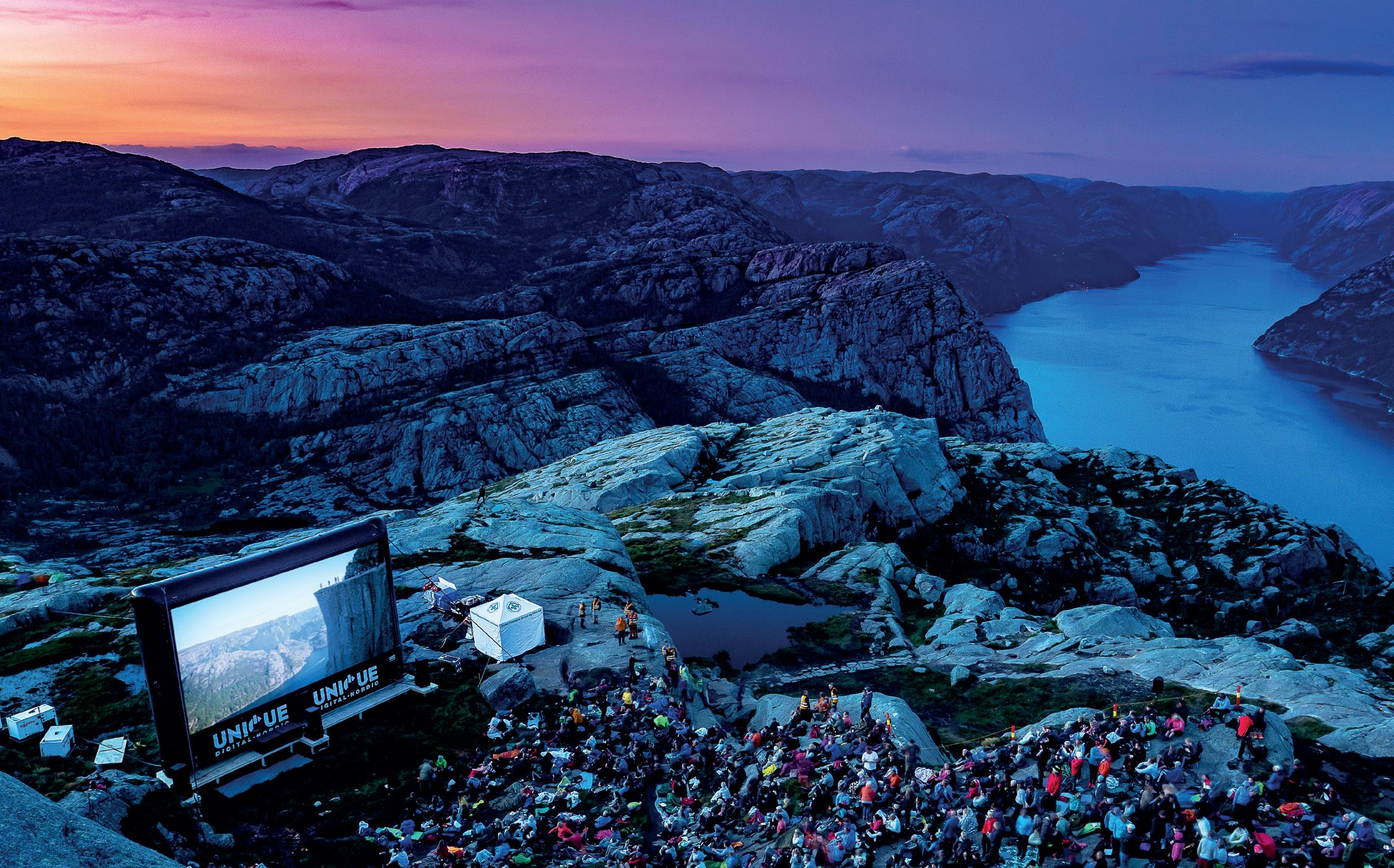




Powersoft’s ultra-flexible Quattrocanali amplifier platform is central to a recently completed Dolby Atmos install at Cineplexx Westfield SCS, a luxury multiplex.
FORMER Cineplexx Westfield SCS is at the heart of Vienna’s Westfield Shopping City Süd (SCS). Following a complete refurbishment, the premium multiplex partnered with CinemaNext to introduce a blend of premium audio and projection technologies in every room.
Among the ten state-of-the-art rooms, six are equipped with Dolby Atmos immersive sound, with two rooms benefiting from the powerful performance of Powersoft amplifiers. The UNIQUE room, seating 254 people, has rows of seats arranged in a freestanding U-shape, centred in the middle of the room, providing the best view for everyone, whereas the ULTIMATE room has a standard layout and features Dolby Atmos sound.
The two rooms rely on Powersoft Quattrocanali 1204, 4804 and 8804 amplifiers to drive five Dolby System 133 three-way screen speakers and handle bass management. This strategic choice reflects Quattrocanali’s versatility, the amplifier catering to small-to-medium scale installations with unparalleled flexibility. Quattrocanali also features
Powersoft’s patented SRM (Smart Rail Management) technology, which recycles the reactive energy coming back from the loudspeakers, helping overall power consumption and reducing heat dissipation, thereby cutting operational costs and making it perfect for the eco-conscious cinema.
“We chose the Quattrocanali amplifiers due to their power output meeting the demands of the Dolby Screen system in the two rooms,” explains Christof Federle, CinemaNext’s general manager in Austria. Another reason the amplifier platform was selected, was due to its integration with the Dolby processor via AES67, as well as for its power consumption efficiency, high audio quality and power density.
Installed discreetly in a rack room behind each screen, where the projector and Dolby processor are located, the Powersoft amplifiers seamlessly integrate with Dolby CP950A for Dolby Atmos certification by using AES67 connectivity, providing an immersive cinematic journey for rooms two and three.

ARTS Alliance Media (AAM), the global leader in digital cinema software and support, has launched Lifeguard Pro, its latest theatre hardware management tool designed exclusively for integrators and Network Operation Centre (NOC) support teams.
Complementing the intelligence of Lifeguard, AAM’s recognised hardware management system that enables exhibitors to oversee their organisation’s devices and consumables, Lifeguard Pro empowers integrators and NOCs to take a panoramic view of their full client network. With access to monitor and manage each exhibitors’ assets remotely, technical support teams can obtain a greater understanding of their clients’ hardware requirements and resolve unexpected issues fast and effectively.
“Our software works to elevate the audience experience. By working alongside our trusted integrator network, we're thrilled to introduce a dedicated solution that provides them with extensive hardware management and monitoring capabilities to strengthen support operations”, explained David Ong, Chief Commercial Officer at AAM. Available from April 2024, Lifeguard Pro empowers users to seamlessly navigate their exhibitors' sites and screens with unparalleled efficiency, consolidating inventory management, warranty tracking, maintenance alerts, and technician scheduling from one centralised hub. By providing users with astute insights and a comprehensive overview of their network, Lifeguard Pro elevates service standards, enhances data accuracy, and optimizes consumables procurement, leveraging economies of scale to bolster margins.
With seamless end-to-end integration into AAM's esteemed software suite, Lifeguard Pro effortlessly integrates with any TMS, server, or projector system, eliminating installation barriers and ensuring a hasslefree experience for users.
William McMorrow, Director of Product and Design at Arts Alliance Media, added “Lifeguard Pro heralds a new era in asset management and support operations, reinforcing integrators and NOCs in their mission to service clients ‘like a Pro’. By mirroring the meticulous reporting and device monitoring capabilities exhibitors enjoy with Lifeguard, support networks can revolutionise their approach, improving their quality in response, enhancing efficiency, and ensuring seamless operations for all stakeholders.”

DIGITAL Cinema Media (DCM), a leader in cinema advertising, recently unveiled 'AV Reach Maximiser', a groundbreaking optimisation tool developed in partnership with RSMB, the Institute of Practitioners in Advertising (IPA), and attention specialists Lumen. This pioneering tool empowers media planners to gain deeper insights into the benefits of integrating cinema into the AV mix, streamlining the planning process for advertisers and agencies.
Users simply select their key demographic (e.g., 16-34s, ABC1 Adults), input the budget or ratings objective, and add additional channels alongside cinema (e.g., TV, BVOD, Online Video). The tool instantly generates the optimal budget/ ratings allocation to maximise reach within the selected target audience, providing three key performance indicators (KPIs):


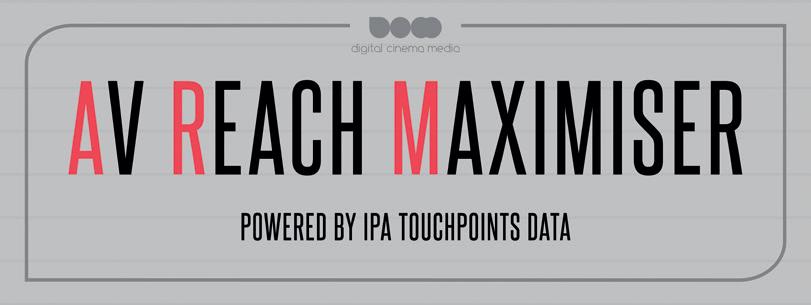
1. Total Reach % achieved by the optimised allocation
2. Incremental Reach % attributed to cinema
3. Attentive seconds uplift from cinema
While the tool yields scenario-specific outputs, it underscores key insights indicating where cinema adds the most value to the plan. Notably, cinema is recommended to maximise reach, particularly when targeting 16-34 and ABC1 audiences. For instance, the average recommended budget allocation for cinema to optimise 16-34 reach is 11%*.
Karen Stacey, CEO of DCM, commented, "At DCM, we are committed to advocating for cinema's inclusion within the AV mix and strive to simplify the process of incorporating cinema into media plans”.
Sophie Gale-Evans, Client Director, DCM,



added: “The fragmentation of the AV marketplace, particularly for young audiences, has been well documented, and concurrently marketers and agencies are leveraging an ever-increasing amount of data to increase the relevance of their communications. Whilst this has added complexity to the planning process, there is also a huge opportunity for brands to ensure their campaigns are reflective of audience behaviour.
Tom Kislingbury, Vice President Strategy at EssenceMediacomX, stated, "DCM's new tool presents an alternative perspective on media channel planning. Balancing attention, reach, and frequency is critical, and this tool provides a swift and easy method to navigate those considerations."
To access the tool, please visit: https://www.dcm. co.uk/avmaximiser

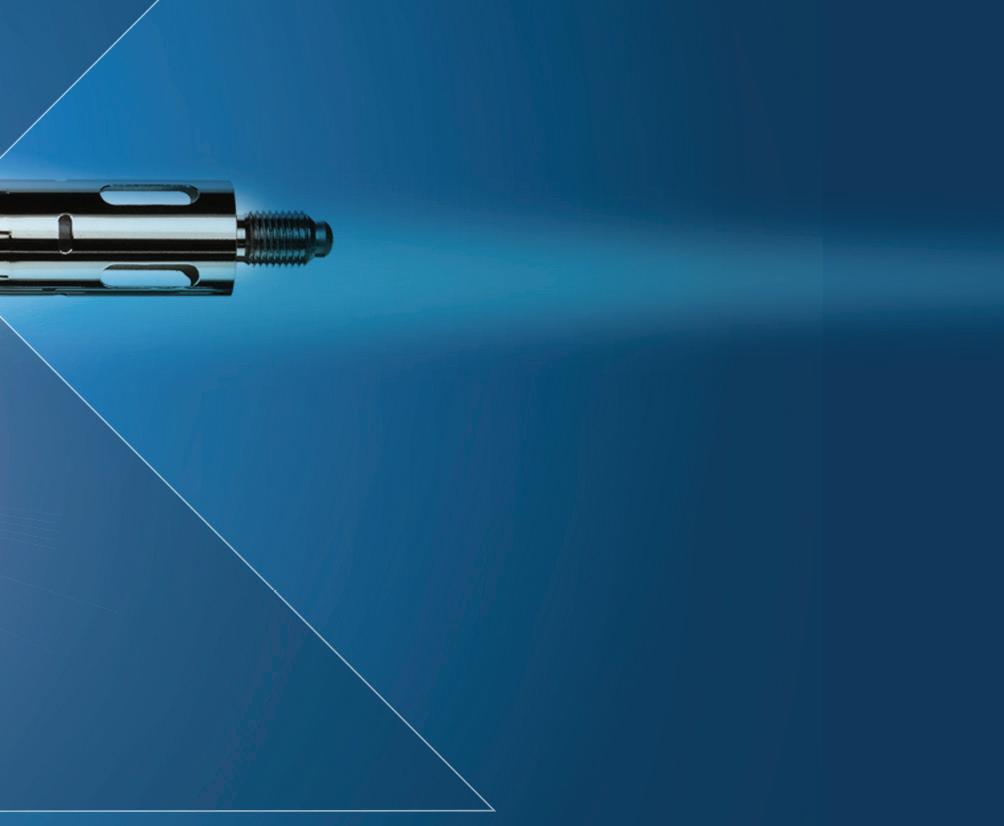

GRAB your popcorn and favoruite drink as LEA Professional unveiled its all-new Cinema Digital Series of IoT-enabled smart amplifiers that join the company's extensive technology catalogue featuring intelligent IT solutions, best-in-class DSP, and smart power management. The Cinema Digital Series made its red carpet debut at CinemaCon 2024.
The nine Cinema Digital Series models support two or four channels, with wattages ranging from 350 to 1500 watts per channel. All models can integrate with the Dolby Cinema Processor CP950 and include AES67 primary and secondary inputs, analog backup inputs, and the ability to accept AES67 feeds directly from a CP950 without requiring additional hardware, ensuring superior connectivity and flexibility.
Not only does LEA Professional deliver the thundering audio movie theater audiences demand, but the company also provides integrators and exhibitors unbeatable value with an industry-leading 6-year warranty for US customers and a 5-year international warranty.
LEA amplifiers feature a tamper-resistant design that eliminates front panel controls and ensures security, while intuitive user interfaces like WebUl and SharkWare expedite installations. All Cinema Digital Series amplifiers have three connectivity options — wired, access point, and Wi-Fi — for unmatched versatility and ease of use. Users of the Cinema Digital Series can also enjoy remote control and monitoring thanks to the LEA Cloud.
This allows integrators to receive notifications and monitor their projects from anywhere in the world on any internet-enabled device, offering the utmost level of flexibility and accessibility.
“People go to the movies to escape and relax for a few hours. Ensuring the entire experience, including the film’s audio, is pristine can make a world of difference,” said Brian Pickowitz, VP of Marketing at LEA Professional. “The Cinema Digital Series is positioned to simplify and improve integrators' and cinema staff’s audio experience while simultaneously immersing moviegoers in lush audio like never before.”
To learn more, visit: https://leaprofessional.com/.
Arts Alliance Media (AAM), the global leader in digital cinema software and support services, has announced a new software agreement with AMC Theatres, the largest theatrical exhibitor in the United States and the world.
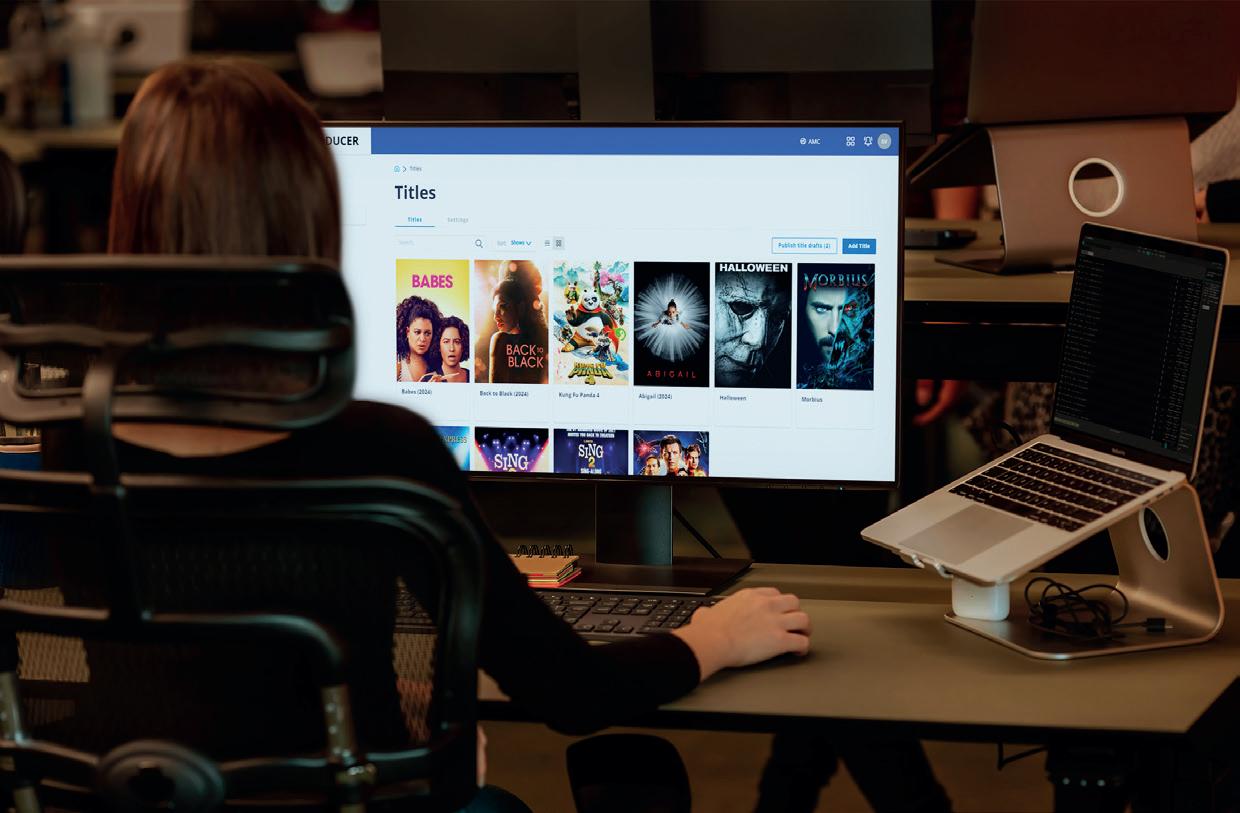
AFTER selecting AAM’s Screenwriter as their Theatre Management System (TMS) of choice in 2022, AMC has now added Producer, an innovative Enterprise TMS, to their operational toolset as they seek to centralise essential workflows from a single dashboard at AMC’s Theatre Support Center.
“In securing this agreement with AMC, we are proud to showcase Producer’s robust functionality alongside our wholly committed technical support team. This agreement stands as a testament to the dedication of the entire AAM team," commented Peter Kim, VP of Global Sales at AAM.
Producer, a content management tool that harnesses Screenwriter’s sitelevel data, enables exhibitors to streamline circuit-wide operations by facilitating versatile content control, comprehensive network visibility, and extensive automation, including automated playlist creation and scheduling. Combining the pioneering
automation of Producer with Screenwriter’s globally recognised feature set, AMC is well-equipped to continue building operational efficiency, which helps create unforgettable movie-going experiences.
“We’re excited to unveil our latest collaboration with AMC: a cutting-edge trailer campaign application and new centralised content management capacities for Producer,” added William McMorrow, Product Director at AAM. “Together, we are setting new standards in the entertainment industry, ensuring that Marketing and Operations teams have the tools and automation they need to reach the right audiences and maximise the quality of every presentation.”
By extending their agreement with the world's leading cinema chain, AAM continue on their quest to empower the foremost exhibitors globally while underlining their exceptional software capabilities and commitment to driving industry innovation.

A CHRISTIE® CP4435-RGB pure laser projector is bringing screenings to life at a unique new cinema experience at Ōma Cinema in Mougins, France. Inspired by traditional Italian-style opera house balconies – and resembling a futuristic sci-fi layout – Ōma Cinema features innovative architecture, utilising circular seating pods as part of a premium auditorium concept

to improve viewing. Christie partner Cinewest chose the CP4435-RGB projector to deliver advanced DCI compliant cinema projection, paired with a custom 7.1 sound system.
"We wanted to bring something different and offer viewers something special as part of a premium in-person visit, which couldn't be replicated at home," says Nicolas Chican, co-founder at Ōma Cinemas. "We saw a lack of evolution in cinema design in recent decades and felt that architecture could be a powerful tool to deliver something unique. We are manufacturer agnostic, but we were pleased with the Christie projector that was chosen by our client, as it has excellent contrast ratio, high brightness and an impressive colour spectrum. It's not just about architecture, it's about the whole experience, and we can't wait to see what customers think."
Ōma Cinemas in Mougins is the first ever Ōma install, and features 160 seats, with five individual pods, as well as orchestra seating. Designed by architect Pierre Chican, the patented concept's 'vertical' seating structure is designed to concentrate seating pods in the optimal viewing area, moving the traditional 'first row' seats further back in the theatre, and the 'back row' seats closer to the screen. Thanks to the radical design, the projector is also able to be installed perfectly mid-centre to the screen, eliminating image distortion.
Christie CP4435-RGB features CineLife+™ electronics and Real|Laser™ illumination as a compact, all-in-one projector which excels in image quality and operational lifetime while providing a low total cost of ownership. Thanks to its RGB pure laser illumination, colours are vibrant and detailed, delivering true-to-life images.
"We're delighted that Cinewest chose the Christie CP4435RGB for this exciting project at Ōma Cinemas in Mougins, which will deliver outstanding visual performance," says Adil Zerouali, senior director of sales, EMEA Cinema, at Christie. "We believe that cinema delivers a shared experience like no other, and we want to inspire and engage moviegoers together with our partners. It's great to see innovation in the industry, and I'm sure that this bold concept will excite moviegoers."
The Ōma concept is fully customisable, and is available to be rolled out to other screens across the globe, to either renovate existing theatres, or be built from scratch. Each pod features its own unique access point, and is customisable with different seating configurations and comforts. It is also possible to incorporate a stage beside the screen to allow an Ōma room to be used for live events and conferences. Rear access ensures no visual distractions – such as signage or other exits – intrude on the viewer's perspective. Thanks to the more vertical seating structure, space is saved at the rear of the screen, providing room to locate dedicated food and beverage areas and lounge bars. The first public screening at Mougins took place in late April 2024 to much acclaim.
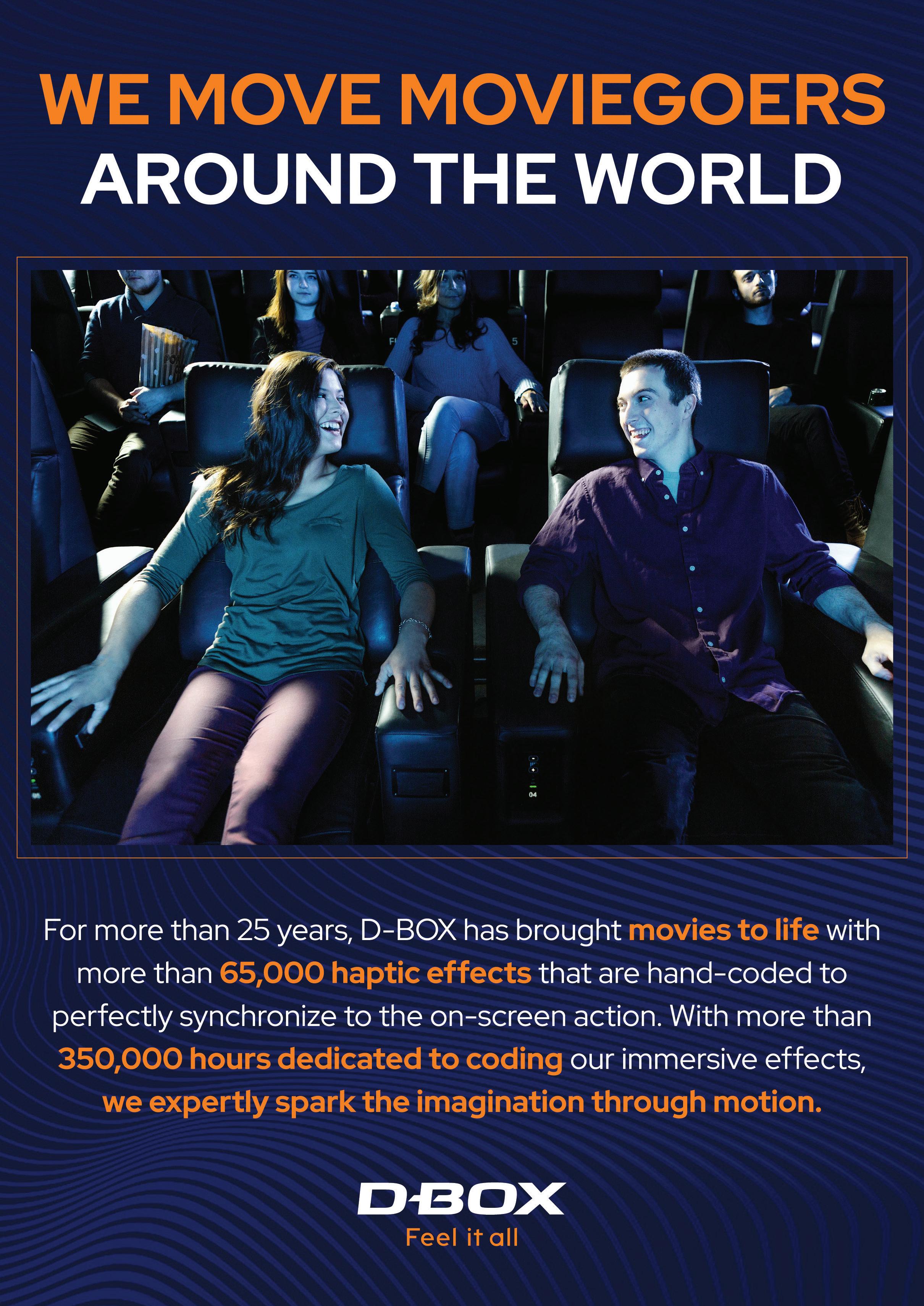
In late 2023, I was approached by three European organisations (CICAE, Europa Cinemas and UNIC) to write a report on cinemas. They gave me a view of what type of report they wanted but no specific brief other than “not too much data please David”. Clearly, they knew me quite well. This report, titled “Beyond the box office: the cultural, social and economic value of cinema” is now published and available to read.
s a cinema analyst for over 30 years, the most frequent question I have been asked since the late 1990s is “When is cinema dead?”, as if this was a foregone conclusion. The answer obviously is it’s not dying. Since that time, feature film production has doubled to 9,000 films a year, the number of modern cinema screens has more than doubled to 215,000 screens worldwide and global box office had almost trebled by 2019. For a dying medium, it is certainly taking its time about it. As I was finishing it off, it occurred to me that the report was actually a culmination of 30 years as a cinema analyst, bringing together all the various ways I have answered that question over the years and grouping them into the reasons why cinema is still going and still vibrant as an art and a media.
Cinema is one of the most popular activities across Europe, one of the primary hubs for cultural exchange, local community activity, a central plank in the health of the entire audiovisual industry, a mainstay of our social activity for over 100 years and
one that is evolving with the acceleration of new technology and societal change.
Across Europe in 2023, there were very nearly one billion visits to the cinema, down from the peak of 1.36bn in 2019 and well on the way to coming back. Of these, nearly a quarter of a billion visits were to domestic films in each country. There are just under 40,000 screens based in 12,300 cinemas in Europe in 2023, employing close to 100,000 people in France, Germany, Italy, Spain, and UK alone, a significant number of people enjoying an interesting and varied career, not to mention all the people engaged in supplying (or indeed analysing) cinemas around the world. Film is often referred to as the Seventh Art, the other six being Architecture, Sculpture, Music, Performing Arts, Literature, Visual Arts. The oldest of these Arts (Sculpture) dates back arguably around 800,000 years, and the newest (excepting film) is around 3,500 years (the earliest recorded piece of music). This shows how young film as an artform is, beginning with the first public screening by Lumiere Brothers in 1895.
When set against the other arts, cinema is thus very new. But when set against other media, film can seem old given the pace of media innovation, but it was also the first screen medium, showing the way for future technologies. It represents a pivotal point between art and media. Both as art and media, cinemas are as relevant today as they have always been, providing a diverse cultural outlet to their community as well as launching films into the audiovisual chain.
Cinema has a central place in the media economy of the future, as an out-of-home leisure and cultural experience but also as the dominant launchpad for both large and small films. Films with an exclusive theatrical window perform better on
the following windows too, but also films released theatrically in more than one territory are more likely to be available on more VOD platforms according to a recent EAO study. Cinemas act as the main value creator for rights holders in a way that no other release window can, and if cinemas didn’t exist, we would need to invent them.
As streaming challenges television for viewers in the home, and the mobile phone makes media transportable, the way we consume film and audiovisual content is evolving, but as the oldest screen medium, cinemas have had to constantly innovate to remain relevant for many years. A sector that does not evolve would not have lasted for as long as cinemas have. Outside of technology innovation, cinemas are experimenting with subscription models, all-you-can eat models, membership schemes, dynamic pricing (flexible pricing based on demand), and other business models to find the right way forward for them and for their audiences. A relevant example of this is the Dutch Cineville Card, which brings together 70 arthouse cinemas in the country, offering an unlimited viewing pass. The sector is also embracing data and analytics, generated from these new models to understand and engage better with their audience.
Cinema acts as a mirror to our own cultures and other cultures, reflecting back stories that describe, shape, and illuminate our own experiences. Around Europe and the world, producers are making a wide variety of films (around 9,000 a year). It is the cinema that selects and curates films, communicates with audiences, and ensures that this diversity of film production finds its audience. The cinema is the place where smaller films come alive and remain alive. The cinema is a place to see a variety of stories, and curated cinemas offer a chance to see stories that might not be shown elsewhere. This is important for community cohesion, allowing under-represented groups to see themselves portrayed on the screen, and fostering mutual understanding and respect for other values and perspectives.
The heart of the cinema sector remains the socialised nature of the viewing experience and the place where a film is shown for the first time. Watching together as a shared experience has positive influences on our emotional wellbeing and connectedness, and there are numerous pieces of research
Since the mid 1990’s feature film production has doubled to 9,000 films a year
showing that sharing an experience enhances its intrinsic value, even if the participants do not communicate about the experience itself. A BBC report also found that we are 33% more focussed when watching on the big screen versus the small screen. Watching together also reduces social isolation and offers an accessible and affordable experience for all members of society.
Across Europe in 2023, there were very nearly one billion visits to the cinema,
We share these emotions with others, as we laugh and cry, gasp and jump with fright. During a study undertaken by academics at UK’s UCL, participants were fitted with biometric sensors that measured heart rate, body temperature and electrodermal activity. On watching Aladdin together, there were found to be much stronger emotional reactions than when watching alone. The heartbeats began to synchronise and follow the film’s narrative structure. The shared experience with friends, family and strangers is intensely social. ‘Social’ is the core of cinemagoing and helps create bonds with our friends and the wider community.
A local cinema with an engaged audience is an effective vehicle for community issues and support, from wider global issues (such as climate change, sustainability, democracy, pluralism, an openness to other points of view) to more local issues (public transport, environment, supporting local food and drink suppliers). Cinemas are also a gateway into other activities in the community, and a trip to the cinema is often accompanied by a visit to a restaurant, pub, bar, local shops and other cultural/ leisure activities.
Box Office and Beyond: the cultural, social, and economic value of cinema: a report by David Hancock commissioned by CICAE, Europa Cinemas, and UNIC, available from Omdia or any of the three commissioning organisations.
While the home-based sector is advancing technologywise, what the home cannot replicate is the big screen, and this is an area where cinema has been investing, such as PLF screens and other Premium experiences. However, that experience is not just about technology, it is about offering something over and above the expected experience, including the curation of films and events.
The cinemagoer is a modern, enthusiastic consumer of all types of content, media and leisure such as gaming and VOD, and cinema attendees don’t exist in a silo away from the general population. The young people sitting at home playing video games and ordering films from VOD platforms are also
proportionally more active cinemagoers. For example, 72% of cinemagoers are gamers, compared to 51% for non-cinemagoers. For transactional VOD (TVOD), cinemagoers are twice as likely to engage with buying content on VOD than non-cinemagoers (53% compared to 27%). As for the recent move to FAST channels (free-ad supported streaming TV), 42% of cinemagoers use them compared to 27% for non-cinemagoers. Cinemagoers are also avid sports lovers, with 64% of them stating they are fans compared to only 37% for non-cinemagoers.
All is not perfect in the cinema exhibition sector, things can always be improved and there are some structural issues hanging over from the pandemic, but there are some core strengths that cinema has displayed for many years that underpin its longevity. The sector is evolving, adapting to new landscapes and behavioural patterns and will continue to do so. Readers of this excellent magazine all have one thing in common: we love cinemas and spend much of our lives trying to support the improvement of the exhibition sector in some way. As such you will understand the report’s over-riding message: cinema is a strong medium that has existed for over a hundred years for a reason (indeed many reasons). The report outlines all these reasons and more – I urge you to read it.
Going into 2024, the general mood among European cinema operators and distributors was best summarised as cautiously optimistic. While the slate didn’t appear to hold any Barbenheimer-sized opportunities, audiences were still showing enthusiasm for the out-of-home experience, particularly the enhancements like recliner seating and upgraded F&B that exhibitors have invested in.
1 2 3
Results for the first part of the year have further fuelled this mood of optimism. While trailing Q1 2023 which benefited from strong holds for Avatar: The Way Of Water well into the new year, the first four months of 2024 have shown a different kind of strength: diversity. Rather than relying on a small handful of super-blockbusters to drive ticket sales, European box office in 2024 has been powered by a much wider range of titles. This is illustrated by two contrasting patterns in the number of titles required to pass the €1 billion milestone in each year. In the first four months of 2023, €1 billion was delivered from only the top nine films (with Avatar: The Way Of Water and The Super Mario Bros. Movie contributing almost half a billion combined); in 2024, eighteen films contributed to the box office billion, showing that success can be achieved without over-reliance on single titles and offering different audiences a healthy
diversity of choice. Through this diversity, European ticket sales again topped €2 billion by the end of April, well ahead of the €1.58 billion recorded in the same period in 2022 and just 8% behind 2023. Dune: Part Two is the top release of the year so far with over €220 million of its global total coming from Europe.
Of the big five Western European territories Italy is powering ahead with a gain of 8% over last year, following a slower start to its post-Covid recovery. Over a quarter of ticket sales were for local Italian productions, led by drama Un Mondo a Parte and comedy Succede Anche Nelle Migliori Famiglie. Powerhouse France is still top, and after a relatively quiet start to the year will see its next major local releases Un P’tit Truc en Plus which opened on 1st May and Le Comte de Monte-Cristo in late June.
Most territories have also seen an increase in the number of new films released versus last year, another sign of a healthy marketplace. Breaking this down by size of release and taking UK & Ireland as a case study, all sectors are holding up except for the widest releases. Fewer titles have opened in 500+ cinemas in 2024, although the loss of revenue is smaller than might be expected: the number of titles in this group fell by 14%, but the corresponding revenue fell by only 8%. Having fewer blockbuster releases creates space for some of the smaller releases to flourish, playing in more locations or for additional weeks.
European productions (including co-productions with US studios) contribute significantly to this diversity. UK/US collaboration Wonka is the fourth-biggest among all films of 2024 in Europe, and tops the chart among local productions. It has played in almost all European territories and achieved over €67 million since January, building from its pre-Christmas release. Other titles may not have travelled so widely at this point in their release journey but still rank highly, led by Germany’s Chantal Im Märchenland and France’s Cocorico. Italy’s 2023 smash C’è Ancora Domani has played in ten other European territories so far, adding another €8.3 million to its home result. Japanese productions are also making more of an impact in Europe, with Perfect Days in the 2024 chart and many anime releases playing widely.

At the start of May, driven by the stronger than predicted Q1, forecasters Gower Street Analytics raised their full-year 2024 global box office estimate from $31.5 billion to $32.3 billion. The bulk of this gain, $550 million, is expected from the International markets (excluding China), and a further $200 million from North America. While $32.3 billion would represent a small decline from full-year 2023 results, that year achieved an $8 billion jump from 2022, up over 30% thanks in large part to the unexpected Barbenheimer summer triumph. Summer 2024 should also have some surprises in store, with family animations looking particularly strong and Deadpool & Wolverine the sole focus for superhero fans, but lacking a Barbie equivalent release for female audiences. The smart money is on Q4 to deliver the year’s chart-topping releases, kicking off with Joker: Folie A Deux in early October, running through a packed November with Paddington In Peru, the Gladiator sequel and Wicked, and culminating with Christmas family sequels Mufasa: The Lion King and Sonic The Hedgehog 3.

“How many creative people does it take to change a light bulb? A few... a few who decide to do it; a few more to see if it can be done; a few more to try to do it and fail, spectacularly; a few more who think they are smarter than the ones who failed; a few more, that realise it might take some capital; a few more to set up labs, budgets, justifications, spreadsheets; a few more that do some interesting prototypes; a few more to critique the prototypes; a few that discover the new light bulb could be dangerous; a few more that build a moat around the light fixture with DANGER signs hanging from the ladder; a few more (lawyers) to convince those moat-builders that the new light bulbs
are not dangerous; a few more to “do the numbers”, again and again; a few more willing to share their ideas and possible ways to make the new light bulb better; a few more, to set up live demos to test the new versus the old light bulbs; a few more demos with all kinds of light fixtures; and then pretty soon its a movement. So, to all of those “few” (thousand) creative people who all helped this Laser thing happen, a BIG THANK YOU! I may not know all of you, but I do know most of you and I know it took a huge effort to dream, build, test, convince and build again. A twentyyear, overnight sensation. Of course Lasers belong in Cinema projectors! Why not? Why not, indeed.”
ontrary to belief, Bill is neither an Engineer or Scientist but has worked his entire tech career with PhD level scientists and engineers, all of whom have he describes as tutors and friends. Bill defines himself as a “synthesiser”, combining esoteric technical and material science capabilities to achieve monetisable products that enable highvalue applications. He co-founded 4 Startups in Fibreoptics including 1 that was VC-funded - Telecom and Specialty applications including high power laser delivery and sensing. After the end of the telecom boom, Bill consulted for a contract R&D company that had a specialty laser division that made an RGB laser prototypes for the US Air Force for flight simulators and the rest is history.
In 2007 he co-founded Laser Light Engines (LLE) with their head Laser Scientist and one other startup veteran in 2007 with LLE launching in 2008 right in the middle of the transition from Film to Digital - a unique milestone both personally and professionally for Bill.
“All of the cinema players were busy converting the industry from film to gigital and had very little time to research Laser Illumination, a speculative and foreign technology to the industry. Consequently, we became the Switzerland of the industry, working with all the major manufacturers in cinema and some in non cinema. We learned a lot about lasers, the interface, image quality, colour fidelity, speckle reduction and what Hollywood would require. Most of my work once LLE was funded, had more to do with convincing all the cinema stakeholders that laser was not only equal to xenon but could be better in many ways.”
“My role, reputation, nickname all came from “patiently supported” strategic business planning, product planning, fundraising, team building, demo designing and hundreds of presentations, demos and speeches over 21 years. In the process I learned a lot about lasers, yes, but more importantly, what it takes to get Hollywood to “change the light bulb”.
It is not that often that one of the cinema exhibition side ends up at the Oscars. So one can only imagine what it must have felt like for Bill to receive such a prestigious honour..
“I put the extended history up front to give you a sense of how quixotic and crazy the idea was - and how long it took. In my case, the Oscar was mainly to recognise: vision (very long) persistence (21 years and still promoting) and my ability to explain complex technical concepts and turn them into easy to understand benefits. Hollywood gatekeepers are technical, but laser was something very, very new to them. It took a long time! How did it feel? Hugely satisfying, knowing how many
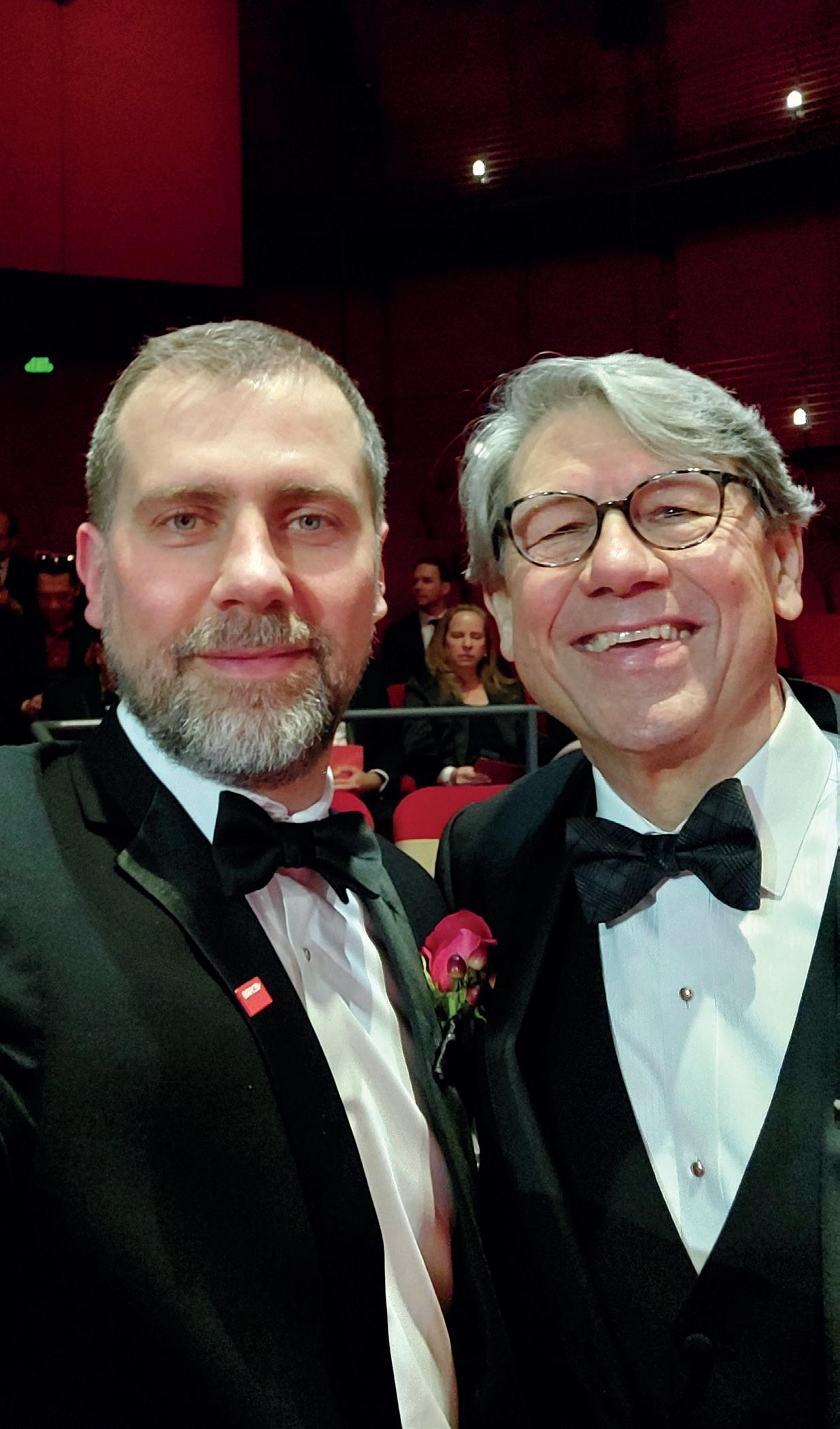
“The hardest challenge was convincing anyone that laser had a place in cinema.”
different stakeholders and gatekeepers needed to be convinced - seeing and believing. My award reads “Bill Beck’s advocacy and education to the cinema industry while at LLE contributed to the transition to laser projection in theatrical exhibition.” In other words, I was a voice in the wilderness telling anyone who would listen and many who would not, about the benefits of lasers for projection in cinema.”
Lasers have been around for a number of decades so how did we get them to be in a small box in the back of an auditorium? Many people may not know the story of the development of lasers in cinema so Bill shared that history.
“The early R&D was carried out by Sony in the 90s, small laser boutiques, such as the one LLE spun out of, government R&D for flight simulators. This phase was proof of concept as digital imaging was not even a thing yet. It took a few years before some small scale prototyping could be done in the late
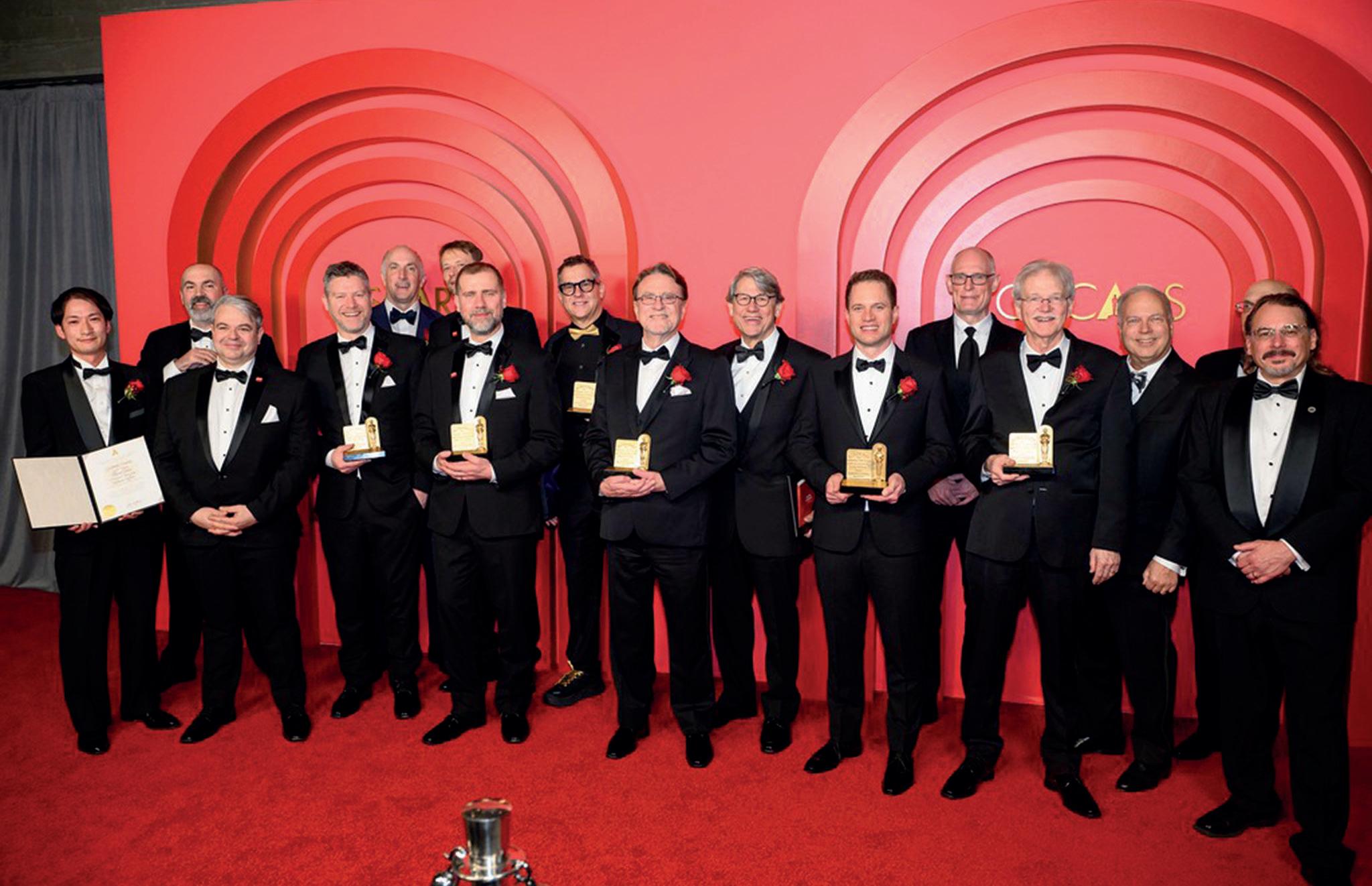
90s once electronic projectors came on the scene. The first prototype was a DPSS, fibre coupled engine into a JVC LCoS projector at 1500lms. Whilst Sony kepy working and even made a huge demo system with a 1D modulator, it was LLE that created the first cinema prototype with an early NEC DCinema projector. Once the digital rollout got underway, the 4 cinema projector brands (NEC, Christie, Barco and Sony) along with Dolby and IMAX began to do their own research. There were of course huge breakthroughs along the way with leading laser manufacturers such as Nichia finding ways to harness technology (such as blue diodes) at lower costs making laser technology more of a reality.”
Laser projection sweeps the TechOSCARS LLE, NECSEL, Nichia, IMAX/Kodak, Barco, Christie/Dolby
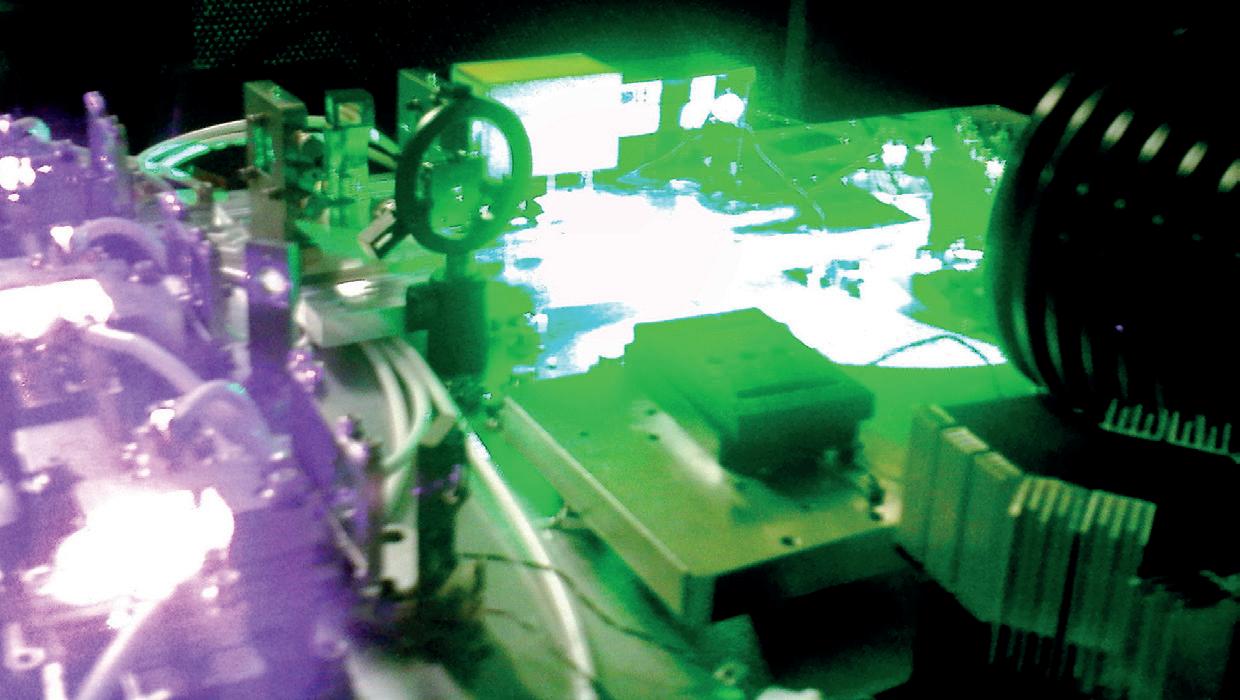
Bill left LLE at the end of 2013, took a short break and then got hired by Barco to be “The Laser Guy” starting a 4 year global laser education initiative. He left Barco at the end of 2017 and has since been supporting LIPA (the Laser Illuminated Projection Assocation) that he helped co-found in 2011 to rationalise laser safety regulations in cinemas.
Cost was the most significant obstacle in developing laser light sources for cinema. When Bill and the team started there was no efficient or cost effective solutions for blue. Nearly all green sources were based on frequency doubling of 1064nm or 1053nm IR lasers which made them inefficient and very narrow linewidth which created massive speckle and red diode wavelengths are not ideal but physics dictates. At the start, no one company made all three colours so had no real incentive to make one leg of a three legged stool (RGB). For example. it’s taken Nichia 20 years to figure out how to make all the elements such as green and now to make their own red in house. The market potential for semiconductor lasers, in cinema is still relatively small market in terms of unit volume. If not for LEDs in lighting, the scale of GaN semiconductors would not be there to make cost effective lasers.
“The hardest challenge was convincing anyone that laser had a place in cinema. Aligned to this, Hollywood tends to be risk averse and doesn’t like change and outside of VPF, there’s never been a real mechanism to adopt a big new technology globally so finding funding was next to impossible.”
“In what ways has laser technology reshaped the economics of cinema exhibition?” Laser reduces Total Cost of ownership by up to 40% for exhibitors. The 3 big drivers are:
REDUCED DIRECT POWER CONSUMPTION.
Efficiency has improved at all levels of the system and will continue to improve as both device efficiencies (electrical to optical conversions) and integration of devices and optics improve. As power costs continue to rise, this has become more compelling each year.
REDUCED INDIRECT POWER CONSUMPTION.
For every improvement in efficiency, there is a corresponding decrease in waste heat that has to be removed, simplifying and de-costing facility HVAC capital and operating costs.
ELIMINATION OF LAMP REPLACEMENT HARDWARE, TRAINING, LABOUR AND DISPOSAL COSTS
The bigger the lamp the bigger the savings.
“How has the audience’s viewing experience been enhanced by laser projection?” Laser has enabled many ways to enhance the viewing experience.
From brighter images closer to the higher end of the DCI specification (14fL +/3fL) through to consistent brightness over time, support for HDR, wide colour gamut, and better 3D.
“My personal belief is that laser can and often does enable more spatially consistent brightness and colour performance. It sets higher expectations in the minds of the movie-goer when choosing which theaters to see important movies on and the energy efficiency of the system is something some movie theaters are actually promoting.”
Overcoming the scepticism surrounding laser technology was always going to be difficult, especially given that the industry had been through such an enormous change with digitsation.
“Frankly, we overpromised to our investors and the market but kept making incremental progress on all fronts, and year by year we converted more and more sceptics. I joined the DCI-28 standards committees to make sure every member heard the word laser at every meeting from 2003 on and helped to develop an encoding standard that anticipated the wider color gamut that laser can support (Rec.2020). Showcasing the technology was important so we conducted many demos in our labs for all the studios, key exhibitors, cinematographers and thought leaders. Early and constant lobbying with the likes of Texas Instruments, Sony, IMAX and Dolby as technical thought leaders and generally teaching all the projector manufacturers until they took off on their own. We even convinced leading 3D companies such as RealD and Dolby, (the two major 3D approaches) that laser could boost 3D brightness and image quality during the heyday of 3D.”
Now that laser is here and its footprint in cinema is increasing, where does the technology go?
“At the device level, there are quite a few. Higher output

Early LLE prototype for 60,000+ Lumen RGB light source to test ultra high input power impact on DLP, LCoS chips, lenses and optics. Photo courtesy Bill Beck,
Co-founder of LLEper laser facet and a higher E to O conversion efficiency and better wavelengths options will be significant. The integration of multiple diodes per package with pointing lens overlays too. But fundamentally lower touch, nearly no maintenance designs. Whilst laser adoption advances, further system level speckle reduction for RGB projectors is essential including screens so it’s great that the likes of Harkness are rising to that challenge. The adoption of wide colour gamut and volume will take massive interactions with the creative community and as we’re now seeing, the


introduction of secondary modulation such as Phase for steering based HDR. One area that is not seeing much work is the development of Laser Light Farms and configurable fibre delivery.”
Doubtless, laser technology would not be anywhere near as advanced in cinema without Bill’s monumental efforts for more than two decades. How does he reflect on that period?
“Nearly all of the predictions I made 20 years ago have come true or been widely surpassed, except 1. How long it would take. Looking back, there were a lot of reasons for this but the main one was that Hollywood would not let laser happen until it was certain that it would make cinema better. As I said in my speech at the Academy, in this marriage of art and technology, the art must always come first. I’m frequently asked wat advice I would give to innovators looking to bring new technologies to the cinema industry and I refer them to three big lessons I learned if you’re trying to do anything big like change the light bulb. Be “from Hollywood” in some respect. Go work there developing your innovation with the experts. Ask them to tell you what works - don’t tell them what to do and be willing to come back and come back with incremental improvements bringing along all the stakeholders.”






 Academy Award®
Academy Award®

CinemaCon 2024 will go down as the another important step on the road to recovery. With positive sentiment and a feeling that 2025 will provide the much needed return to normality we all seek in terms of the size of the slate and the number of tent poles, CinemaCon continued to address the big question of how to bring audiences back to the cinema and continue to differentiate from the at-home experience. From marketing and big data through to premium experiences, the message was clear, continuing to innovate was the best way.In terms of innovation, one of the big takeaways of the week was that we may be on cusp of another giant leap forward in image quality with leading technology providers bringing forward concepts and solutions that will undoubtedly improve the movie-going experience when they ‘re commercially available. We take a brief look at some of these.
Having previously showed the concept of Lightsteering technology at CinemaCon more than five years ago and utterly blown attendees away, Barco HDR has finally made the groundbreaking technology to available to commercial cinemas.
Envisioned as premium cinema solution by Barco, lightsteering does what it says on the tin (or in this case projector chassis) by steering light to specific focal points within each frame resulting in brighter highlights and deeper darks thus creating higher contrast images.
But Barco’s HDR offering isn’t just about a projector but a suite of products designed to create a workflow starting with software toolkits for studios and post-production and ending with projectors. The hope is that by creating an end-to-end premium ecosystem, Barco can provide filmmakers with a wider creative canvas to enhance storytelling in cinemas. Whilst trial sites are being rolled out across North America, the key to Barco’s success will be in obtaining specially mastered content, however given the interaction Barco has had with the creative community through the innovation and testing of the system, one would expect the content flow to be strong.


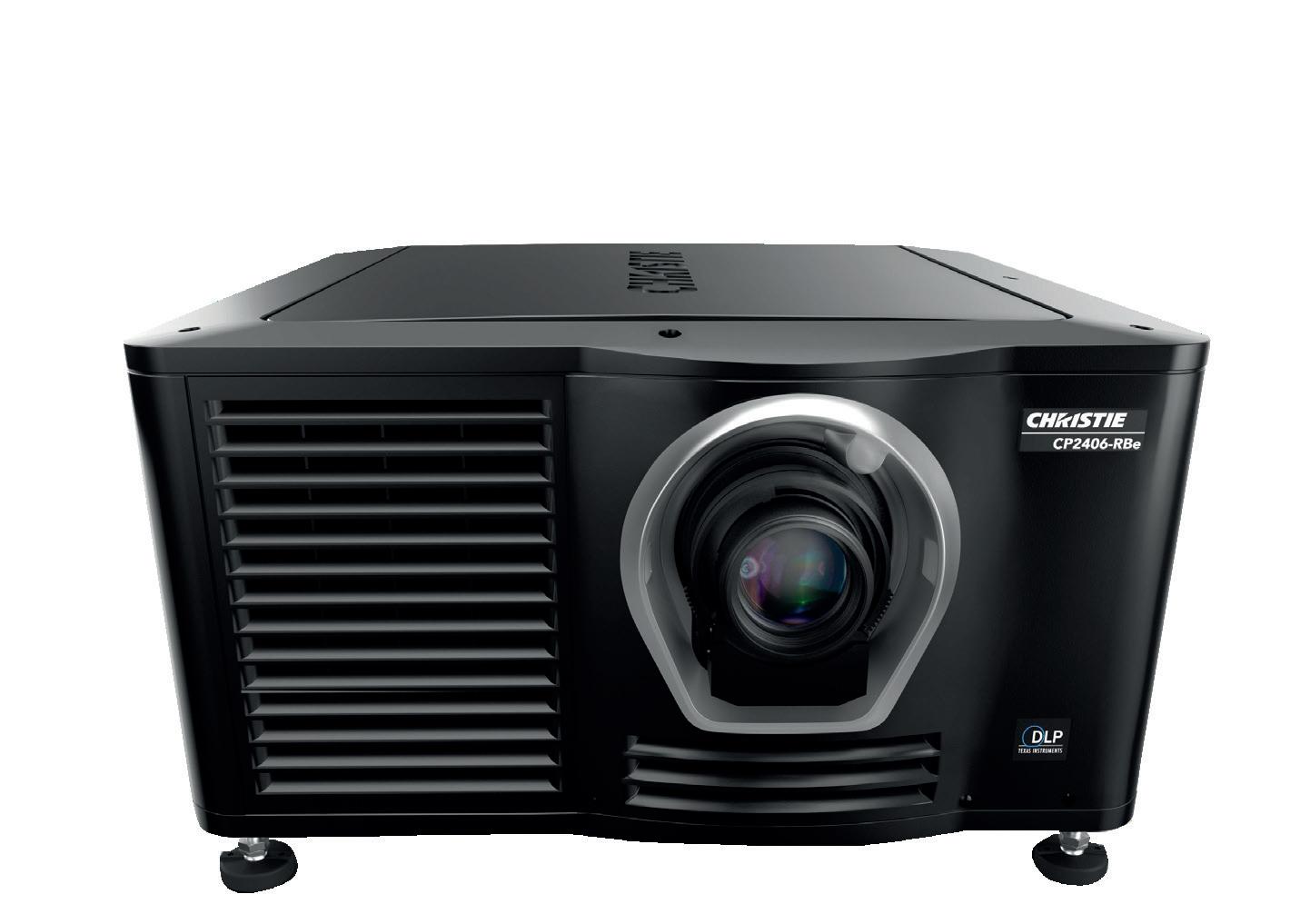
Billed as a software upgrade to recent Series 4 Christie laser projectors, Variable Dynamic Range (VDR) appears to be an innovative concept allowing exhibitors to benefit from an extended dynamic range without needing to purchase another new projector. The sophisticated software runs in real-time allowing analysis of the image at an intra-frame level optimising peak brightness to intelligently direct light where it’s most needed in order to enhance the image. As well as creating more vibrant and brighter images, the ability to analyse the images at a frame by frame level allows power to be managed as shown during the demonstrations. What could that mean? Depending on the content, as much as a 70% saving in power consumption and managing power has the added benefit of potentially elongating the life of the laser modules in the projector. Of course, the ability to manipulate light in this way has the added benefit of not just brighter images but also darker and blacker blacks and the demonstration presented this with a side-by-side comparison showcasing typical projected black from a latest generation RGB laser projector against VDR with quite astonishing results. So far as we can detect, the real benefit here is not just in the ability to bring the technology to existing projectors with what seems like a simple software upgrade but that the roll-out could be impactful given that Christie’s solution doesn’t require specifically mastered content.
As well as offerings for larger screens, Christie also unveiled its first dalliance in to the world of RBe projection with it’s new Phazer technology. With three projectors entering the line-up providing up to 11,000 lumens of laser illumination, these projectors have been purposefully designed for the smaller screen and even those with high gain.
Described as being more than twice as energy efficient as xenon-based projection systems, Phazer technology aims to improve image quality with easy setup for exhibitors. With that in mind, the new RBe range features Christie’s new CineLife+2K electronics platform meaning that projector set-up is quick and easy with auto-configuration features, motorized lens mount, and integrated proprietary electronic colour convergence (ECC) for perfect lateral colour alignment. And to ensure that presentation quality is maintained, the projectors have been design to be compatible with Mystique Cinema ensures the projector is perfectly aligned 24/7, 365 days a year without requiring a maintenance visit.
Over the past decade, Dolby has established a footprint as a premium moviegoing experience with Dolby Cinema locations across nearly 30 exhibitors around the world. 600 movie releases later, and the leading audiovisual pioneers went a step further at CinemaCon by announcing a new offering for cinema exhibitors to deliver a Dolby experience to their existing and forthcoming premium auditoriums for the first time ever. Described as a move to significantly enhance the opportunities for moviegoers around the world, exhibitors will now have the option to bring the combined Dolby Vision and Dolby Atmos premium moviegoing experience (the same technology that powers Dolby Cinema) to their own theaters, whilst maintaining flexibility in room layout and seating. A demonstration of the two Dolby technologies held in the Colosseum during CinemaCon garnered much interest.
Screen manufacturers have spent much of the past decade playing catch up with projector manufacturers who have been refining their laser projector offerings. With projection technology seemingly now coalescing around three routes,

Phosphor, RBe and RGB, the screen manufacturers have set about creating screens that offer solutions to some of the challenges of laser and in particular laser speckle, most commonly seen with RGB projectors. During CinemaCon, Harkness Screens, arguably the biggest screen manufacturer and certainly the most established, showcased its brand new fifth generation technology Hugo SR which generated a surprisingly large audience throughout the week. Surprising why? Because Hugo SR is inherently a 3D ready, 2.2 gain surface yet it has properties that dramatically reduce speckle by around 30% without the need for shakers. Even in a particularly challenging room set up with an RGB projector, speckle whilst visible was not a distraction. And if speckle reduction wasn’t enough Harkness’ new screen which is already available to purchase promises to improve contrast enabling exhibitors to utilise the higher contrast ratios of all laser projectors to create a better movie-going experience. Harkness also shared that it has plans to release a lower gain version of Hugo to provide maximum flexibility to exhibitors.
SR is a 3D ready, 2.2 gain surface yet it has properties that dramatically reduce speckle by around
without the
If the challenge for the industry is to get consumers to turn off their large 4K LED TVs (with attached streaming services) and head back to the cinema for an experience that they simply cannot get at home, the industry has been doing this in recent times and in a step-by-step approach. From premium formats, VIP auditoriums, reclining seats, improved F&B offerings and even family entertainment centres, exhibitors have started the process of innovating to create an amazing experience. CinemaCon clearly showcased that the technology providers have understood their part of the brief and are on the road to creating a technological means of differentiation.
When these innovations comes to market, and some of them already are, exhibitors of all sizes and at differing stages in their projection lifecycle (from xenon to laser) will have an even bigger and better choice to create a premium experience. More so, consumers will be left in no doubt that the only way to watch a movie as the film-maker intended is to do so in a modern cinema on the big screen.
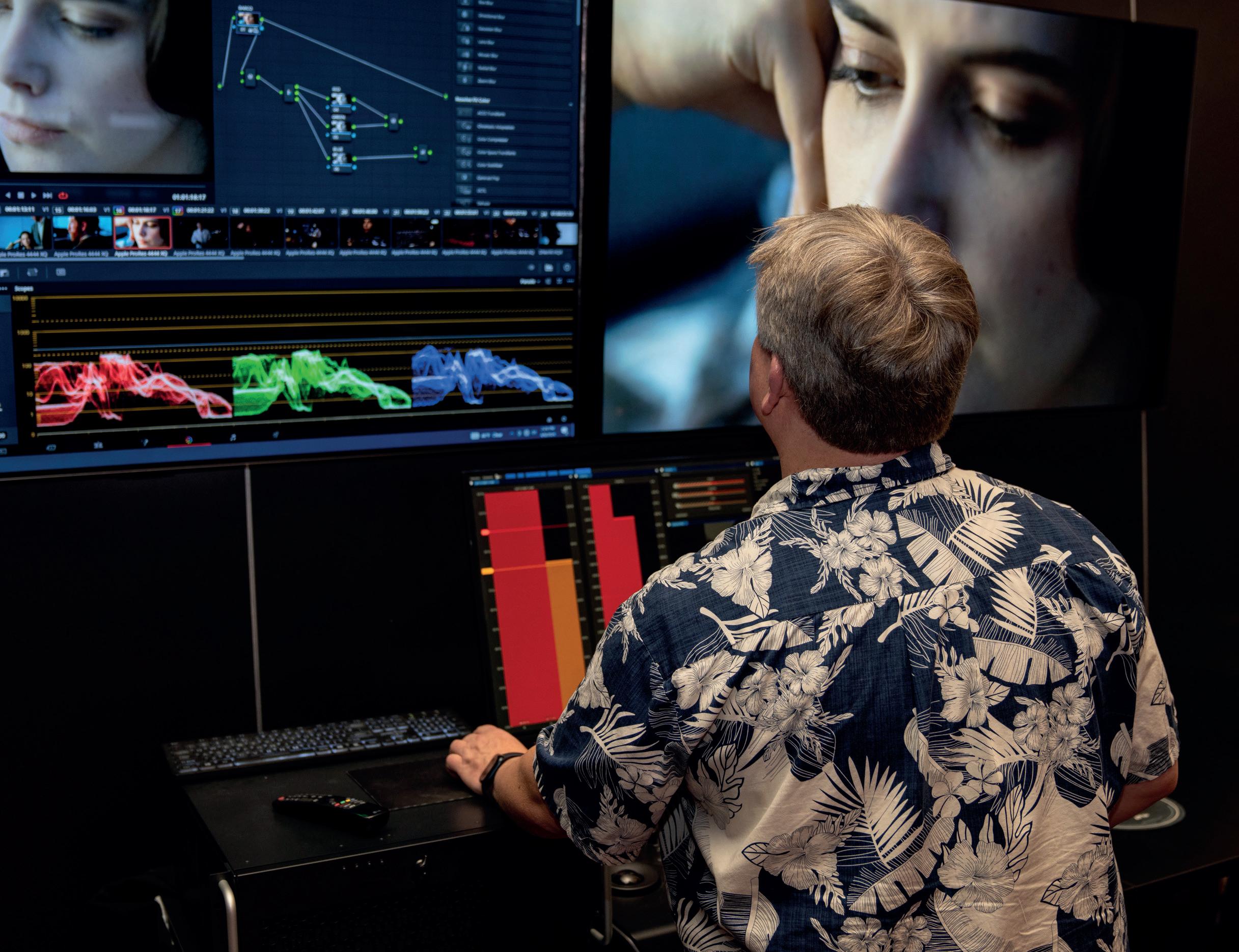
After years in the making, Blackpool’s hotly anticipated £21 million The Backlot Cinema has arrived, delivering a truly world-class cinema experience to this iconic British seaside town. Nestled between the Winter Palace and Houndshill Shopping Centre, this multimillion-pound endeavour is more than just a cinema; it’s a cultural nucleus designed to redefine how audiences engage with films and events. At the heart of the ambitious entertainment hub is a cutting-edge, future-focused design.
“Backlot is as much a conferencing centre as it is a cinema, diner, eSports venue and events destination, all rolled into one completely new model,” explains John Sullivan, Founder of The Big Picture and Owner of The Backlot Cinema, at the recent Leisure Property Forum: Cinema 2024 conference. “Through the 21st century, cinemas have been aging and many have reached the end of their life cycle. I don’t want to see them demolished, but rather re-purposed into dynamic, multi-use spaces. That was the vision driving Backlot,” he adds. To achieve that vision, John worked closely with leading integrator CinemaNext and their team of experienced technicians to combine cutting-edge technology and visionary design with the practicalities of any new cinema project.
While it is also many other things, Backlot is first and foremost a cinema. From the moment visitors step into The Backlot Cinema, they’re enveloped in an atmosphere carefully curated to transcend ‘ordinary’ moviegoing. Offering seven screens tailored to diverse needs, each space is meticulously designed to cater to specific experiences, while always feeling like the best possible cinema environment.
The crown jewel is the venue’s massive 10.85m tall by 19.87m wide IMAX screen featuring IMAX’s dual 4K laser projection system and immersive IMAX audio. It’s one of the largest such premium large format screens in the entire North West region of the UK. While it is the centrepiece screen – audiences can even peer into its projection room through a porthole when there is no film running – it is far from the only auditorium with cutting edge technology. Screen 7, for instance, doubles as a conferencing hub, equipped with integrated power sockets and USB ports (both standard and USB-C) at every other seat, as well
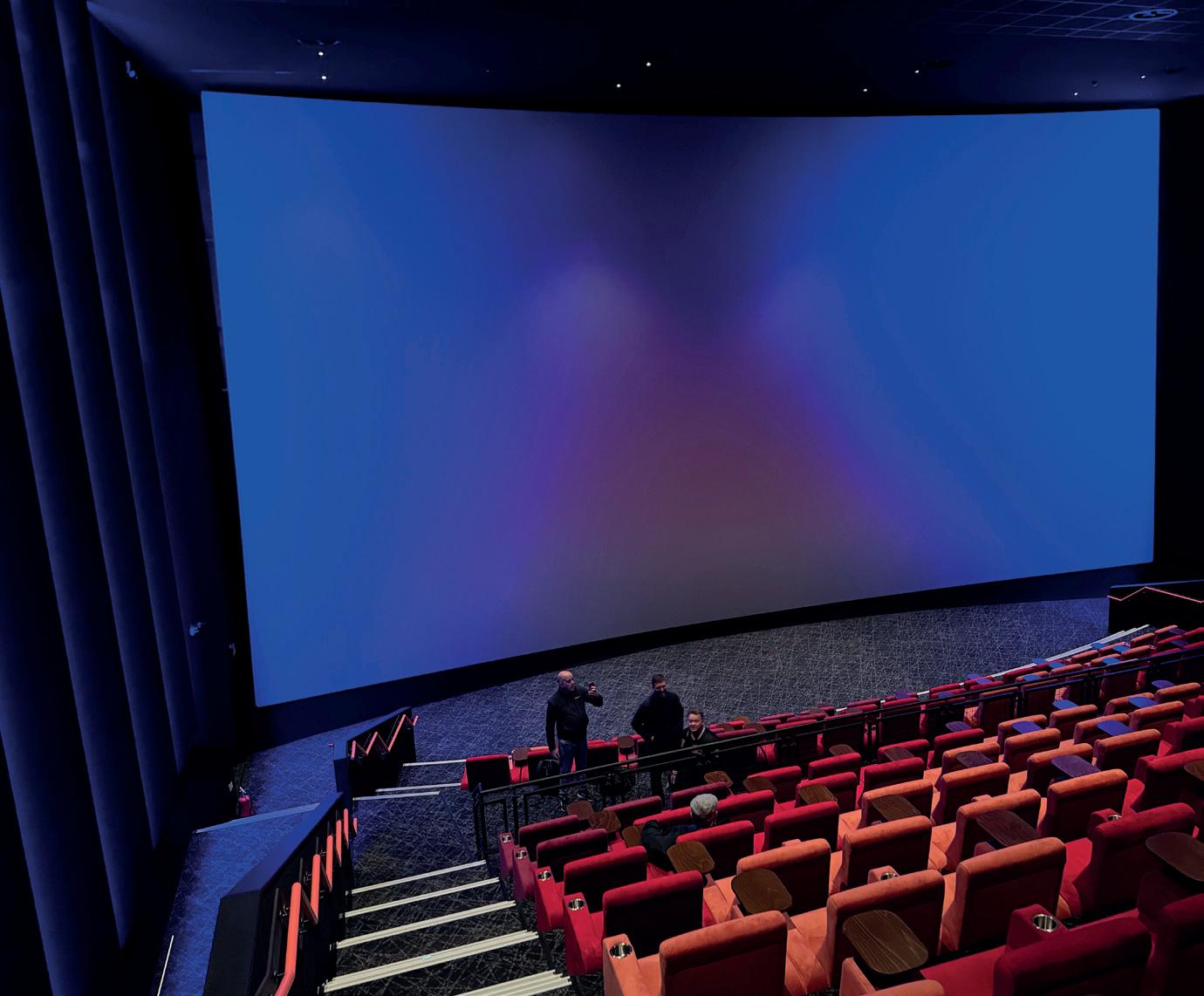
as laptop-friendly tray tables, offering unrivalled versatility for both business and leisure. Meanwhile, Screen 3 transforms seamlessly into an event space, sacrificing two rows in the rear for an entertainment zone, ideal for private gatherings or parties. “Having worked closely with CinemaNext over many years, I knew they had the expertise to bring my vision for a transcendent, future-proof cinema to life at The Backlot,” said John Sullivan. “Their team collaborated with us every step of the way to design and integrate the cutting-edge audio and projection alongside innovative architectural elements.”
Central to the cinema’s allure is its state-of-the-art projection and audio systems. The IMAX screen, obviously commands attention, offering unparalleled visual immersion,

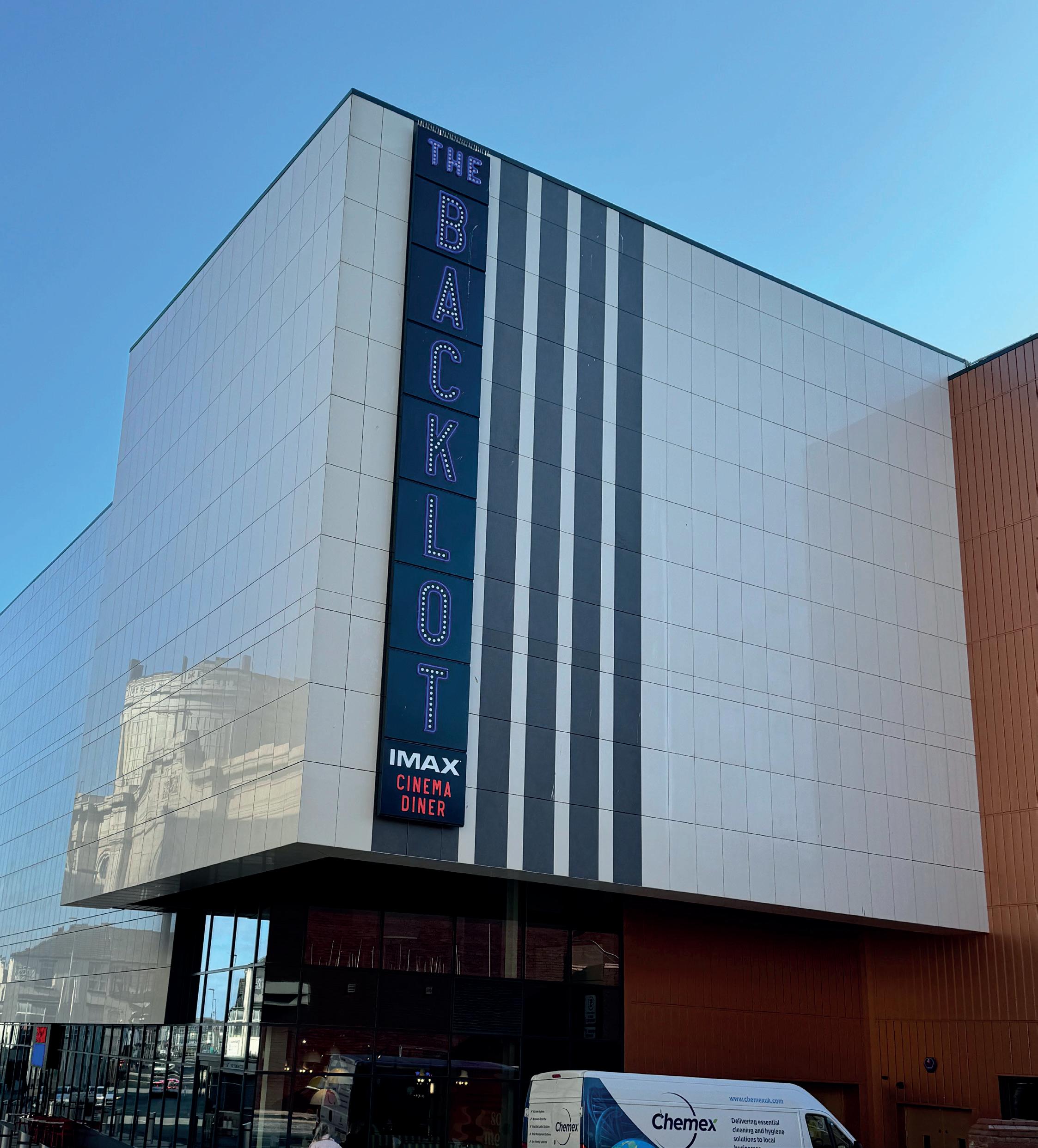
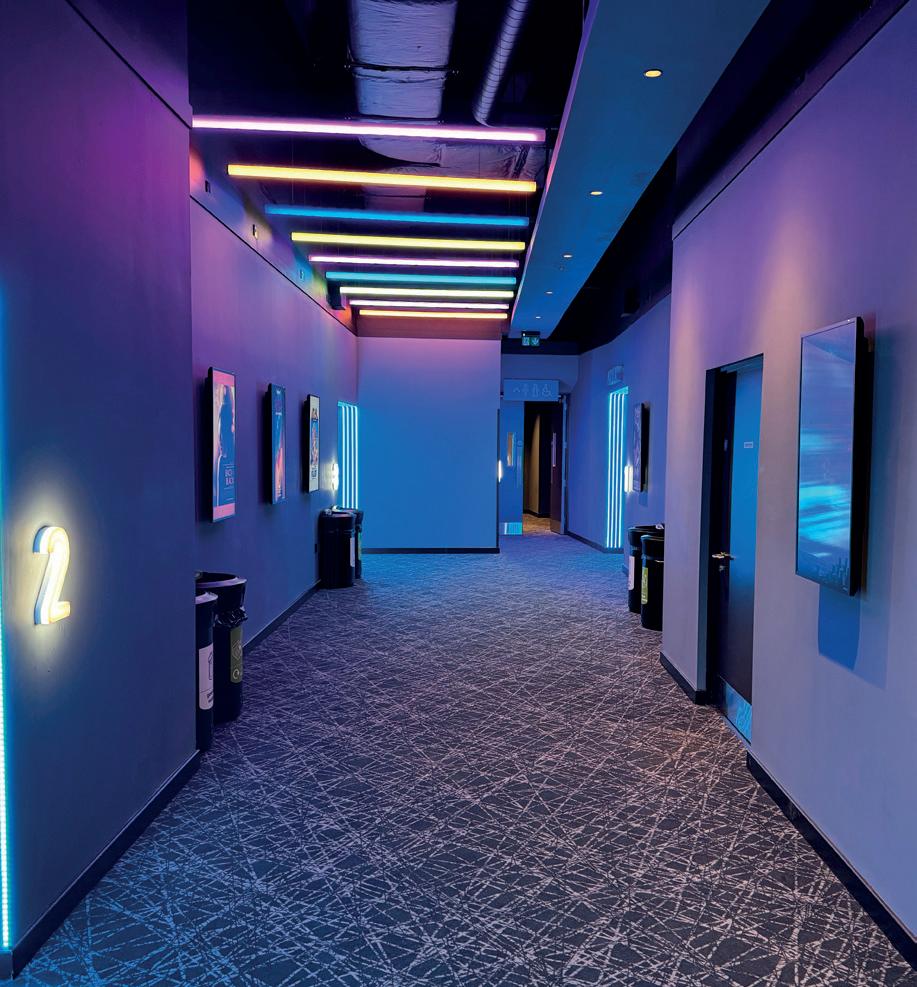
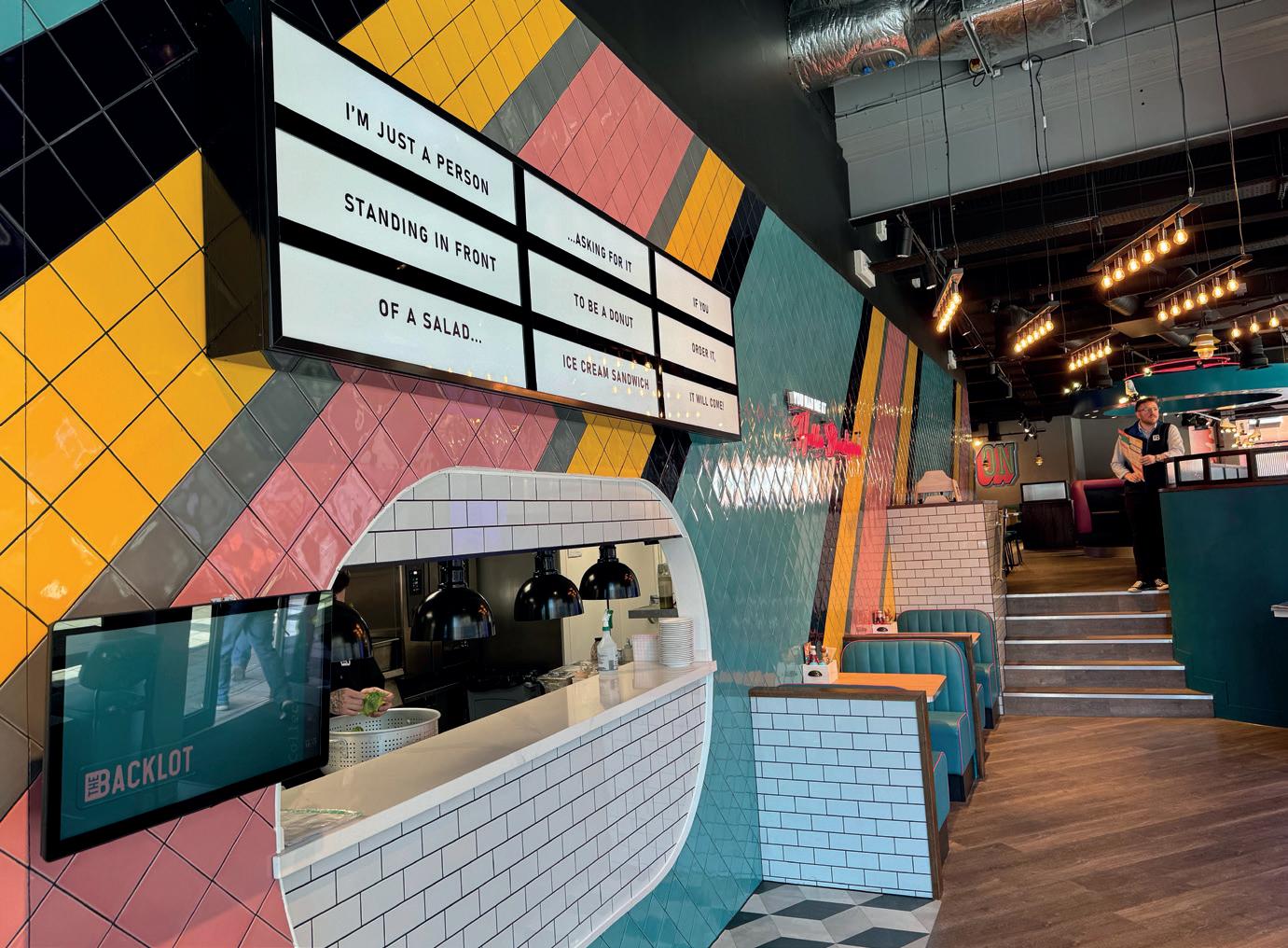
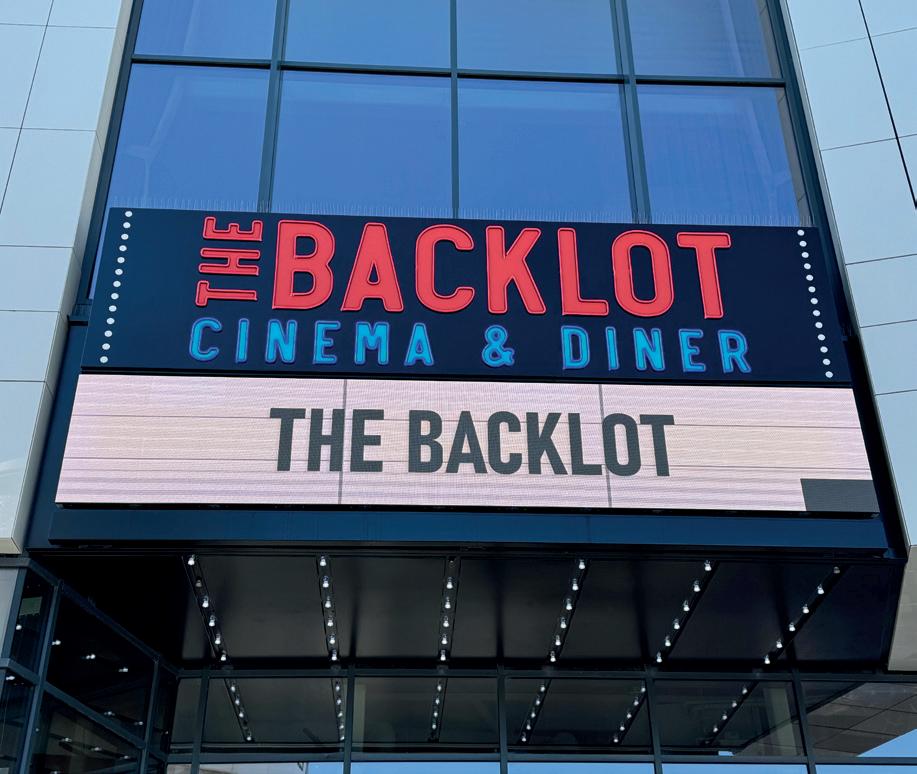
but it also raises the bar for the other screens. In addition to the IMAX experience, CinemaNext equipped six auditoriums at Backlot with four Barco Series 4 laser projectors and two upgraded Barco Series 2 projectors with laser light upgrade (LLU) units, with the upgrade done by UK cinema projection engineers KD Kinotec. The speakers powering the immersive sound are from leading audio equipment manufacturer MAG Audio.
To maximise space, the CinemaNext Spain team provided their innovative ‘passive’ boothless projection design, which works by suspending the laser projection systems from the ceiling at the rear of the auditoriums. This eliminates the need for a protruding booth, ports or extra soundproofing, as the system’s clever design uses natural airflow to operate smoothly and silently. Every cinematic moment is thus brought to life with breathtaking clarity in both sound and vision.
Beyond cinematic excellence, The Backlot boasts an array of amenities aimed at elevating the overall experience. The Studio, a chic bar area overlooking Blackpool, serves as a versatile space for private events, seamlessly integrated with the IMAX auditorium, with a dedicated entrance. Additionally, the American-style Diner on the ground floor evokes nostalgia with its film-inspired fare, providing a delightful pre- or postscreening dining experience reminiscent of classic Americana.
Audiences can enjoy the full big screen experience on IMAX or the other screens, whether catching the latest Hollywood blockbuster like “Godzilla x Kong: The New Empire”, or revisiting a classic like “The Lord of the Rings” trilogy in IMAX, which Backlot has scheduled, along with recent releases such as that missed Blackpool during the town’s cinema drought.
In addition to new movie premieres, Backlot’s cutting-edge facilities can host live broadcasted events from concerts to sports and eSports tournaments. One of the biggest initial technology challenges was Backlot’s lack of high-speed internet connectivity upon opening in late March. As a stopgap solution until fibre was installed, Elon Musk’s Starlink satellite internet service was deployed on the roof - the same service used by the Ukrainian military in the field!
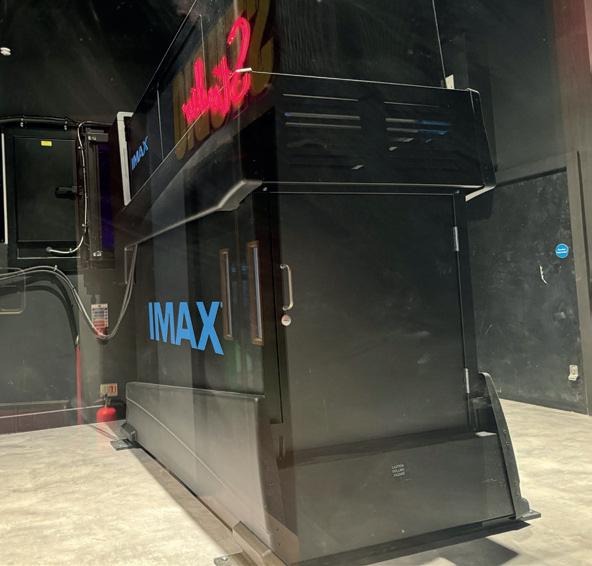
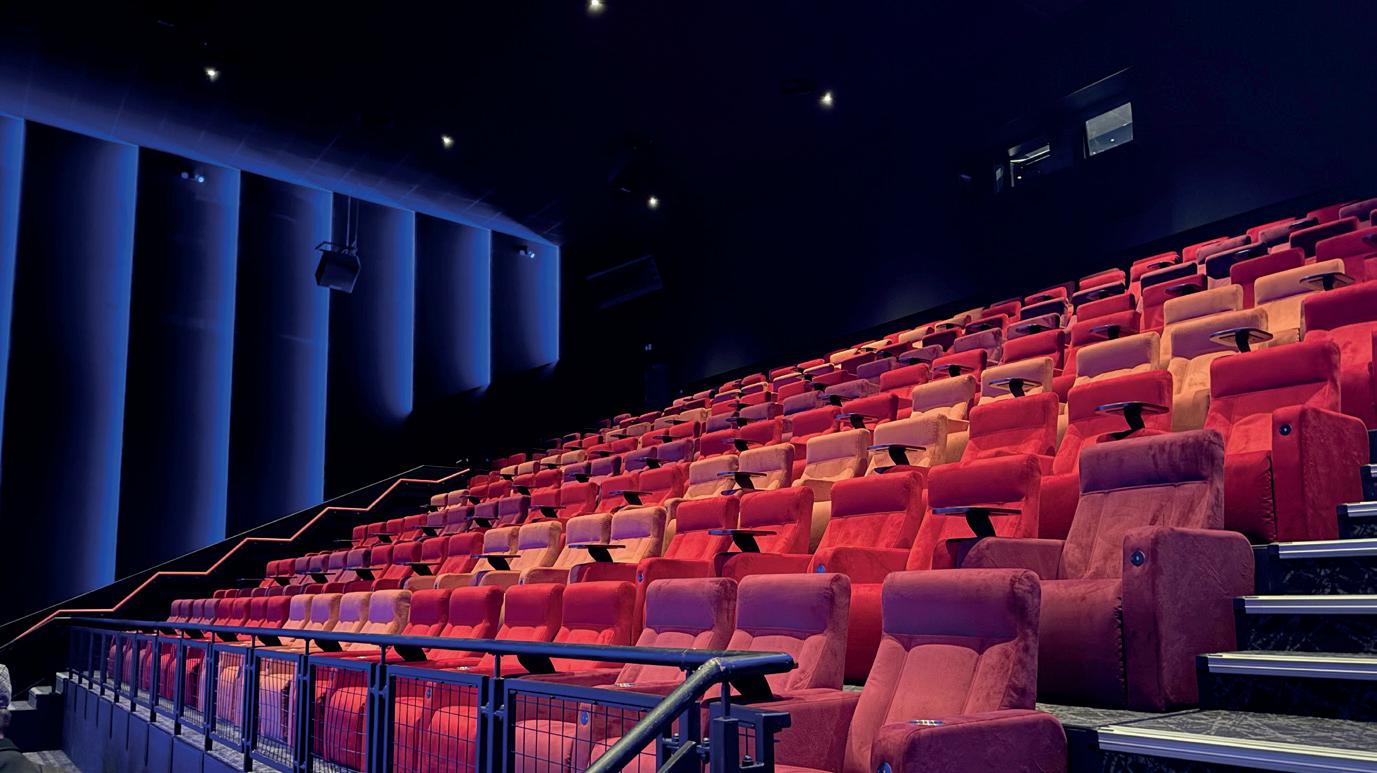
The Backlot, multiplex with IMAX, multipurpose venue and diner.
At the heart of the Backlot’s technological marvel lies the partnership with CinemaNext, a collaboration lauded by Fabio Vidotti, the cinema’s manager. “I’ve opened cruise ships and hotels. I needed contractors who come in and ask, ‘What do you need?’ You can just rely on them; that’s what counts for me. CinemaNext did a great job!” The sentiment was echoed by CinemaNext’s lead project engineer Richard Rhodes, “While there was time pressure to get the cinema opened in time for Easter, we had nothing but positive interactions with everyone from the Backlot team, the architects, builders and vendors throughout the process.”
Through meticulous planning and execution, CinemaNext’s expertise ensured the seamless integration of cutting-edge solutions, from the laser projectors to the rich audio systems. Despite time constraints, the Backlot to launch on schedule, laying the foundation for future expansion and innovation.
For John Sullivan, the visionary behind the Back Lot Cinema, this endeavour transcends mere entertainment; it’s a testament to community enrichment and revitalisation. “Blackpool deserves the best and I think Backlot is the best cinema in the UK - I don’t think anywhere will come close,” boasted Sullivan. “Thanks to the expertise of our partners, we’ve created an immersive entertainment wonderland that will draw people out of their homes and provide an experience you simply can’t replicate at home.” Sullivan’s vision also aligns with Blackpool’s broader regeneration efforts, positioning the cinema as a catalyst for economic growth and cultural resurgence in the town and region.
While the cinema slowly builds a loyal customer base (over 1,000 locals have signed up already to its loyalty scheme) and prepares for the summer rush, it has the option to expand further with Screens 8 and 9, earmarked for future development. For now, there is much to tempt Blackpool visitors and locals away from the beach, roller coasters and other seaside attractions. Backlot isn’t just a cinema; it’s a glimpse into the future of entertainment and cultural enrichment. You don’t even have to wait for a rainy day to enjoy it.
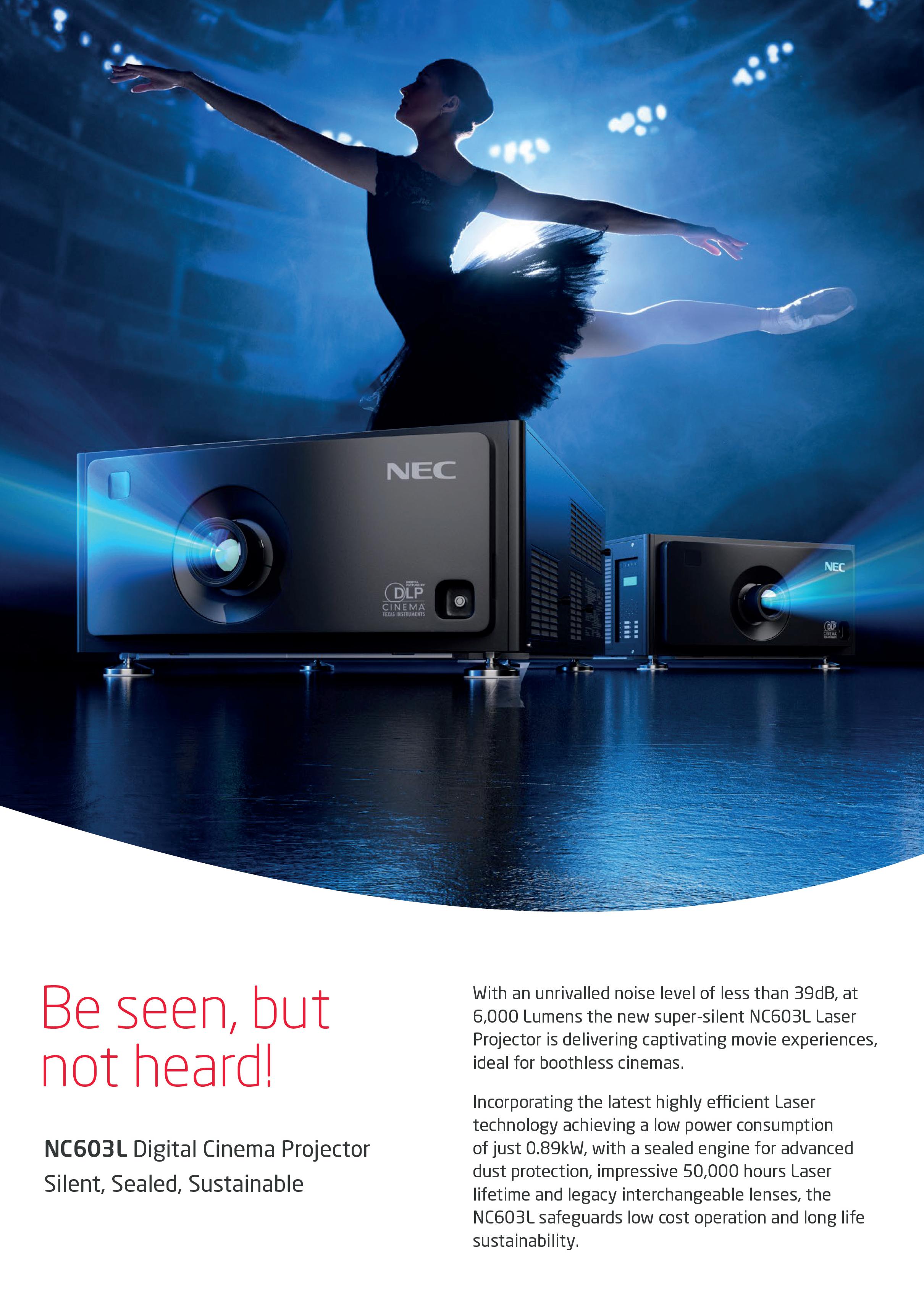
Metamerism is a fascinating phenomenon in colour perception where two colours appear identical under certain lighting conditions but different under others. This artefact often described as something of an “optical illusion” is crucial in various fields, including art, design, printing, and manufacturing, and has significant implications for industries where precise colour matching is essential such as cinema.

n the broadest term and thinking about it in a non-cinema way, metamerism occurs when two colour samples that match under one lighting condition (called the “metameric match”) appear different under another light source. Think about the interior of a car and the
way in which plastics, fabrics and paints are colour matched to ensure a consistency of design. Whilst those materials may be matched under something as simple as a fluorescent light source, they may appear totally different when viewed in natural daylight or with another
powered light source. This happens because the spectral power distributions (SPDs) of the light sources interacting with the objects are different. The SPDs describe how much power or energy is present at each wavelength of light and thus affect how colours are perceived.
SPECTRAL POWER DISTRIBUTION (SPD): Different light sources have varying SPDs. For instance, sunlight, fluorescent light, and LED lights all emit light differently across the spectrum. An object that matches in colour under natural sunlight may not match under artificial light due to these differences.
SURFACE REFLECTANCE: The way surfaces reflect light can vary. Two surfaces might reflect different wavelengths of light but appear the same colour under a specific light source due to their combined reflectance properties and the light’s SPD.
OBSERVER VARIABILITY: Human vision is subjective and can vary from person to person. Factors such as age, colour vision deficiencies, and individual differences in cone cells in the retina can influence colour perception and contribute to metamerism.
In the field of visual displays, metamerism presents a series of specific challenges. But let’s step outside of cinema for a second and think more widely about simple AV equipment including projection and the environments in which they may be used. From commercial offices and schools through to community centres and home setups each has a different set of environmental conditions (ambient light, wall coverings, and surfaces and for equipment manufacturers, ensuring colour accuracy and consistency in these differing applications is critical and understanding how metamerism affects the visual experience is essential.
Metamerism in projection occurs when the colours projected appear differently under different conditions or when viewed by different observers. This phenomenon is due to the differences in the spectral power distributions (SPDs) of the light sources inside the projectors and the inherent limitations of human colour perception.
LIGHT SOURCE VARIABILITY: Projectors use different types of light sources. In the case of cinema, xenon lamps and the differing types of
lasers (phosphor and RGB). Each type has a unique SPD, which affects how colours are rendered.
COLOR MIXING TECHNOLOGIES: Projectors mix primary colours (typically red, green, and blue) to create the full spectrum of colours. Variations in how these primary colours are mixed and displayed can lead to metamerism.
AMBIENT LIGHTING CONDITIONS: Although not a issue per se for cinema, the colour perception of projected images can change depending on the ambient lighting in the environment. A projected image might look vibrant in a dark room but washed out or differently coloured under bright lighting but what if emergency exit lighting alters the ambient lighting, particularly around the screen.
SURFACE REFLECTANCE: The surface onto which the image is projected also affects colour perception. Thinking here about cinema and the use of silver screens or white gain screens. Cinema screens with varying reflectance properties and indeed their own unique colours can alter the perceived colour of the image. But surface reflectance can also include seating materials or wall coverings particularly from reflected light.
Metamerism can have several implications for the cinematic experience:
ARTISTIC INTEGRITY: Directors and cinematographers carefully design colour palettes to create specific moods and emotions to support the storytelling experience. Metamerism can distort these colours, undermining the artistic intent and affecting the narrative.
AUDIENCE EXPERIENCE: Of course, we want the movie-going experience to be immersive and allow the audience to focus on the movie. An inconsistent colour representation can distract viewers and can lead to dissatisfaction and a perception of a lower quality experience.
TECHNICAL STANDARDS: The varying projection technologies that now exist within cinema can affect adherence to industry standards for colour reproduction. Rec. 709 has long been adopted as the colour standard for cinema cameras and post production with many in Hollywood still adopting this despite cinema projectors using the DCI-P3 colour
space. And now modern laser projectors with HDR capability are expanding the colour space to Rec. 2020.
Metamerism issues are only likely to increase as projection technology continues to diversify in the cinema space. To manage and minimise the effects of metamerism in cinema, several strategies need to be employed:
BETTER END TO END COMMUNICATION: From content creators and post-production houses through to technology manufacturers and exhibitors, greater collaboration is required to understand the issues of metamerism and to identify solutions that ensure that this issue is managed without damaging artistic intent or the movie-going experience.
TECHNOLOGY SOLUTIONS: To overcome the issue of metamerism, projector manufacturers continue to work on solutions. In 2023, Barco proposed the concept of applying a Metameric Offset Correction (MOC) to the native calibration of the laser-based projectors to correct for the metameric mismatches in post-production.
REGULAR CALIBRATION: Regularly calibrating projectors throughout the cinema infrastructure ensures that they maintain accurate colour output over time. Most premium format cinemas such as IMAX and Dolby Cinema have automated calibration systems that run daily but for other cinemas regular calibration checks should be carried out at frequent intervals.
Metamerism presents significant challenges in achieving accurate and consistent colour representation in cinema. By understanding the causes and implications of this phenomenon and implementing effective strategies to address it, the film industry can ensure that audiences experience movies as intended by their creators. As the industry moves from xenon to laser, with advanced colour management tools, regular calibration, and adherence to industry standards with the potential of expanding these, the impact of metamerism can be minimised, ensuring an improved cinematic experience for viewers worldwide.
Our daily life is being shaped by constant digital transformation and experimentation. We all have access to what feels like an unlimited suite of tools that enable us to improve how we spend our time and engage with each other. We already depend on various systems that allow us to make daily tasks, at home and at work, less time-consuming. Today, we all expect a seamless, convenient and ideally personalised experience when shopping, booking an out-of-home activity or any other leisure option. For younger generations, that quality of life in the digital realm is seen as a given, with their expectations constantly rising, with gaming and fashion among the sectors driving the innovation train. But are we witnessing the same speed of transformation in cinema operations and the cinemagoing experience?
GuillaumeBranders
, Business Development Manager, DXSome independent cinemas today rely primarily on spreadsheets to manage their cinema. They have limited access to audience data. Often, they can’t even rely on reporting tools to efficiently monitor daily audience and box office performance. For many, TMS and website integration with their cinema management system is something that is not technically unachievable. And let’s not mention the big share of independent cinemas that are not selling tickets online, even in some of the most developed e-commerce markets in the world.
All these operational limitations will have a negative impact on the cinemagoing experience before, during and after the customer visit. The time spent dealing with avoidable tasks - such as creating a schedule first on a spreadsheet, then on the back office system, then on the website is time that is not spent on improving operations or exploring audience development avenues. Moreover, software solutions based on outdated technologies and digital architectures deliver an experience that generally feels and looks outdated compared to what can be experienced with other modern forms of entertainment that our sector competes with.
The cinema industry must embrace solutions that allow it to become more efficient and deliver higher levels of customer satisfaction. And most importantly, these solutions must leverage
open APIs. Open APIs enable seamless communication between different software systems, allowing cinemas to access valuable audience data, streamline operations, and enhance the overall cinemagoing experience. Whether it’s optimising the checkout experience, experimenting with dynamic ticketing strategies, personalising and automating marketing efforts, open APIs represent a key for the sector to stay competitive in an everevolving entertainment landscape.
API stands for Application Programming Interface. It is a mechanism enabling two software applications to communicate with each other to exchange data, features, and functionality. An API makes it possible to only share the information that is essential to a specific operation, keeping other internal system details safely hidden. When you use a food delivery app, it sends a request to Google Maps asking for directions to your location. Google Maps then processes this request using its API and sends the information back to the delivery app. The delivery app then displays the map with the delivery route on your phone. That behind-the-scenes, seamless process relies on the API to facilitate communication between the delivery app and Google Maps.
Yet near-invisible, APIs have become an essential part of all the digital experiences we take for granted. They are a valuable aspect of all modern business and personal applications, allowing organizations to open access to their resources while remaining in control.
When it comes to the distinction between open and closed API, an open API is made public and accessible to all, while a closed API is private and cannot be openly accessed online. An open API will encourage collaboration, innovation, and transparency, whereas a closed API is more focused on enhancing security and control. It is often the case that businesses will rely on both types, open API for public engagement and closed API for internal operations.
To bring this even closer to a cinema technology mindset, you could make an analogy between open standards and open APIs. Open standards help establish common protocols and formats to ensure compatibility and interoperability. Open APIs serve a similar purpose for software applications, allowing different applications to interact and exchange information.
In essence, open standards for hardware and open APIs for software both aim to create a common language or interface that facilitates communication and collaboration between different systems or devices. They provide a framework for compatibility and interoperability, enabling hardware devices or software applications to work together harmoniously. Just as open standards in hardware ensure that devices can connect and function together regardless of the manufacturer, open APIs enable software applications to interact and share data seamlessly, regardless of their functionalities or developers.
Open APIs, by their very nature, foster innovation and experimentation through collaboration. They allow different players to build upon each other’s work creatively and develop useful applications, services and products. By doing that, they create and help to grow an ecosystem that will in turn progressively attract more users and contributors who can further add to it with their own innovations.
Moreover, by facilitating interoperability, open APIs make it possible to combine different functionalities in novel and creative ways, which will be able to address highly specific and complex needs inherent to a niche business - such as cinema exhibition.
That last point is a particularly vital one. Open APIs can help niche software providers expand their reach and value proposition in the market. Whilst there are feature needs and combinations that are quite specific to the cinema industry, our industry needs often overlap with other sectors. A collaborative
ecosystem could be built around a cinema software, with developers, partners, users and customers alike contributing to improving its offer through feedback and collaboration.
On a software development level, open APIs can significantly reduce development time and costs for niche software providers by allowing them to focus on their core competencies while leveraging external resources and functionalities through integration. Why should you develop a staff management tool, when there are already hundreds available out there? If there is already a top-notch seating chart software available out there, why not integrate it with your ticketing solution?
Put simply, embracing open APIs can be a strategic business decision for niche software providers looking to expand their reach and enhance their value proposition in the market. Or even tap into larger, unexpected market opportunities.
Without even noticing it, we already heavily rely on multiple open and closed APIs in the cinema industry. For instance, different APIs make it possible to report admissions and box office data, enable third-party audience schemes or coupons, allow cinemagoers to interact with their bank payment systems while buying tickets online, enable sound and image equipment to integrate with a TMS, etc. Even internally, it will be an API that allows an exhibitor to feature events scheduled from their scheduler on their website and link to their checkout solution. But much more could be achieved were we to develop comprehensive, open API access to the solutions that we use. By doing so, we would be able to further streamline various aspects of cinema operations, including but not limited to ticketing, concessions, and scheduling, leading to greater efficiency and cost savings. They can also help significantly improve the moviegoing experience for customers and facilitate partnerships and collaborations within the industry.
Every cinema is different and will have different operational needs and expectations. Developing more curated, personalised solutions, adapted to the specific style and approach of an independent cinema could be key in differentiating it in a cluttered attention marketplace.
A one-size-fits-all digital management approach seems less and less relevant in our current world. An open API future could enable cinemas to take a larger role in creating bespoke solutions for themselves - without breaking the bank.
In terms of the customer experience, open APIs could enable features like dynamic pricing, subscription-based services, personalised recommendations, easy access to showtime information across different platforms, or even more practical considerations relying on geolocation such as parking, restaurant and bar suggestions.
A particularly fascinating possibility is how the combination of various APIs could allow for the development of what is generally called living tickets. The idea being to make it possible for cinemagoers to access, modify and engage with their order throughout the customer journey. Such a format would allow cinemas, with the support of distributors and other third-party partners, to dynamically deliver exclusive content, interactive elements, bundled offers, and more to enhance and personalise the experience over time.
Open APIs could make it possible to create custom integrations between a cinema’s CRM platform and other applications, leveraging the CRM’s data and functionality. This would open the door to a range of marketing automations, such as integration with email and social media platforms, allowing for the development of highly efficient marketing campaigns.
At an entirely different level, a growing number of cinema operators are today relying on third-party staff management solutions. But these operate entirely outside of the existing cinema ecosystem. Open APIs could enable these staff management tools to seamlessly integrate with cinema management solutions. That way, staff availability would align with movie showtimes and needs, tasks would be based on staff profiles and roles, work notifications and alerts would be automatically sent out, and more broadly communication
It is quite clear that open APIs can improve daily management operations, resulting in more efficiency and cost savings for everyone involved. They can improve the customer experience strategically, by facilitating collaboration between different parties involved in the value chain, opening up ways to improve data analytics and anticipate trends and other relevant developments.
To put it simply, open APIs enable agility by making it easier to integrate new technology and be future-proofed. There are of course challenges related to implementing open APIs. For instance, closed and open APIs are vulnerable to cyberattacks, and require adequate safeguards. More specifically related to open APIs, it can prove difficult to keep up with the regular updates to the standards on which they are based. Cinema operators and software providers alike have to be aware of these drawbacks and manage them efficiently. But the benefits are certainly worth the effort.
The fact is that legacy, traditional software,
between staff members would be streamlined. Not only would this improve operational efficiency, it has the potential to significantly improve the employee experience. The possibilities are truly endless. A weather API could provide weather data to a programming software, allowing managers to make informed decisions based on weather conditions. A translation API could help reach more diverse audience groups by providing accurate translations of promotional materials. Different open APIs could enable cinema operators to gather data insights from customer interactions, booking patterns, regional and global attendance trends.
Even looking inside our industry, enabling API access could make it possible for existing stakeholders to work hand in hand to deliver a curated suite of solutions to cinema operators. Certain solution providers are strictly focusing on ticketing and POS features, others have a stronger focus on marketing and data analytics tools. Some solutions allow for exhaustive automation and improved efficiency between all the different systems and devices that make a cinema work, from KDM handling to air conditioning monitoring. Now imagine if all these solutions were to interact with each other, creating a dynamic, highly efficient ecosystem for cinema operators to play with. This is what the future looks like.
But to make all of the above a reality, we need to open up and collaborate.
managed on individual devices, requiring manual updates and maintenance, with limited customisation options will gradually and increasingly struggle to leverage all the perks brought by open APIs. Switching to solutions which can leverage open APIs seems like an essential next step for cinema operators.
We are seeing progress, with a growing number of cinema operators - especially chains but also some leading independentunderstanding the necessity from an audience development and cost-saving perspective of investing in modern, flexible systems. In the past few years, chains have been acutely aware of that operational need. We are also gradually witnessing more cinemas opting for Softwareas-a-Service (SaaS), cloud-based solutions. Here, as opposed to traditional software solutions, the software isn’t installed on any particular device or terminal. Users not only have the ability to access their data whenever they need it, but it gives the service provider the ability to update the software with the latest patches, bug fixes, new features, and all other types of
upkeep to maintain and upgrade the applications. And SaaS solutions allow for the flexibility that is required to enable integration with other APIs.
Most positively, there is a growing acknowledgment between cinema software providers that increased collaboration will enable the industry to step change. We have even seen in recent months major players agreeing to join forces on partnerships, with API integrations mentioned as a critical stepstone.
Embracing open APIs requires stakeholders to adopt a more open-minded, progressive vision, as opposed to the competitive protectiveness that Closed APIs signal.
It is only by working together and joining forces that it will be possible to address the challenges and opportunities brought by rapid technological changes and shifting consumer preferences. I’m confident that the cinema industry will achieve this transformation. As always, it will be a matter of how quickly we manage to do it, and whether we risk losing some audience groups along the way.
As a follow up to the Green Shoots article published in 2023 which showcased the work Savoy Cinemas carried out with UK sustainability consultancy Trigage, CTC Governor Sandie Caffelle caught up with Savoy’s CEO James Collington to take a more in-depth look at on how the energy-saving results were achieved:

Savoy were one of the first exhibitors in the UK to transition to laser projectors, but what savings have been achieved both financially and also with savings on carbon emissions?
We have upgraded from Xenon lamp projectors to laser light engine projectors in existing sites over the last 4 years and have opened each of our new sites since with laser. Laser light engines are considerably more efficient. For each laser projector installed on average we are saving around £1,600 per year on electricity and around 1 tonne location-based saving on CO2e. We have 29 laser projectors
installed across our 6 sites so that equates to around 29 tonnes of CO2e emissions reduction across our estate.
How has the transition to LED lighting benefited Savoy Cinemas? LED lighting consumes up to 80% less power than tungsten lights, translating directly into lower energy usage, cheaper energy bills and lower carbon emissions. We are seeing around a 12 month return on investment moving to LED lighting across the circuit and have upgraded absolutely everything we can including our film information board outside our Nottingham cinema. We sourced LED strips online and practically
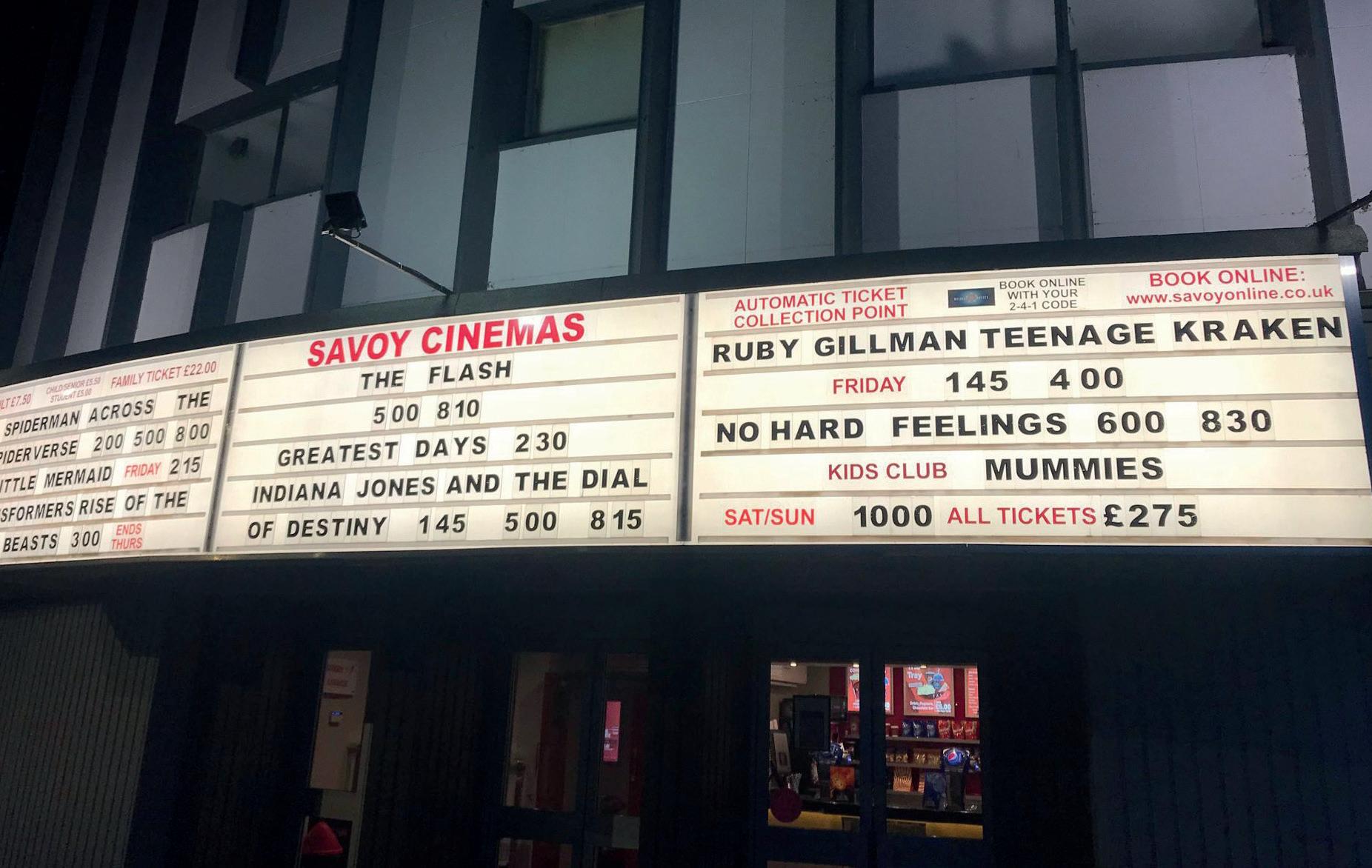

conducted the conversion ourselves with the necessary Electrician Certification.
Please explain how using energy efficient HVAC technology has realised the improvements you sought?
Energy efficient HVAC is incorporated into our cinemas which comprises 3 energy saving technologies: (i) heat pumps to move heat from outdoors into the building, as opposed to generating heat from gas or direct electric heating (ii) heat recovery, whereby the heat content of expelled air is recovered and used to pre-heat incoming air, rather than expelling this energy to the atmosphere and (iii) recirculation, whereby CO2 sensors effectively detect the occupancy of an auditorium and provide fresh air in proportion to the capacity of the auditorium at any given time, rather than the conventional method of providing 100% fresh air heating/cooling.
The savings and carbon emissions reductions using the

new HVAC system is significant. The Boston cinema is the only remaining cinema that has not yet been converted to the new HVAC design. Let’s compare our cinemas in Boston and Grantham, both have 5 screens, Grantham has 2000sqm of floor space and Boston has 1620sqm. Grantham consumed 135Mwh of gas in 2022 and Boston consumed over 700Mwh; over 5 times the cost and 5 times the carbon emissions. We plan to upgrade Boston over the next year.
What technology do you have in place to ensure that there is no unnecessary use of energy? Which areas have been the most beneficial and/or surprising?
We use DCM’s Cinematic/Unique RosettaBridge TMS to schedule our show playlists and automation adapters such as Jnors to control lighting in each auditorium. Our staff have a start of day/ end of day power management procedure they follow to turn on/off sound and vision systems.
We also automate as much lighting as possible in staff and public areas. Using PIR sensors where possible (mainly for the staff areas) and timers.
We are investigating whether there is any ROI to be had in automating further using a combination of software and hardware power management systems.
Are there any specific areas that have benefitted from insulation and is there anything unusual you’ve discovered?
The newer sites - built in the late 90s and later - have been built to modern buildings’ standards with relatively good insulation. The older sites such as Boston (built 1980s) and Nottingham (built 1930s) have poorer insulation. We have implemented what we can. However, we are still looking for solutions to further insulate certain areas such as the roofs of these cinemas. Roofs are difficult to retrospectively insulate due to the amount of plant in this space and wiring etc. For Nottingham, planning restrictions prevent us from cladding the outside walls.
One of the key investments you made was in the deployment of solar PV panels on the roofs of cinemas. How much electricity has been generated and what does the saving look like?
Doncaster, which opened with solar on the roof, has a significantly lower electricity bill (40-50%) than the other sites. However, it’s difficult to compare with every site as it’s a modern multiplex. Last autumn we installed a 40kw solar array on the roof of Nottingham and to give you an idea of the potential savings, during March and April this year our grid electricity consumption reduced by 20% - and these as we all know were two very rainy months! Nottingham is our HQ so the solar generation mainly goes to power our office space. As the majority of electricity generation is outside the busiest operating hours, we have battery storage in a couple of our other sites which have larger arrays installed.
We are all trying to reduce our carbon footprint and know that Savoy Cinemas have done a huge amount across the business. What innovative steps are you taking and what guidance would you give for fellow exhibitors?
The key areas which we have some influence over are buildings and renewables with the areas listed above being the priorities. We changed electricity supplier last year to a supplier who had a greener mix of renewables and fossil fuels which has reduced our overall electricity consumption carbon emissions by 70% whilst keeping within opex budgets.
Our new build in Gainsborough will combine a number of our initiatives - laser projectors, LED lighting, solar and battery storage. It will also have, a first for Savoy, eV charging points for the customer car park utilising a new bay enforcement

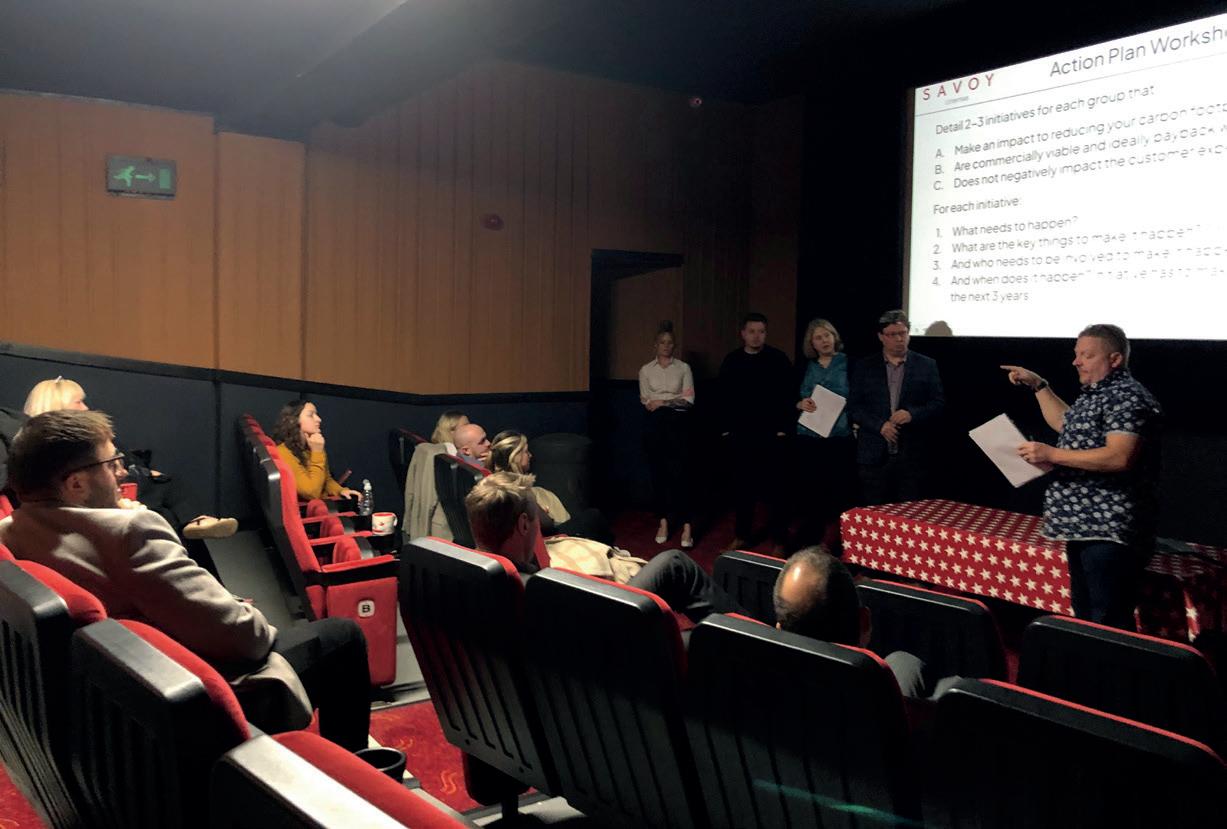
service to protect parking bays from abuse and improve the customer experience.
We conducted a workshop in the autumn of 2023 with our Managers, where we brainstormed some of the above initiatives and came up with some other ideas. Some we are exploring further, for example, clearer communication of public transport options for our staff and guests, the use of waste recycling bins in foyers and reusable cups. And some we are not - for example we considered rain water harvesting for one of our new cinemas - a great idea in principle. However, we calculated that it would have minimal impact on our overall carbon emissions and no tangible ROI - so in theory it’s impractical. We now have six-monthly manager meetings where we have Sustainability as an agenda point. Each manager is asked to come to the meeting presenting on how their cinemas have reduced energy consumption and carbon emissions.
Food and beverage is by far the largest area of Carbon emissions equating to up to 50% of overall emissions - for this we need to work collectively as an industry to find ways of reducing emissions but continue to offer the great popcorn and coke experience plus more to our customers!
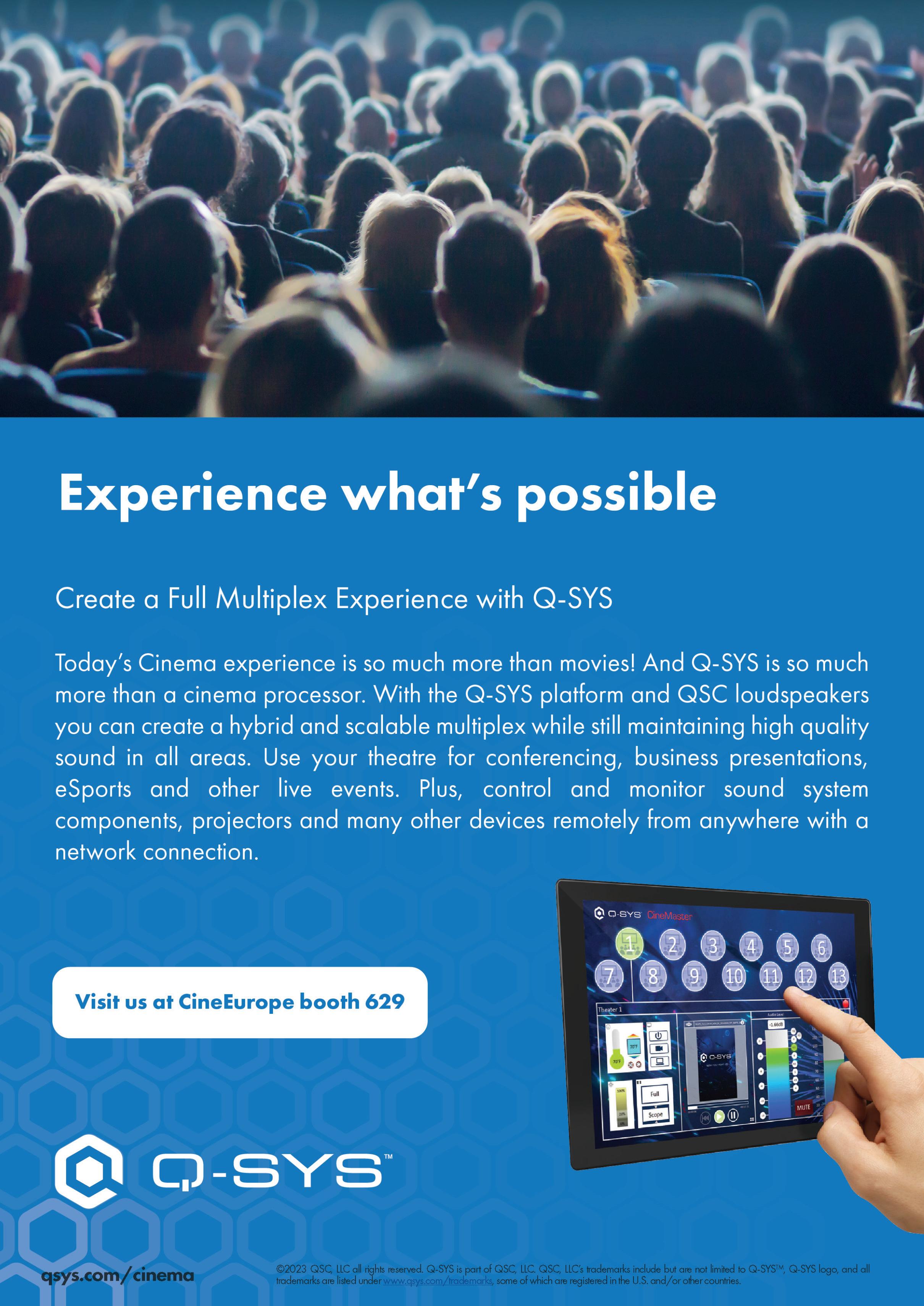
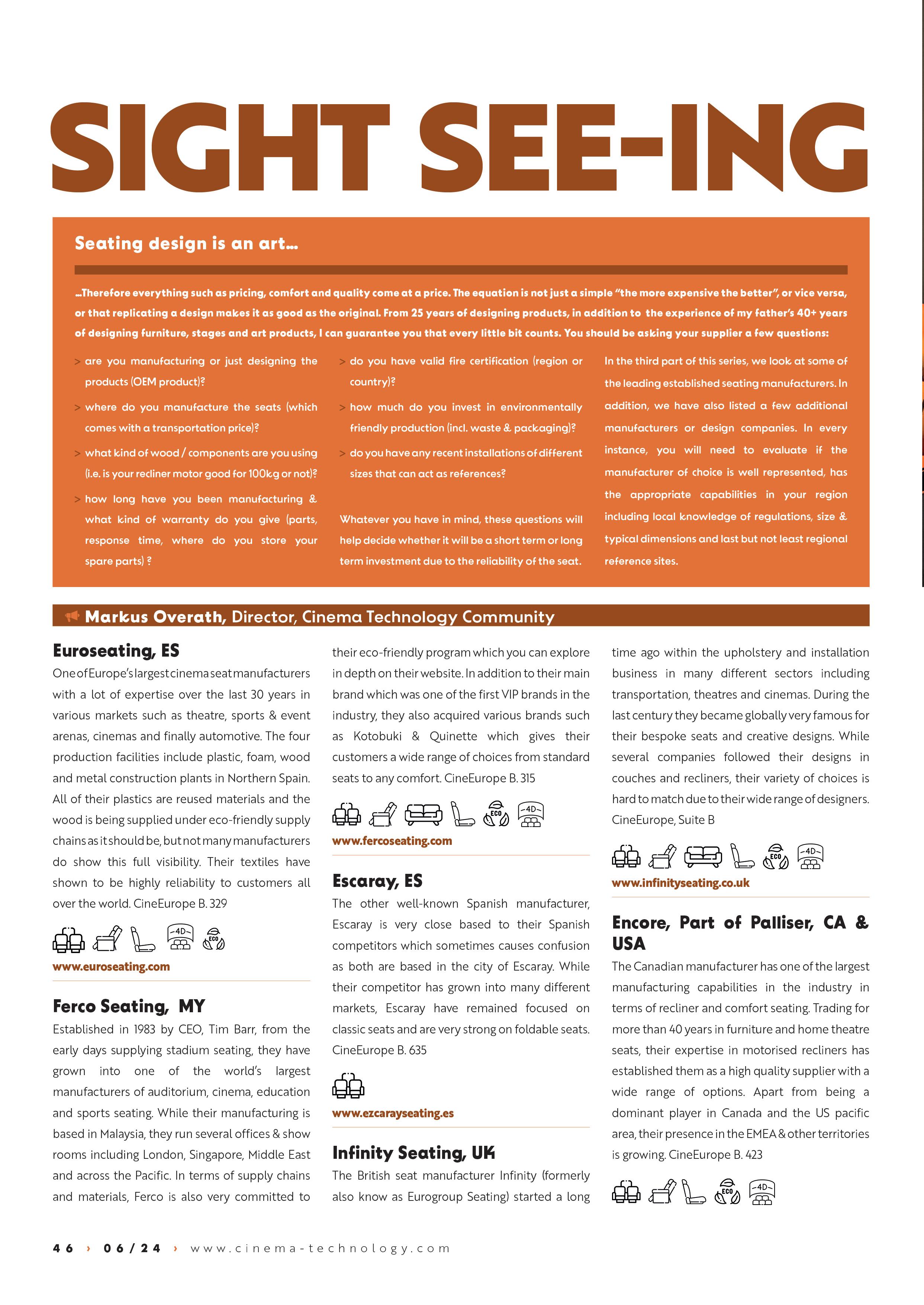
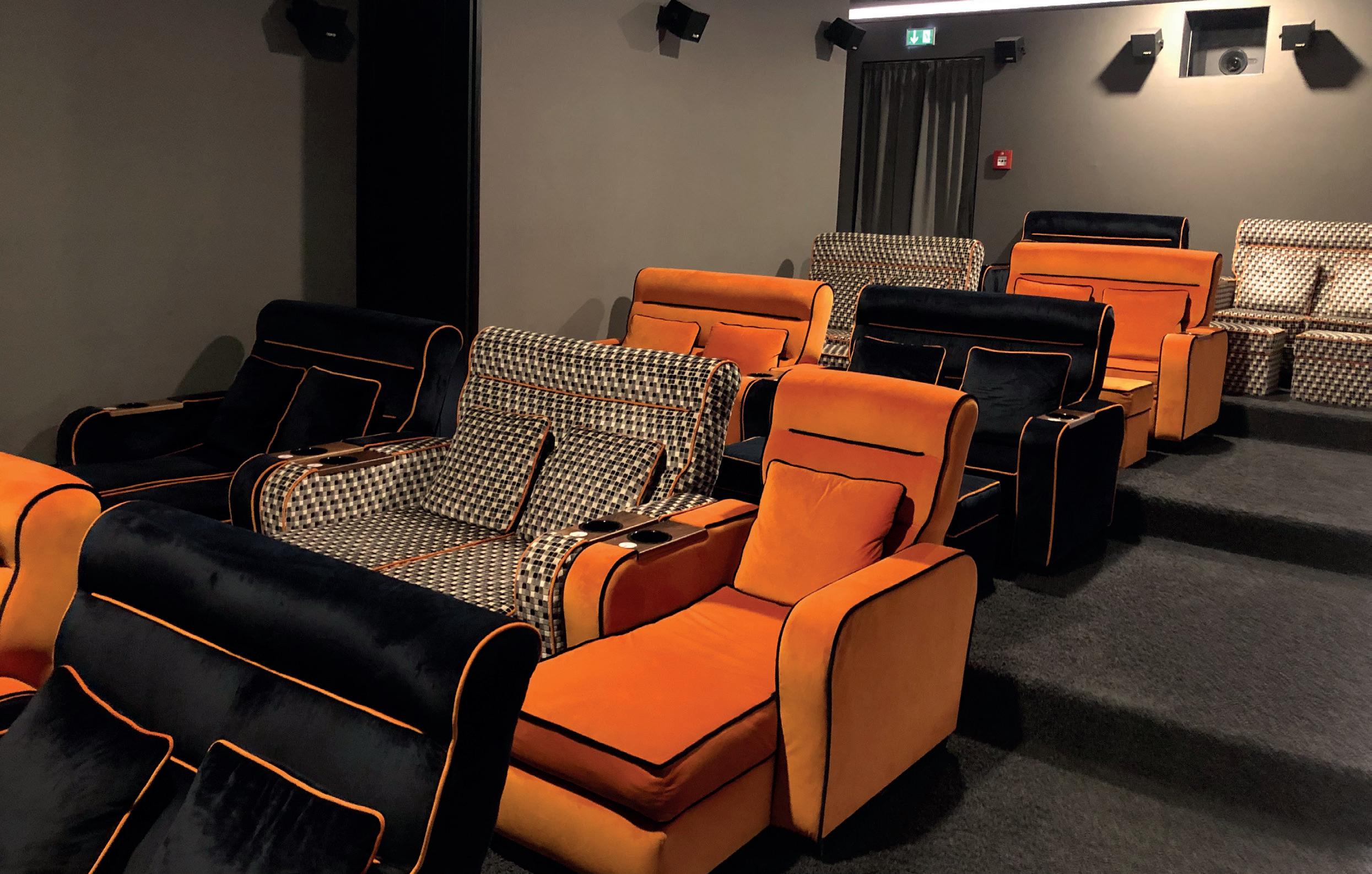
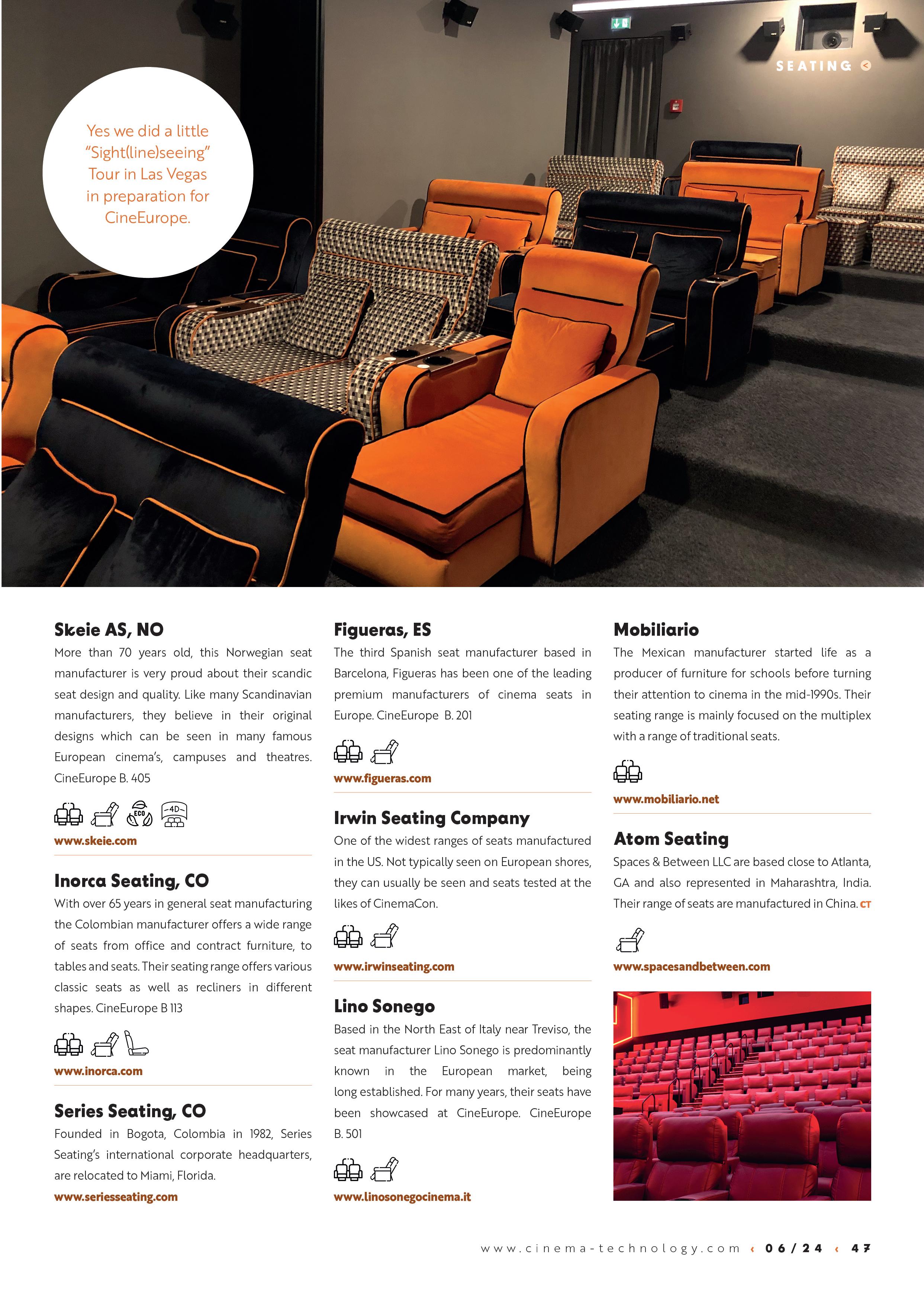
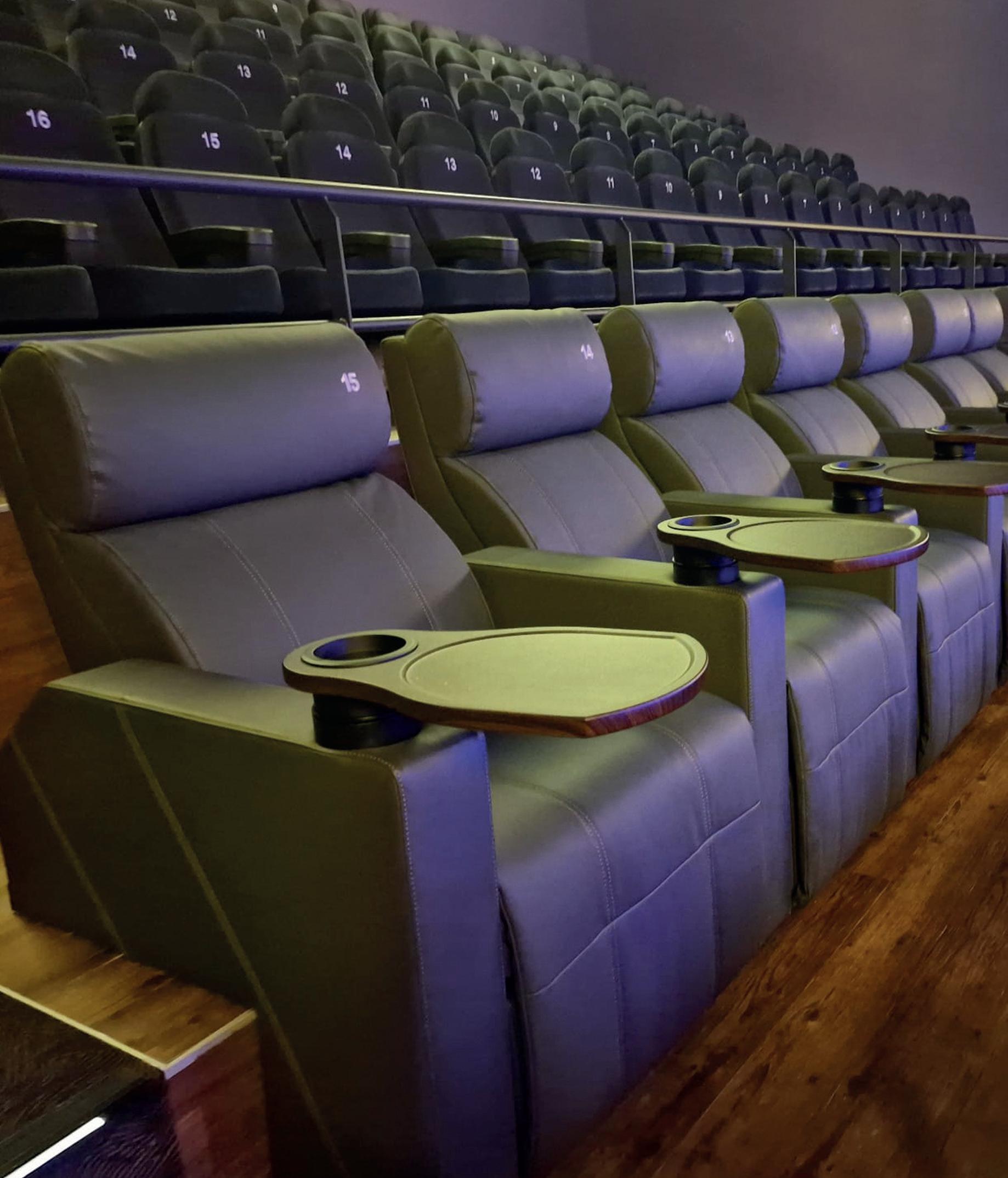
Cinema fans are demanding more. Comfortable recliners are becoming the new standard. Moviegoers are looking for a premium experience and leading seating manufacturer Ferco Seating has risen to the challenge.

As CT Magazine has covered in the acclaimed series of articles on seating written by Markus Overath (CTC Director), there are always tight budgets and often limited space, so increasing the footfall and occupancy rate in a prudent way is paramount. Movie-goers demand comfort and cutting-edge experiences, pushing cinemas to constantly innovate. Many cinemas want and need to upgrade but extensive renovations are costly, timeconsuming, and require multiple approvals, further delaying much-needed revenue.
Ferco’s new Riser Recliner (FRR), is a revolutionary seating solution that is designed to address cinemas’ specific needs. Refurbishment is so much easier as the Riser Recliner utilises existing tiers, eliminating the need for the traditional timeconsuming restructuring. This means that installation is much faster and ultimately saves precious time and money. One of the key benefits is in improved sightlines: The system allows cinemas to maintain the existing riser while converting two tiers into one, ensuring a clear view for every single movie-goer.
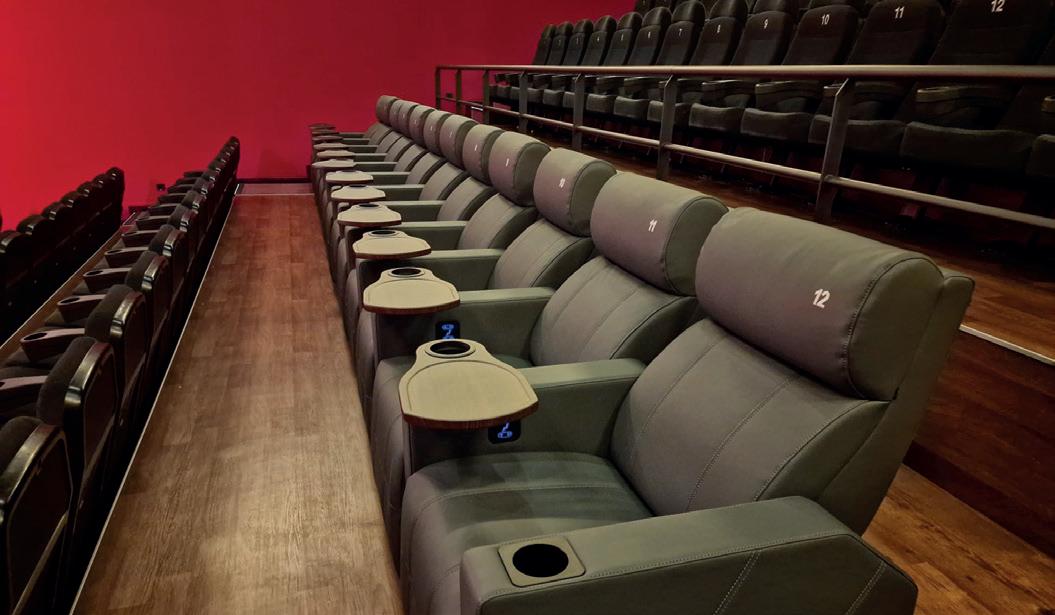
Of course, comfort is paramount and the FRR promises to provide that at an unmatched level. The FRR boasts a dual motor mechanism for luxurious reclining, allowing patrons to unwind and fully immerse themselves in the cinematic experience. The innovative design which incorporates a smart swivel table can incorporate a tablet device connected to the cinema’s POS system). The upshot of this is the potential for an exhibitor to offer a wider variety of food and beverage options and to provide these as an in-seat service and create significant incremental revenue, all whilst catering to the multi-tasking generation.
There are of course added costs associated with recliner seats in terms of maintenance and cleaning, however the FRR has some added advantages which Ferco believe makes cleaning easier. The FRR features a lift-up seat and a central remote control for effortless seat upright positioning, ensuring a spotless auditorium after every show.
How has the Riser Recliner been implemented and what has been the effect?
Let’s take a look at the German cinema market where Ferco has been rolling of the FRR to revitalise the movie-going experience and address the specific challenges faced by the owners.
THE CHALLENGE:
At the 2023 Baden Baden trade show, the Ferco team met cinema owners facing a difficult back drop. The pandemic’s harsh impact, coupled with declining box office numbers since 2018 (attributed to outdated cinema facilities and a lack of compelling local films), had significantly strained their finances. Many owners expressed a strong interest in upgrading their seating but lacked the budget for extensive renovations, particularly those requiring floor modifications for VIP sections.
THE FERCO SOLUTION:
The FRR, a brainchild of a Ferco team member, emerged as the perfect solution. This innovative design could utilise existing tiers, eliminating the need for costly and time-consuming restructuring. This was particularly crucial for these cinema owners with tight budgets and short timelines.
THE OUTCOME:
The first FRR installation in Germany took place in Gründstadt, a small city near Mannheim. Despite the initial challenges of convincing German customers, known for their cautious approach to innovation, the results have been overwhelmingly
positive. This particular cinema owner was so delighted with the outcome that they are actively promoting the FRR and shared
SOME KEY LEARNINGS:
Movie-goers prioritise FRR seats: The FRR recliners are consistently the first seats to sell out, leaving some viewers willing to wait for the next show to experience the comfort they offer.
INCREASED REVENUE POTENTIAL:
The high demand for FRR seats demonstrates their ability to attract customers and potentially boost premium ticket sales.
CUSTOMER SATISFACTION:
The owner’s enthusiasm and willingness to showcase the FRR to other German cinemas speaks volumes about the positive impact on the customer experience
LOOKING FORWARD:
The success of this first project has proven the FRR’s potential to address a critical need for German cinemas. With its ability to deliver a premium experience on a budget, the FRR may well help more exhibitors to revolutionise cinema seating in Germany.
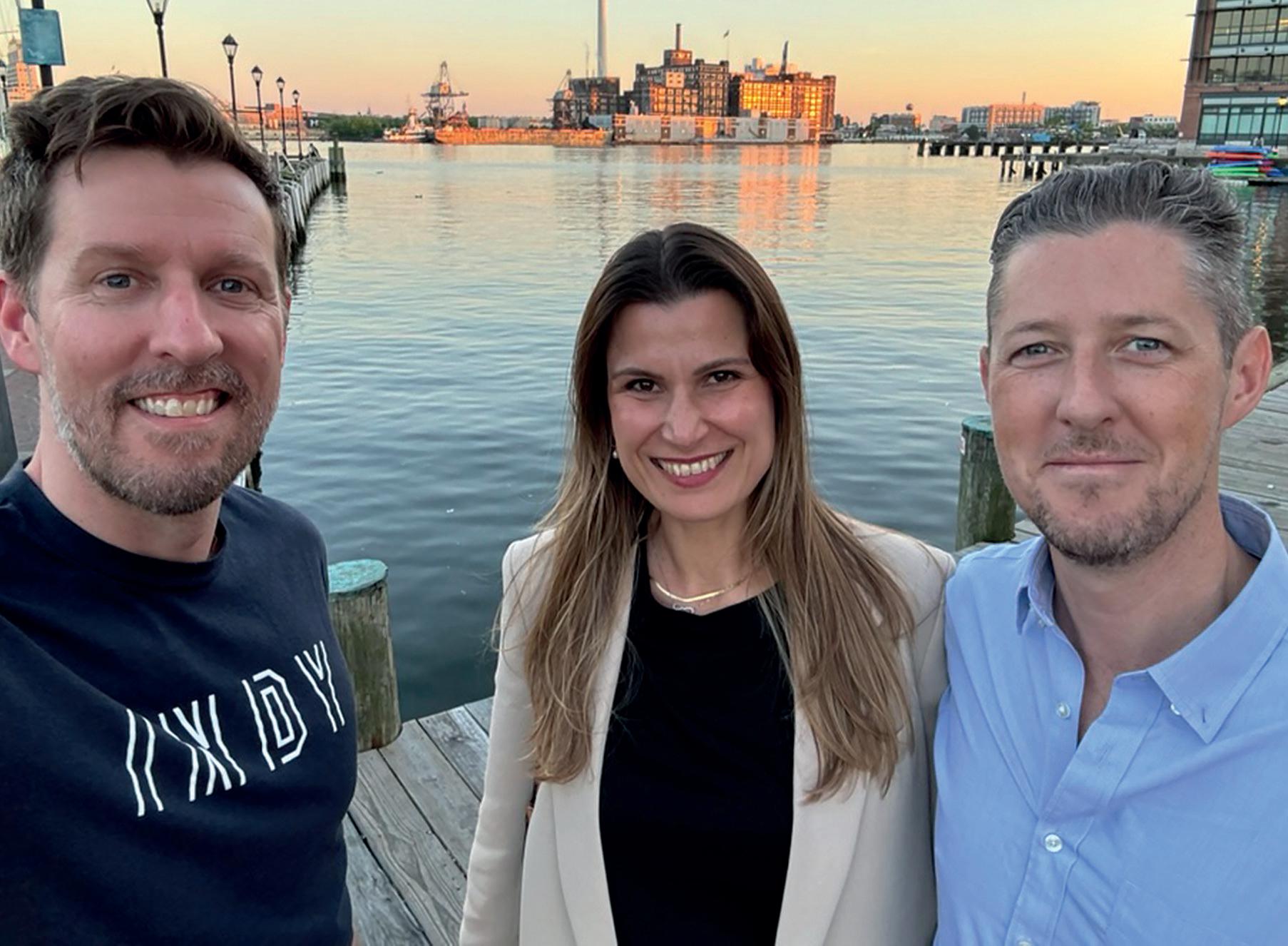
In 2010, after a decade with Cineworld, Ian Brown and his wife, Carmen Brown, founded INDY, inspired by their vision to reintroduce new-release cinema experiences to towns across Scotland. They began by transporting a 35mm projector around the country, transforming unconventional locations like hotels, town halls and castles into pop-up cinemas. This initiative quickly proved successful, leading to the establishment of eight permanent cinema locations and paving the way for the next phase of INDY’s evolution.
Peter Knight, Commissioning Editor, CT MagazineRecognising the broader potential of their business, Ian and Carmen expanded their venture by establishing a head office support company. This entity provided critical services such as film booking, marketing, and technical support, mimicking the functions of a central corporate office for their network of cinemas. Their model was so successful
that it prompted international expansion to Australia, New Zealand, and, ultimately, the United States by 2019.
Their American journey involved an extensive exploration of the market driving through every state in mainland USA, culminating in significant client acquisition before the pandemic brought an abrupt pause to their progress. During this unexpected downtime, a fortuitous meeting one year earlier had set the stage for INDY’s dramatic transformation.
Co-founders Ian Brown, Carmen Brown and Keith Walker.
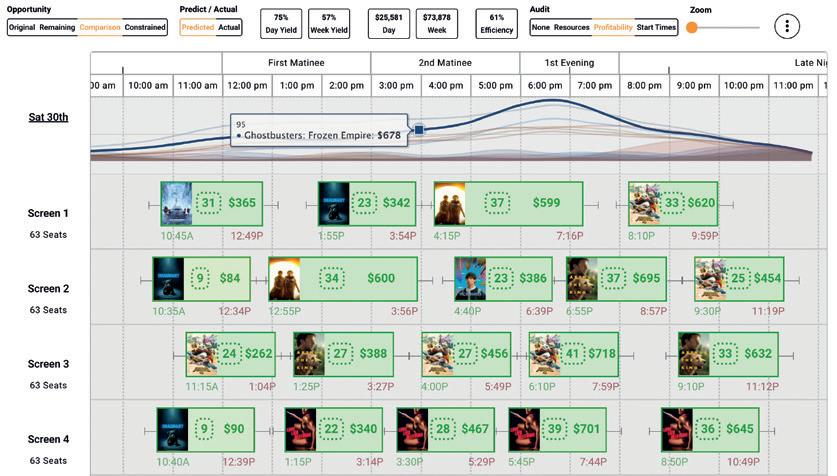
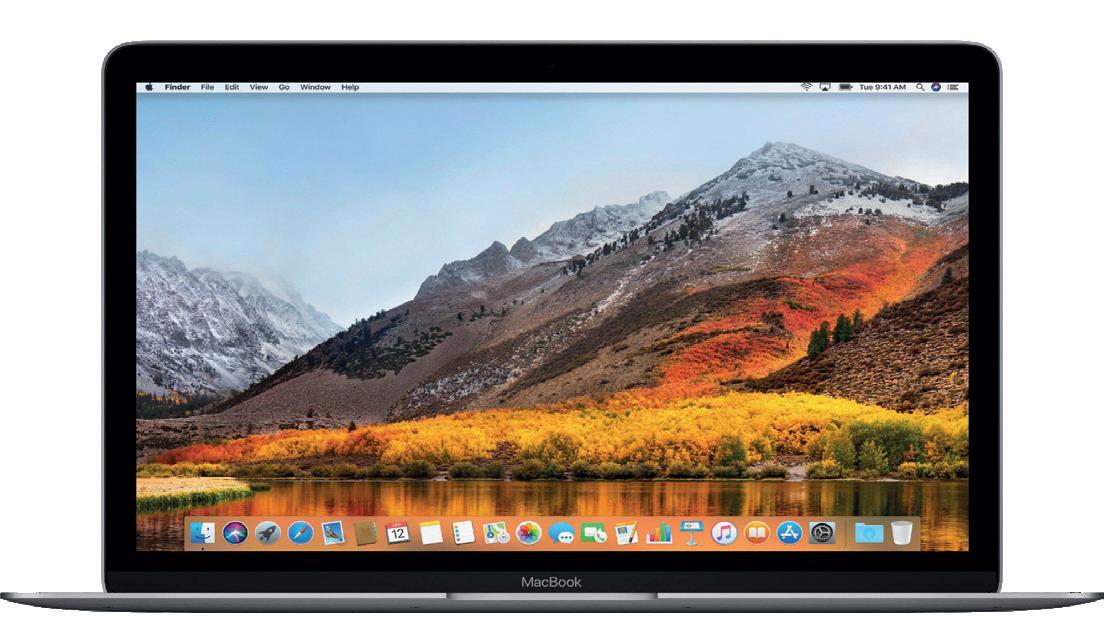

Keith Walker’s journey to co-founding INDY as the CTO is as unconventional as it is fascinating. Initially a rocket scientist with Lockheed Martin, Keith transitioned ultimately to the cinema tech world, contributing to several startups before his path led him back to his hometown of Oakhurst, California. Here, he faced a community crisis: the local cinema was closing down. In 2012, along with childhood friends Matt Sconce and James Nelson, Keith formulated a plan to save their beloved theater. They introduced a subscription-based model that not only kept the doors open but also transformed the cinema into a thriving community hub. This experience was Keith’s first foray into developing cinema-specific software, laying the groundwork for his future endeavours with Ian.
Keith’s skills and innovative mindset were further honed through his role as CTO at a Los Angeles-based startup. His path crossed with Ian Brown’s at CinemaCon in 2019, where their shared passion for enhancing cinema experiences sparked a collaborative relationship.
When the pandemic shuttered cinemas worldwide, Ian and Keith’s discussions, originally centred on developing an INDY point-of-sale system, became urgent. With cinemas asking for more robust engagement tools, the duo saw an opportunity to innovate. Working remotely—Keith from his Yosemite cabin and Ian co-ordinating with global cinema operators—they developed the INDY Operating System.
This platform was more than just a point-of-sale system; it integrated comprehensive CRM capabilities, digital marketing tools and advanced analytics to provide a holistic operating solution for cinemas. First tested in Keith’s own cinema, the system proved its worth and set a new industry standard.
The INDY Operating System quickly outgrew its initial market, appealing to large chains and independent cinemas alike. Its
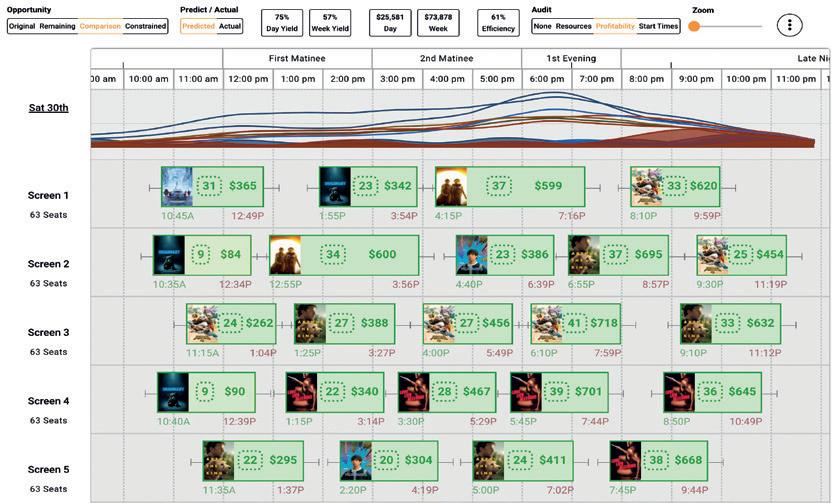
features included restaurant-level POS functionality, mobile POS options, and AI-driven scheduling tools. By addressing the diverse needs of cinema operators, INDY secured its position as a leader in the market.
Today, INDY supports over 300 locations worldwide online or onboarding, including significant chains such as Caribbean Cinemas’ with its 65 cinemas. Its development strategy, driven by user feedback, ensures each update enhances operational efficiency and user satisfaction.
Looking ahead, INDY aims to redefine the cinema experience further, venturing into new markets and continuously enhancing its system to support the evolving needs of its clients. With a robust technological foundation and a visionary leadership team, INDY is poised to maintain its trajectory as a transformative force in the cinema industry.
INDY’s story, from a mobile cinema project in Scotland to a global software innovator, exemplifies how visionary leadership and relentless innovation can turn challenges into opportunities. As INDY continues to evolve, its impact on the cinema industry promises to be as profound as the films it helps to showcase.
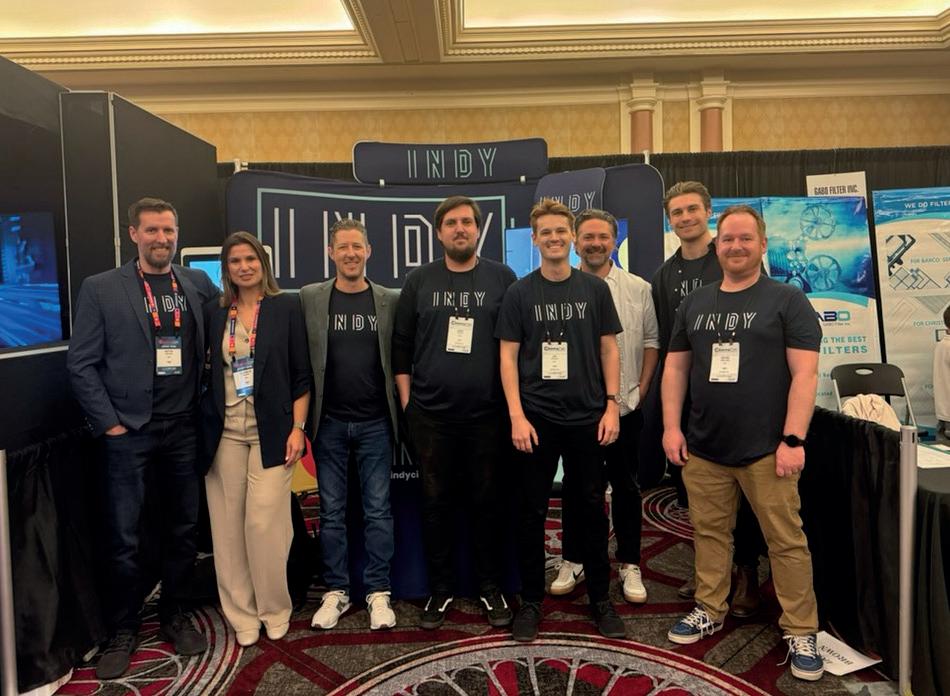
CineEurope
2024 takes place in Barcelona 17 - 20 June.
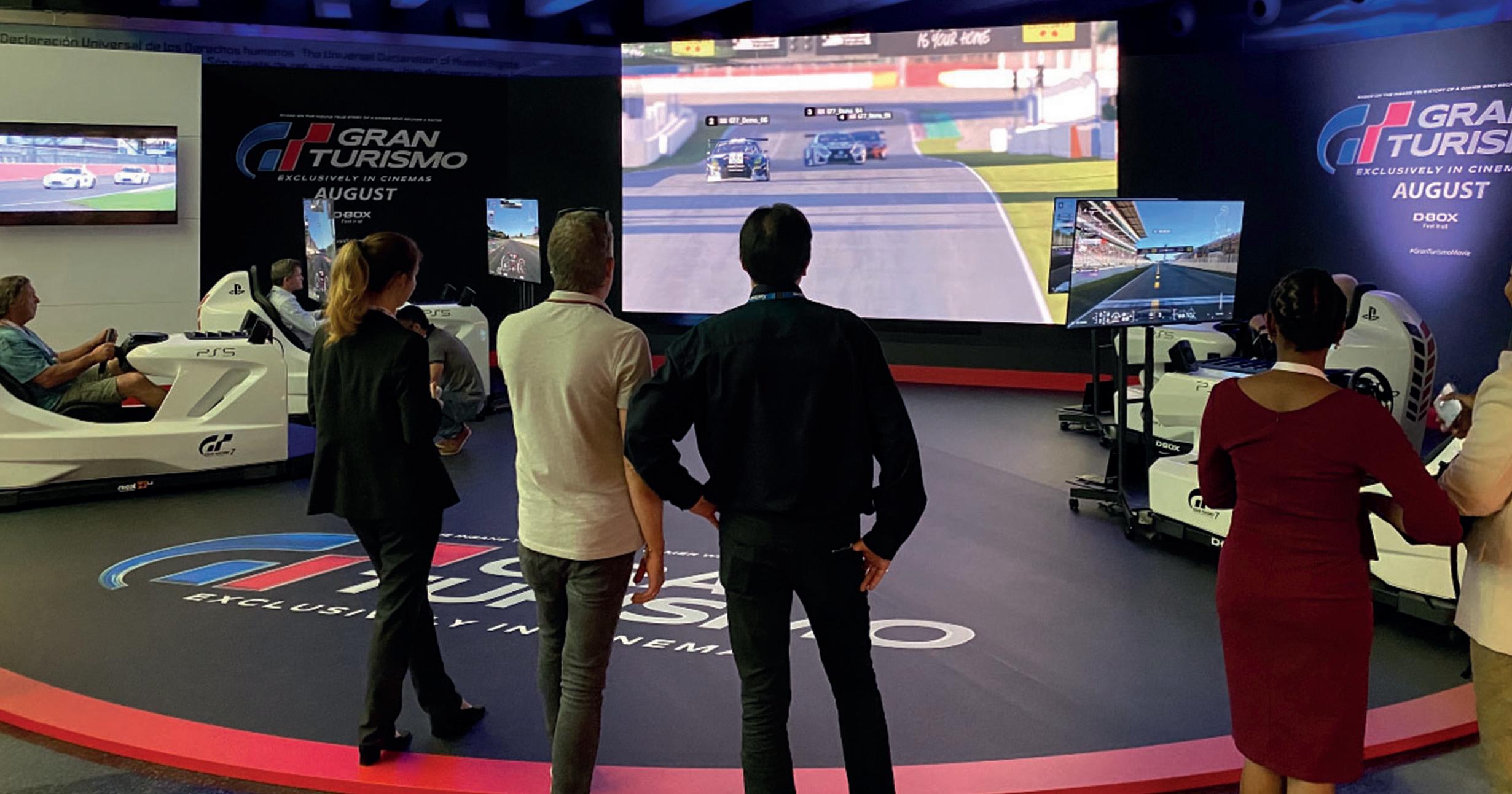
The industry will once again descend upon sun soaked Barcelona for Europe’s largest industry gathering, CineEurope again hosted by UNIC and the FilmExpos Group. The 12th time, Europe’s biggest movie convention has been held in Catalonia’s capital, the 2024 show promises to build on what proved to be a strong and upbeat 2023. The schedule will once again have a wide appeal to industry executives with diversity in content. A mix of seminar sessions will cover key business areas and current challenges, studio presentations and a trade show filled
with technology, seating and F&B providers showcasing their latest innovations.
CineEurope will once again provide a breadth of education content. Sessions will address people development and how we build leadership skills to ensure the industry remains well placed to attract top talent and retain it. Other sessions will focus around concept cinema designs and how they’re performing, technology innovation, a look at the latest industry data and how it informs our thinking and what some might think is a dystopian topic of unattended retail where frictionless

transactions take place without the need for human interaction.
As CinemaCon proved, despite a smaller slate due to the writers strikes, the second half of 2024 and 2025 look incredible not just for movie-goers but also for us as an industry and the studios will once again deliver a series of slate presentations showcasing upcoming content. Confirmed to present are Unifrance & Creative Europe, Picturehouse Entertainment, Mubi, Sony Pictures, Studiocanal, Warner Bros, Walt Disney Studios, Universal Pictures, Paramount Pictures and Angel Studios.
All the major keynotes and slate presentations will once again be held in the CCIB Auditorium. A collective team of Andy Peat Associates, Kelonik, MPS will once again deliver a state-ofthe-art auditorium featuring the latest technology offerings from the likes of Cinionic, Christie, Harkness, RealD and KCS.
Showing a respectable amount of growth and diversity from 2023, the trade show once again

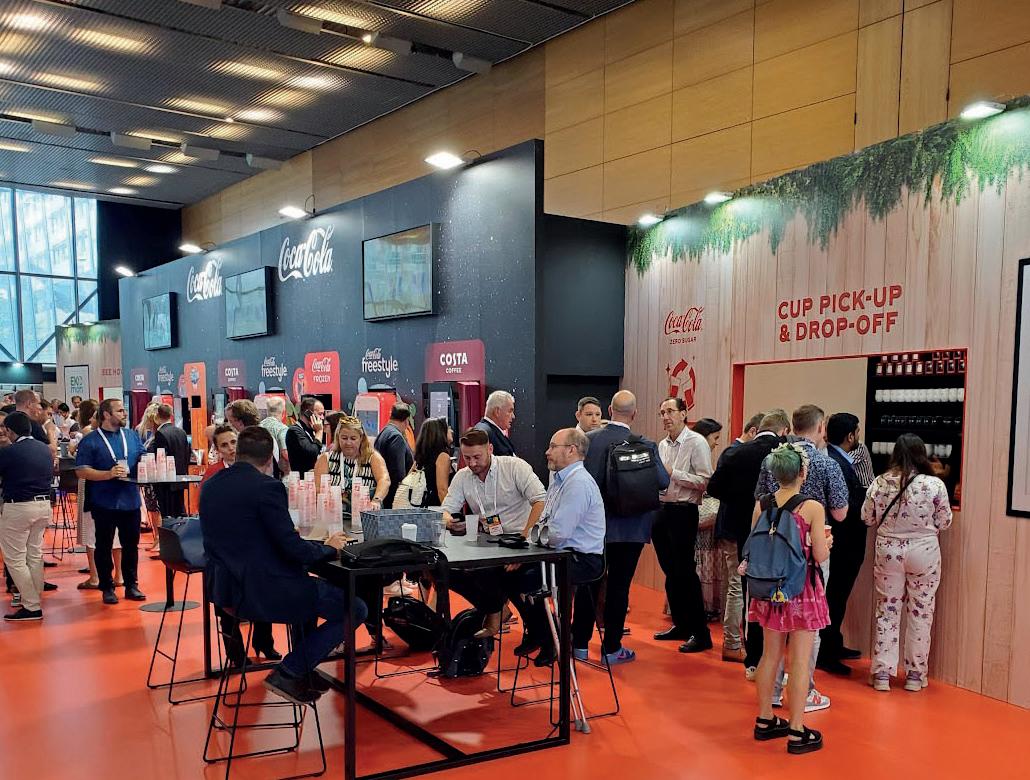
splits between the main floor and suites on levels 1 and 2 and acts as an anchor offering exhibitors the chance to meet manufacturers of concessions and equipment, software suppliers, integrators, installers and architects. There’s lots of exciting new developments across the industry as was demonstrated at CinemaCon, particularly in imaging technology.
As always, our team will be on hand to meet with attendees and sponsors. If you’d like to set up a meeting with the team simply email cineeurope@cinema-technology.com and our team will be in touch. As always we encourage you to take the opportunity to meet our sponsors. Here’s where you’ll find them.
You’ll be able to find updates from our non-exhibiting sponsors either via their web sites or by arranging a meeting with their representatives at the show. Deluxe (www.bydeluxe.com), RealD (www.reald.com), Audio Distribution Network (www.audionetwork.de) and Pres Global (www.pres.global).

What a fantastic week at CinemaCon 2024! It was great to see everyone in person and engage in cinema technology in so many ways.
As part of our mission of “providing a forum for education and the sharing of knowledge”, the ICTA was busy fulfilling that promise in Las Vegas at CinemaCon 2024. On Monday, the day before the trade show floor opened, ICTA hosted another edition of our popular “Fundamentals of Presentation Technology” seminar in two sessions. The “Fundamentals” seminar is a two-hour “crash course” intended for nontechnical management and staff who work in Exhibition. The curriculum covers Audio & Acoustics, Projection & Media technology, Networks, Maintenance, and TMS. ICTA has now presented this course at most major cinema industry events in the US and we plan to expand its reach in the future.
On the evening of the first day of the trade show, ICTA traditionally conducted its annual membership meeting and cocktail reception. This year, we tried something a little different. Wedged in between these events in a session called “CineTech Talk” hosted by ICTA President Frank Tees and well-known industry consultant Jerry Pierce, we invited members from other technology groups and organisations to an informal gathering to discuss a few key “technical topics” that affect other groups who work with cinema technology. About 75 members from SMPTE, ISDCF, EDCF, and ICTA gathered for a spirited and fast-paced discussion of topical issues affecting content production and delivery. All who attended felt this was a valuable session, and ICTA expects to continue this program at CinemaCon and other industry events.
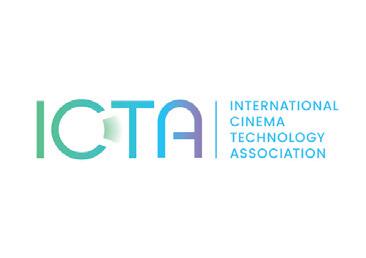
Finally, on the last day of CinemaCon, ICTA hosted a panel discussion on “Additional Revenue Streams: Family Entertainment Centers.” This session, led by Jeff Kaplan from Sharp Business USA, featured exhibitors and consultants in a discussion about the technical and business challenges of providing additional forms of entertainment to the cinema complex.
We continue plans to launch a pilot mentoring scheme in Europe focused on Cinema Technology. The program is intended to provide skills development and career guidance to junior and mid-level professionals working in the cinema technology space. These mentees, who may work for technology manufacturers, dealers, or cinema operators, will be paired with seasoned industry leaders in our community. They will receive personal advice during bespoke one-to-one mentoring sessions and at a number of team events. Any company or individual interested in participating should contact our European representative, Jan Runge at jan.runge@gmail. com.
The annual ICTA Business Convention takes place in Newport Beach, California, July 21 through 24. The location for this year’s event is the beautiful Bayview Marriott Hotel, where we’ll once again feature informative business and technical sessions, interesting field visits to local industry-related facilities, and of course plenty of time for networking and socialising. More information including registration and lodging is available at www.icta-web.com

Following our re-launch at the start of 2024 we have had a steady flow of members returning and engaging with the society. We also have new members joining and strengthening our Advisory Council with their substantial expertise. The Development Group we created back in 2023 has had a dramatic impact in shaping the new IMIS, this can be seen very effectively in our new website and particularly the members section which is proving to be an outstanding resource for industry professionals.
The ever-popular BKSTS Wall Charts continue to sell in surprising quantities to such an extent that we have had to reprint some of them. We have also added some heritage booklets to the shop. We are delighted to reaffirm our commitment to ensuring that a printed copy of CT magazine continues to be available and have added a subscription link in our shop.
One of the strongest parts of The Society’s offering has been the service we offer to Universities and Colleges around the UK in accrediting their broadcast and film production courses. We see this role of supporting students and course leaders in their endeavours to achieve the very best outcomes as a core activity of the new IMIS. Helping students into our thriving, multifaceted, continually developing industry is of prime importance to us and we will devote considerable resources to further expanding the service. All students
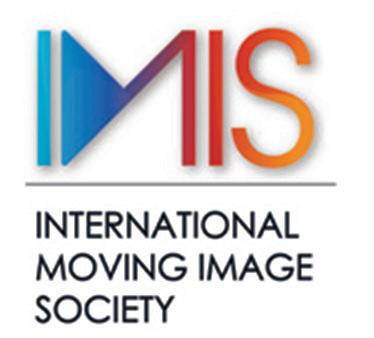
on accredited courses can apply for complimentary membership of IMIS.
We are very happy to report that our young member Elliott Hasler’s film “Vindication Swim” went on general release in early March, with Q & A audience sessions across the UK. The film did exceptionally well, continuing to run in cinemas through April and May. Elliott is now looking for international distribution.
We will soon be starting a series of virtual events recorded live at Pinewood. Kicking off with an interactive presentation and Q&A with Sony DMPC, our neighbour on the lot. Sony’s Will Newman discusses The Trends & Developments in Motion Picture Cameras and workflow with IMIS’s Mark Trompeteler and Peter Wilson.
Long term IMIS/BKSTS members Kommer Kliejn and Peter Wilson are writing a series of exclusive articles for CT magazine to open a debate on Colour Variation in Cinema. Over the last decade, DCI has served directors and producers well in ensuring what they see in the cinema matches what they signed off on back at the studios screening room. Are the standards keeping up with the latest projection technology? Intrigued? Look out for Peter and Kommer’s articles in upcoming editions of CT magazine.
See more of what we are about and join us at: https:// movingimagesociety.net/
Important Note: To IMIS/BKSTS members. If you are reading the printed copy of this magazine, please email info@movingimagesociety.net confirming your postal address to continue receiving a copy.
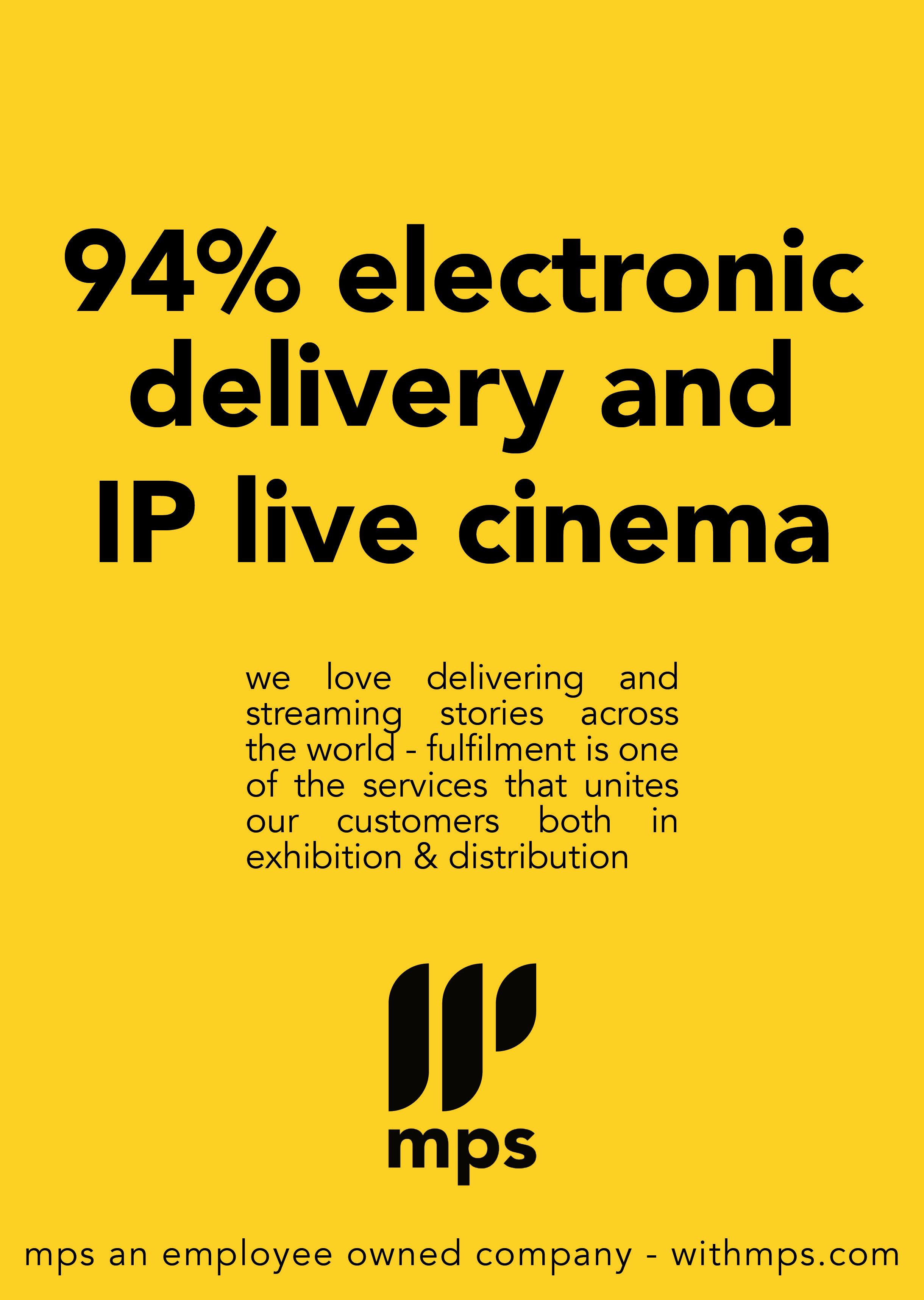
The year 2023 was great for European cinemas, witnessing a staggering 21.5% growth in ticket sales! Bolstered by blockbuster hits like Barbie, Oppenheimer, Spider-Man: Across the Spider-Verse, and The Super Mario Bros. Movie, along with a strong popular national releases such as Italy’s C’è ancora domani, Norway’s Den første julen i Skomakergata, Czechia’s Onemanshow: The Movie, Poland’s Chłopi, France’s Astérix et Obélix: l’Empire du Milieu and Serbia’s Cuvari formule just to name a few. With box office revenues surging by 25%, total box office earnings soared to an impressive €7.2 billion. Notably, several territories surpassed their pre-pandemic average results, such as the Netherlands with a 4.6% increase in revenue. Other countries like Germany, France, Italy, and Spain also posted significant gains, showcasing the enduring allure of the Big Screen. Local films also made their mark, with countries like France, Romania, Italy, Norway, and Denmark celebrating their domestic cinematic talents. Projections for 2024 are also on an upward trend with Gower Street Analytics revising its 2024 Global box office projection to $32.3 billion. EMEA saw a significant increase of $463 million in its forecast from predictions in January, driven by strong performances in Italy, UK and Ireland, Spain and the Netherlands.
UNIC was active on multiple fronts during the first few months of the year, both from an industry and policy perspective. In March, UNIC also held its Retail Group Meeting in Tallinn, in partnership with Coca-Cola. The UNIC Retail Group engages cinema operators from across Europe in a collaborative discussion on contemporary retail trends

within the cinema industry. The meeting was hosted by UNIC member Apollo Kino, operating 17 cinema sites in the Baltics, as a branch of a leading entertainment company managing a bookstore chain, restaurants and café franchises, film production and distribution, entertainment centres and a cinema sales software. During the Tallinn get-together, attendees convened to explore recent and forthcoming shifts in customer journeys, exchanged insights on implementing circular economy practices, and showcased
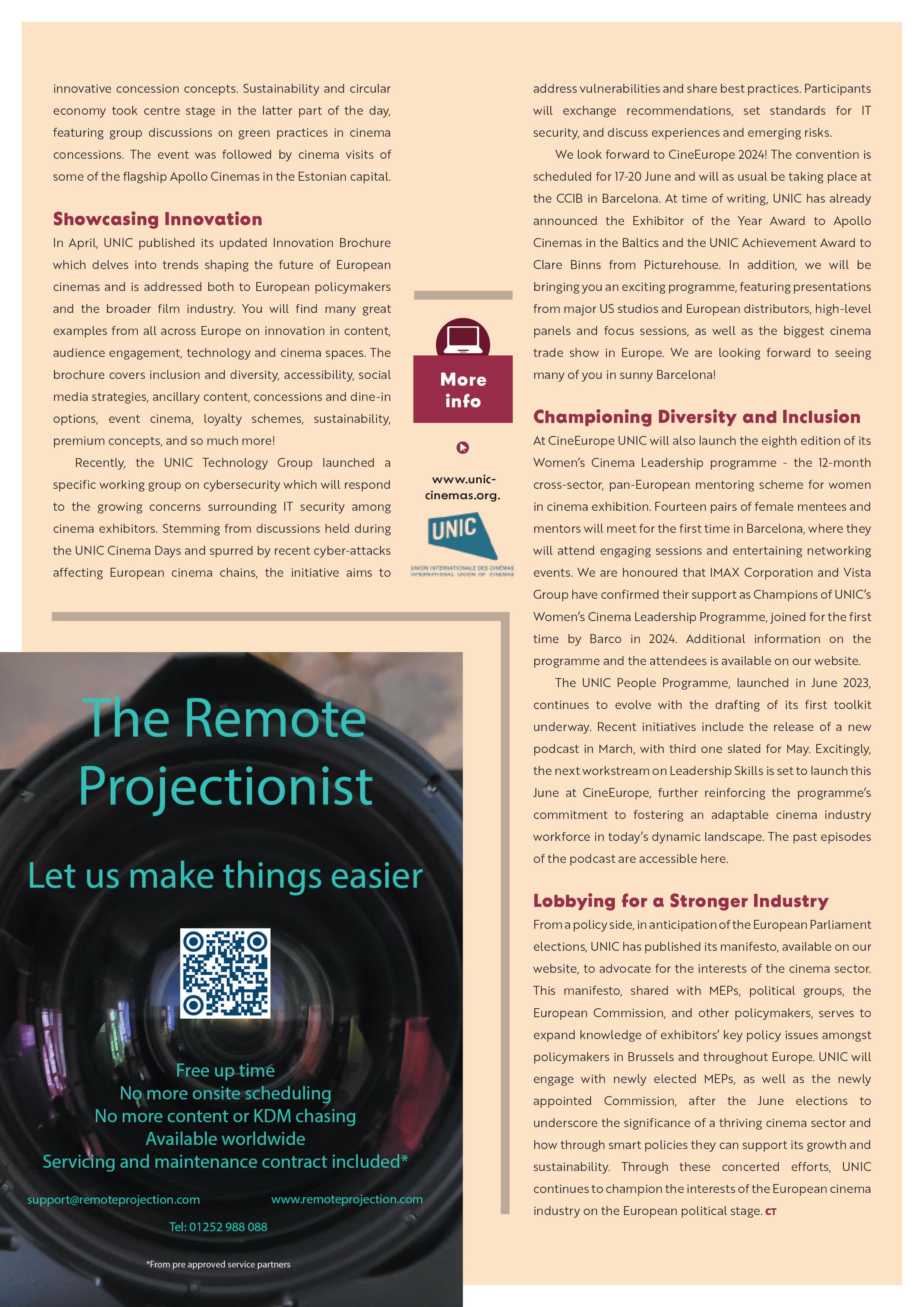
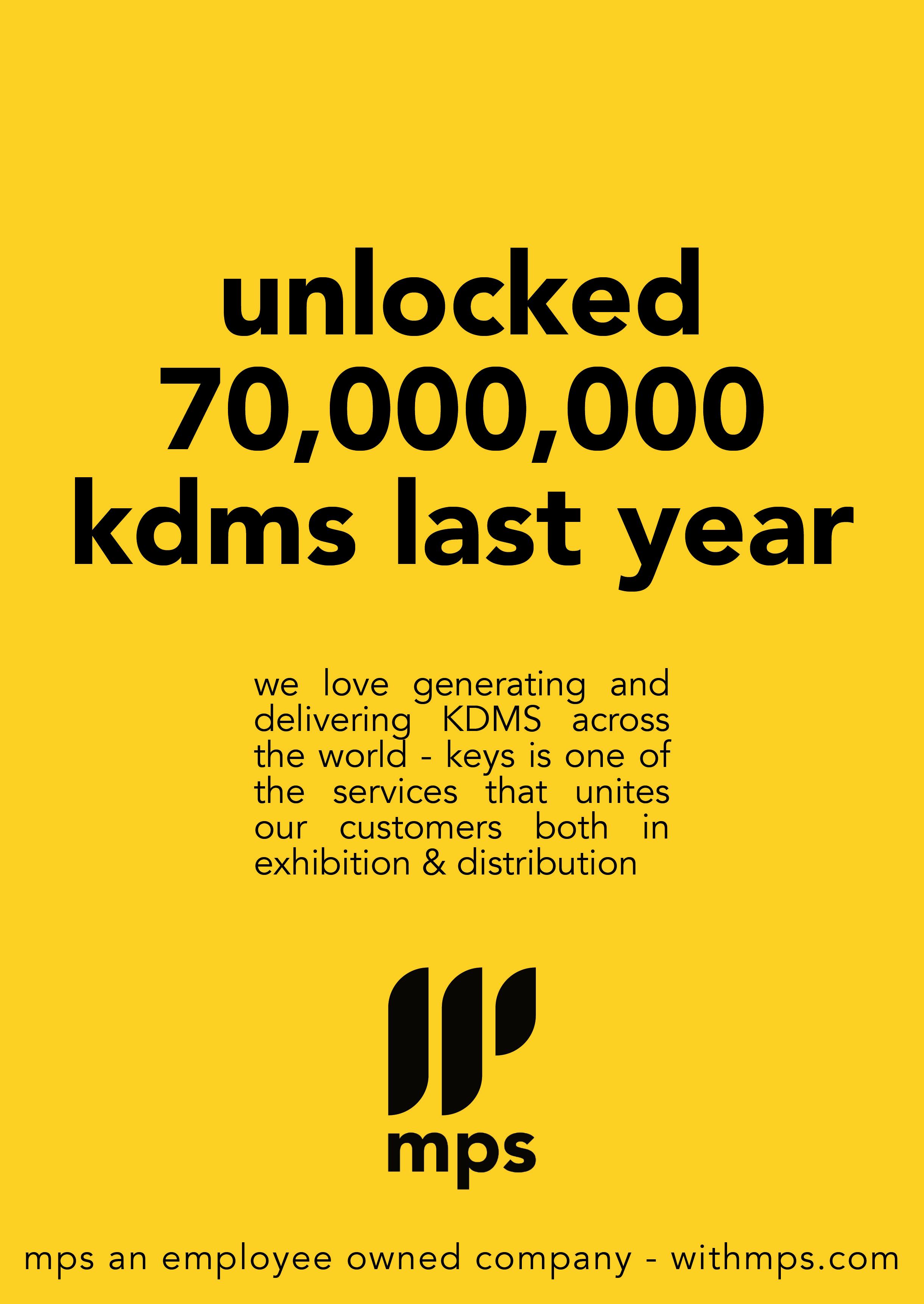

In the March edition of Cinema Technology Magazine, we took an in-depth look at PaperAirPlane Media. Founded by former Lionsgate executives Mike Polydoros and Will Preuss, PaperAirplane is the first-of-its-kind Cinema Channel Marketing Agency. Designed to work with Exhibitors, Studios and Marketplace Partners to create a one-stop solution for all cinema channel and in-theatre marketing opportunities. PaperAirplane is uniquely positioned in the marketplace to assist in the creation, coordination and logistical support needed in today’s world of Cinema Marketing. In this edition we meet Mike Polydoros, an industry veteran of more than 40 years who will shortly be walking the halls of CineEurope as the PaperAirPlane Media look to expand their operations beyond North America.
CT: Tell us about your background?
This is pretty much the only industry that I know. I actually started in the business when I was 17 as an Usher at the famed Egyptian theatre in Hollywood. From there I worked for UA Theatres for 8 years including as General Manager for 4 at the flagship Westwood location. I also worked for Mann Theatres in the home office and then transitioned to the Studio side. I worked for Lionsgate for over 23 years overseeing In-Theatre Marketing and Distribution operations. I also did Box Office and Marketplace Analysis for the company. In 2020, and at the ripe young age of 58, I became a first-time entrepreneur as Will Preuss (also formerly of Lionsgate) and I started PaperAirplane, the first of its kind Cinema Marketing Agency.
CT: Tell us about your current role. What does your day to day look like?
The great thing about PaperAirplane Media is that every day is different. We currently work with virtually every studio, exhibitor and marketplace partner in North America. We work on everything from Tentpole titles to very limited releases. So no two days are the same.
CT: Having spent so much time working within studio marketing, what do you see as the biggest pain points for both studios and exhibitors in marketing movies?
How to reach the audience has changed dramatically. It used to be that a Studio could put a strong TV Campaign together and that would drive the audience. That is no longer the case. With audiences so fragmented, we need to be much smarter and efficient in our marketing.
“...we need to recognise how valuable the exhibitor marketing channels can actually be in marketing films.”
CT: What do you think we need to do better as a sector to drive audiences?
As and industry we need to recognize how valuable the exhibitor marketing channels can actually be in marketing films. We also need to devote resources to take advantage of those channels. That is part of what we do at PaperAirplane.
CT: How can technology play a bigger part in driving those audiences?
When you take a step back, much of our business is based on the rules of the 35mm analogue world. We now live in a digital age and we need to do a much better job in utilising new technologies to help drive audiences. One of the first things we did at PaperAirplane was to develop a one stop shop (THE HANGAR), a Digital Asset Manager
whereby all assets for all films could live, thus making it easier and more efficient for exhibitors of all sizes to market films to their audiences.
CT: You’re also heavily involved with Variety SoCal, what does that involve and how has the Southern Californian movie industry helped to enrich the lives of children with special needs?
I am currently Chairman of Variety of Southern California and I am very proud of what we as a charity and an industry have been able to give back to the community. We are lucky to work in the film industry and sometimes take how fortunate we are for granted. Mobility is a key issue for us, and being able to provide an adaptive bike for a family who may be less fortunate and see how that changes their lives when their child is able to ride in the neighbourhood and just be a kid, is pretty special.
CT: This year, you’ll be attending CineEurope representing PaperAirplane Media, what are you hoping to get out of your time in Europe? Domestically we have really become a trusted partner to the industry. I am looking forward to learning more about how the industry in the rest of the world works. We have had a tremendous amount of interest about bringing our services (especially THE HANGAR) into other territories and I am hoping we can figure out how to solve some of the similar issues as we have in America.


































Visit Barco at CineEurope
Location: MR 111 – P1 Level








